8 Wildlife Sanctuaries and Refuges You Can Visit Across America
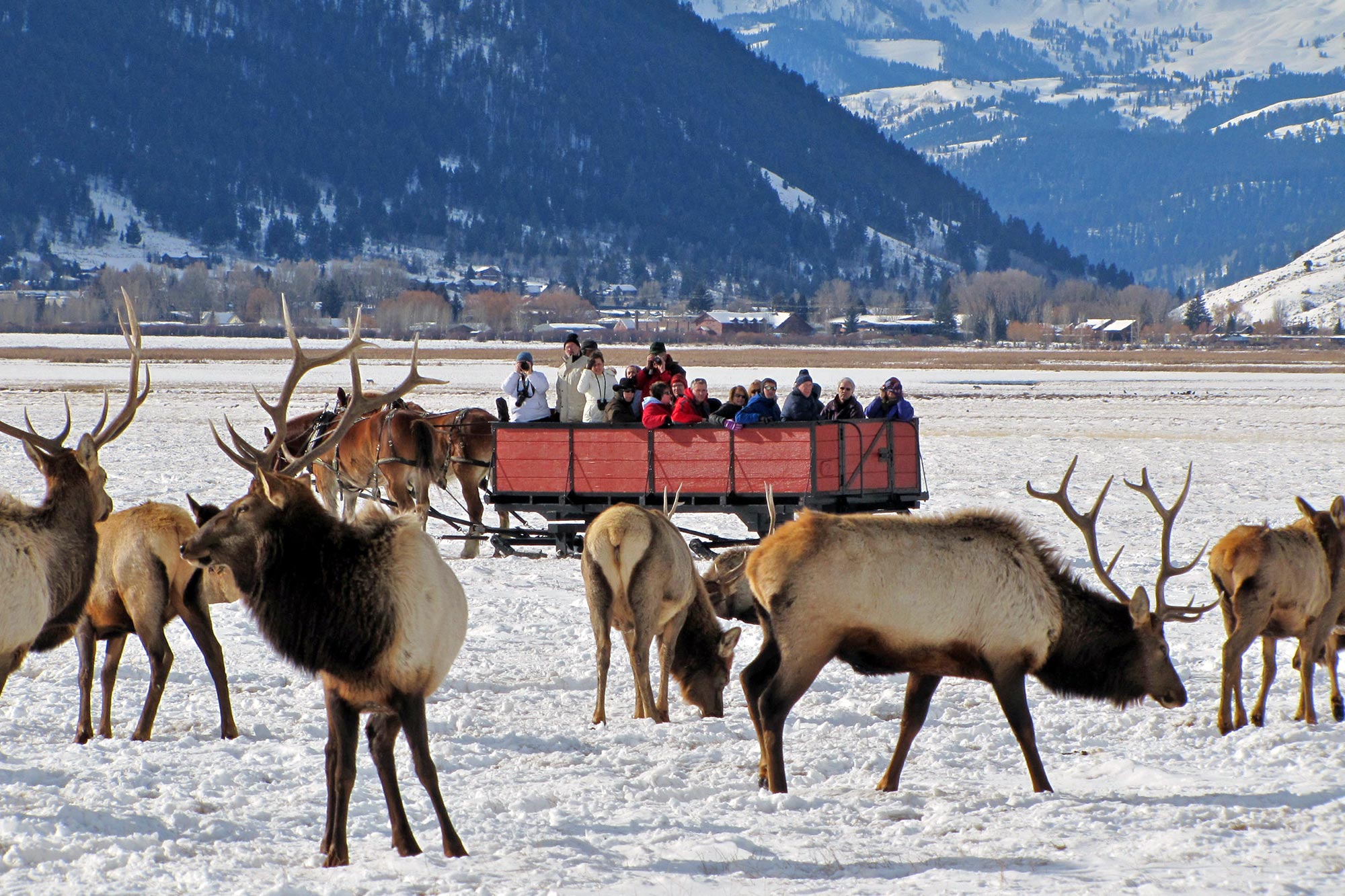
A good reason to go for a hike or pitch a tent and sleep in the dirt is to become more connected with the natural world. Perhaps that is one of the reasons so many people are drawn to visit wildlife sanctuaries and refuges. These areas exist for the sake of the animals, not the humans. But it’s a win-win when animals can benefit from the monetary support of visitors, and humans can develop a better understanding and appreciation for the animals who call those places home.

Heed the Call of These Wildlife Sanctuaries Across America
Wildlife refuges, wildlife sanctuaries and wildlife preserves vary in location, size, animals and activities offered. Each one will be different, but there are often certain standards or certifications that must be met for an area to be considered a refuge, sanctuary or preserve.
Wildlife sanctuaries are spaces for animals to exist in a wild and natural habitat, without being bred, sold, or otherwise mistreated. Wildlife refuges exist in wild areas and are often protected by the government as a National Wildlife Refuge . These exist for the sake of the animals that live in them and are often intended to keep specific animal populations at healthy numbers.
While some National Wildlife Refuges will restrict hunting or fishing, many allow it with careful permitting in order to manage overpopulation of certain species, as well as for the enjoyment of those who visit the refuges and wish to connect with nature in that way.
When visiting wildlife refuges, sanctuaries and preserves, direct interaction with the wildlife or animals is generally not permitted. While you’ll typically have the opportunity to view the animals in their natural habitat, touching, feeding or other direct interaction with the animals would be contrary to the purpose of the refuge, sanctuary or preserve.
From Alaska to Florida and everywhere in between, these wildlife sanctuaries and refuges offer a place for humans to experience and connect with nature and wildlife on a deeper level. Take a hike or nature walk, camp nearby, and learn more about these places and the wildlife that call them home.
1. Wolf Haven International, WA
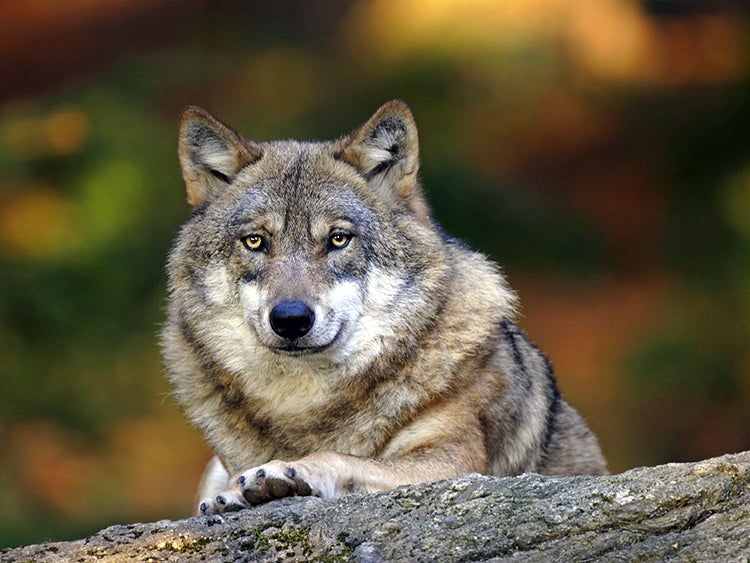
Wolf Haven International is a sanctuary for wolves located outside of Seattle, Washington. Whether from zoos, privately-owned attractions or elsewhere, Wolf Haven’s goal is to rescue these meant-to-be-wild animals from unhealthy captivity and give them a safe place to exist in a habitat that resembles their natural, wild one. Wolf Haven is accredited by the Global Federation of Animal Sanctuaries and recognized by the American Sanctuary Association .
In order to visit the sanctuary, you’ll need to make a reservation. Visits to Wolf Haven cost $14 per person. Once you’re there, you’ll be able to take a guided tour of the sanctuary as well as a self-guided nature walk with chances to see multiple grey wolves.
Camp nearby at American Heritage Campground , where you’ll find a plethora of amenities, including tent and RV sites, full hookups, fire rings, picnic tables, a convenience store, swimming pool, park and more.
2. McNeil River State Game Sanctuary and Refuge, AK
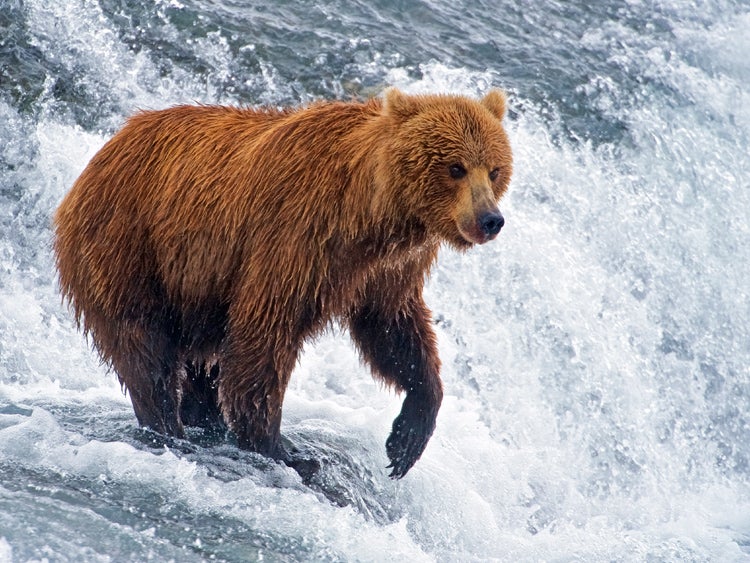
It’s not easy to get to, but visiting McNeil River State Game Sanctuary and Refuge on the Northern Alaska Peninsula in the Aleutian Mountains is worth the trek. The area is famously known for its salmon and brown bears that crowd the river. The best site to catch bears catching salmon is along the McNeil River just below McNeil River Falls. From a platform above the river, you’ll be able to watch the bulky and majestic brown bears hunt for spawning salmon as they race up through the spilling river. Hundreds of bears reside in the preserve, and you’re likely to see dozens at a time on your guided visit.
You’ll have to acquire a permit to visit this special spot: Only 10 visitors are allowed near the river and falls at a time, for the safety of both the bears and people. There’s an application fee of $30, and a permit fee of $225 for Alaskan residents and $525 for non-residents for guided viewing permits .
Viewing happens in the summer months, when the salmon run. You’ll have to book a float plane to access the area, and tent camping is available within the preserve and includes a cook shelter, restrooms and all the necessary amenities for the trip of a lifetime.
3. Black Hills Wild Horse Sanctuary, SD

Mustangs still run wild in South Dakota. At Black Hills Wild Horse Sanctuary, you’ll find mustangs thriving in their natural environment of grassy green hills and wide-open fields. You can get a taste of the sanctuary on a three-hour private tour, where you’ll be able to view and photograph dozens of wild horses. To book a tour, you must register in advance; tour price is $150 per person.
Those looking for an extended and more unique experience can book a weekend at the sanctuary and experience a tour to a more private “Hidden Sanctuary” ($1,500 for one to two people). The sanctuary offers a few different quaint cabins and villas for guests to book.
If you’d rather rough it, you’ll find camping near the Black Hills Wild Horse Sanctuary at Sheps Canyon Recreation Area , where you’ll find myriad activities like fishing, hiking and canoeing to complement your wild horse adventure. You’ll find a variety of tent campsites (both with or without electrical) and reservable cabins in this scenic spot just 13 miles from Black Hills Wild Horse Sanctuary.
4. Savannah National Wildlife Refuge, GA/SC

The 31,551 acres of Savannah National Wildlife Refuge are a harbor of quintessential southeastern U.S. landscape and wildlife habitat. Here, you’ll see American alligators slinking through the tidal freshwater marsh or crossing hiking trails. You’re also likely to spot local bird species and even bobcats around the refuge. Take a scenic drive or hike through the refuge to immerse yourself in the wild wetlands and hardwood forests. Savannah National Wildlife Refuge is open in the daytime to visitors with no entrance fee required.
Find camping nearby at Camp Lake Jasper on the South Carolina side of the refuge just a short drive away. This RV resort has plenty of amenities including WiFi, hookups, restrooms, a market and more.
5. Norman Bird Sanctuary, RI
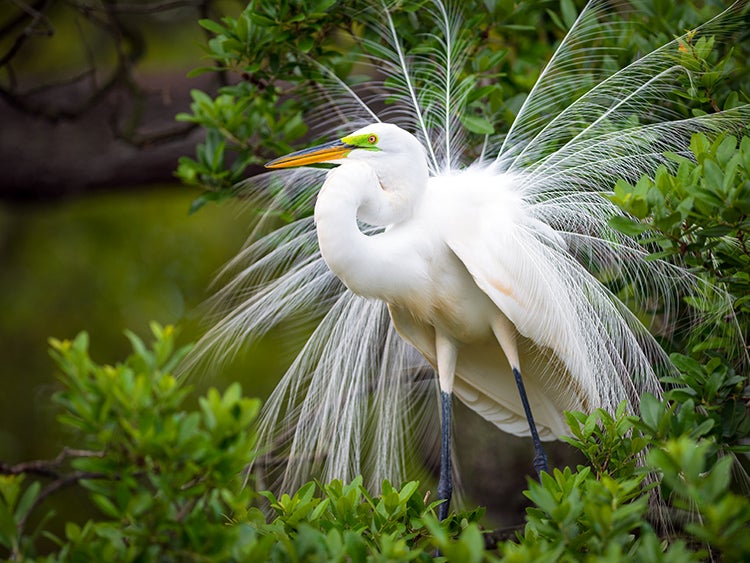
The privately-owned Norman Bird Sanctuary is dedicated to conserving the natural wildlife of New England, not just birds, though birds are the main attraction. You’ll find a plethora of feathered creatures, from bright-green-headed mallards to chickadees, at this seaside sanctuary on Rhode Island’s Aquidneck Island. For a $7 fee you can hike one of the tranquil trails through the sanctuary to spot birds while inhaling fresh ocean air.
Camping isn’t always easy to come by in this tiny state, but you’ll find the perfect spot to post up near Norman Bird Sanctuary at Sachuest Beach Family Campground . Park your RV or pitch your tent right on the Atlantic after a day at the sanctuary.
6. Yellowstone Wildlife Sanctuary, MT
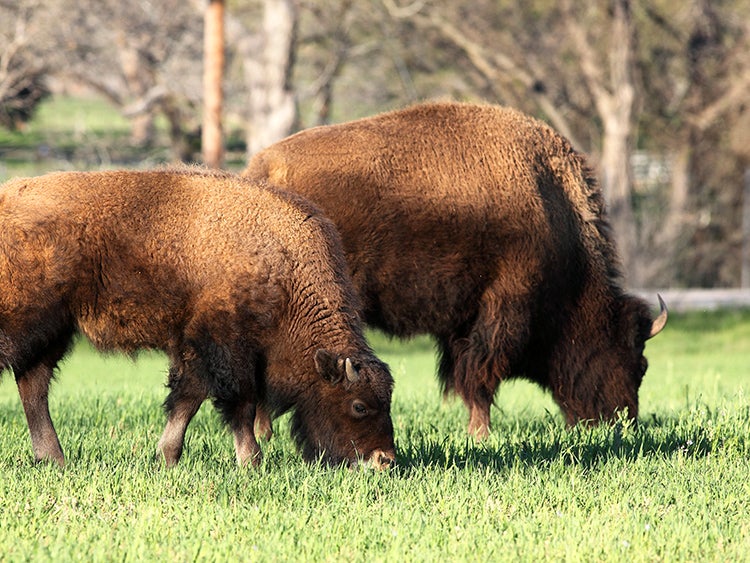
The Yellowstone area is known for its beautifully diverse wildlife populations, and the Yellowstone Wildlife Sanctuary in Montana is one of the best places to experience it. The sanctuary provides a space for wild animals native to the area that are unable to be released back into the wild. On your visit you’ll learn about the importance of the Yellowstone ecosystem and the importance of protecting and preserving it.
On your visit you’ll see wildlife that the West is known for, like bison, black bears, gray wolves, red fox, hawks and more. You can explore the sanctuary on your own for a $10 entrance fee, or book a guided tour for $25.
The camping nearby the sanctuary outside of Red Lodge is no consolation prize; it’s a worthy stop with stunning Montana scenery. Crawl into your sleeping bag at Basin Montana Campground for a peaceful night in the mountains.
7. National Elk Refuge, WY

Wyoming’s National Elk Refuge is host to the Jackson Elk Herd. The refuge preserves habitat for these elk and their neighbors, like bison, bald eagles and bighorn sheep. Take a tour of the refuge on the walking path, or take a sleigh ride in the winter to spot elk in their natural habitat. Visit in the fall for rut season when you’ll hear the elk bugle.
You’ll find plenty of camping near the refuge and in the greater Jackson area, given that Grand Teton National Park is just next door. Pitch your tent at Jenny Lake Campground or book a cabin at Jenny Lake Lodge for a more-than-worthwhile visit.
8. Florida Keys National Marine Sanctuary
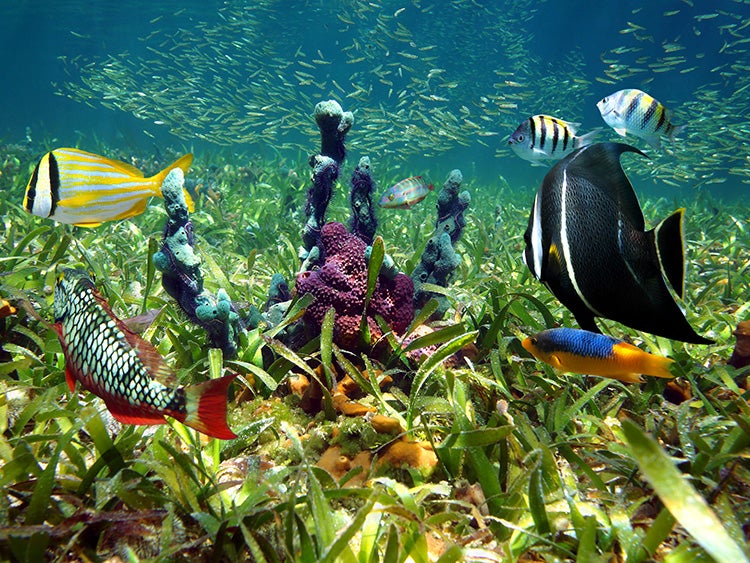
Sure, most wildlife sanctuaries and refuges may be on the ground, but underwater sanctuaries are equally important. It has become quite apparent that coral reefs are an endangered ecosystem , and sanctuaries like this one help to preserve the reef and all of its residents. Visit the Florida Keys National Marine Sanctuary to see one of the world’s largest barrier reefs teeming with aquatic life, like dolphins, sea turtles, jellyfish and so much more. You can visit the Florida Keys Eco-Discovery Center to learn more about the sanctuary and marine habitat, or book a tour with a private company to snorkel in or near the sanctuary.
Camp at Riptide RV Park on Key Largo for an island camping experience right on the edge of the sanctuary’s waters. The campsites offer basic amenities like restrooms and electric and water hookups, or motel rooms can be booked at the same location.
Related Campgrounds:
- Burlingame Campground , Charlestown, RI
- Campgrounds in Newport RI , Newport, RI
- Myakka River State Park Camping , Sarasota, FL
- Creekfire RV Resort , Savannah, GA
Popular Articles:
- Get the Latest 2024 Camping Travel Trends
- How To Find Free Camping in National Forests
- The Checklist Every First Time RVer Needs
- Find Free Camping With The Dyrt Map Layers
- The Ulimate Boondocking Guide To Free Camping
- Everything You Need To Know About Wifi For Your RV
- 7 of The Best Overland Routes in North America
- 14 Wilderness Survival Tools You Should Have in The Backcountry
- Here's What To Add To Your Primitive Camping Checklist
Stasia Stockwell
Stasia is a sucker for mountains. Since growing up in northern Utah, studying English in Denver, and guiding in southeast Alaska, she now calls the Tenmile Range of Breckenridge, Colorado home. She spends as much time as possible outside, trail running, skiing, and mountain biking with her husband and dog. When she's not writing or out in the backcountry, you'll find her in the kitchen cooking or baking something new. Along with writing for The Dyrt, Stasia is a regular contributor for Backpacker Magazine.
More Articles

Owning a Dog Isn't Always Awesome for People Who Love the Outdoors
It’s a beautiful sunny day. Blue sky above and green trees line a dirt path. Your dog bounds down the trail, turning back just before…
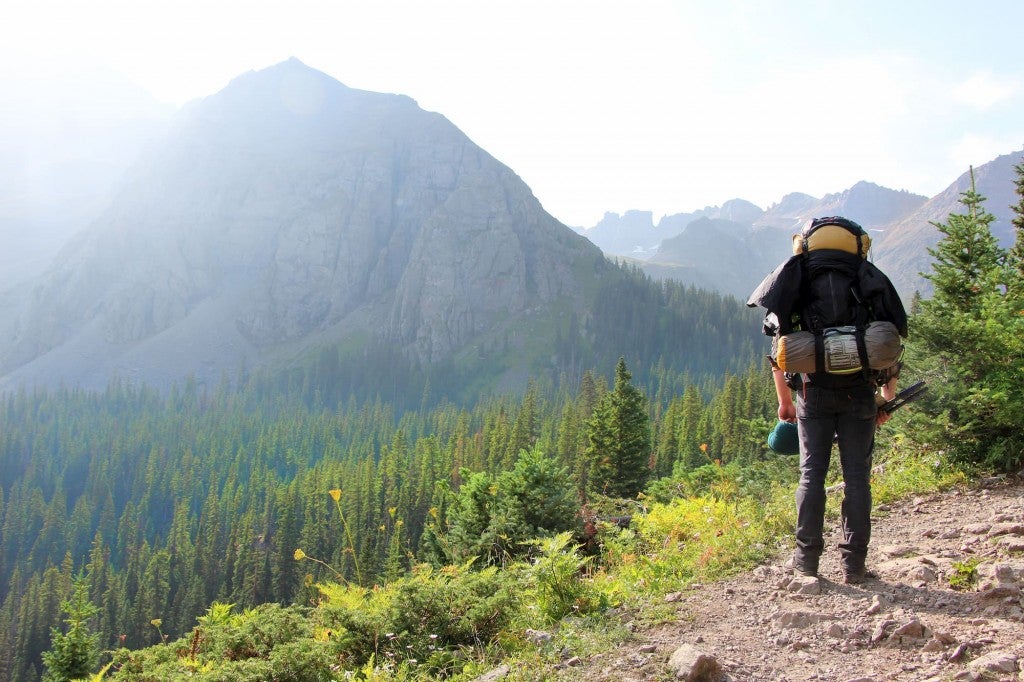
8 Colorado Backpacking Trips You Shouldn't Miss
This Colorado backpacking guide was brought to you by Gregory, the makers of backpacking packs that fit comfortably and fit all of your gear for…
Wanderlust Travel & Photos
Seeing the world one trip at a time.
- Work With Me
- Travel Journal
- Privacy Policy
- Browse by Continent
- Thailand Travel
- Australia Travel
- Peru Travel
- Browse by Region
- East North Central
- East South Central
- Mid-Atlantic
- New England
- South Atlantic
- West North Central
- West South Central
- Central America
- North America
- South America
- Travel Vlog
- Instagram Photos
The 25 Top Wildlife Destinations in the World
LAST UPDATED: 2/4/24 – Top Wildlife Destinations in the World
There is some absolutely beautiful, amazing, and overall fantastic wildlife in this world that most people will never see outside of a zoo. Each wildlife destination offers its own unique sets of animals and landscapes to explore. Whether it be on the plains of Southern Africa, the mangrove swamps of India, or the jungles of South America or Southeast Asia, this world has so much wonderful wildlife and so many great places to view it. With so many wonderful options, it was really, really difficult to narrow this list down to just the Top 25 wildlife destinations in the world.
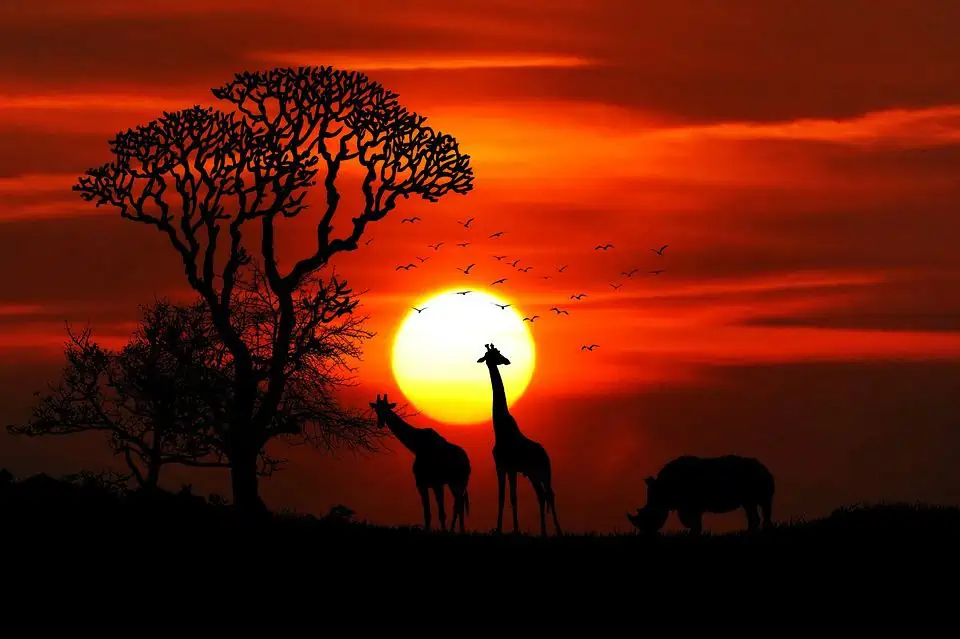
My Criteria for Evaluating Wildlife Destinations
When composing my list of the Top 25 wildlife viewing destinations in the world, I used several different factors to choose and ultimately rank my choices for the best destinations. These criteria included the following:
- The quantity of wildlife
- The diversity of wildlife
- The scarcity of the wildlife
- The ease of seeing the wildlife
In my opinion, what makes a destination a great wildlife viewing destination isn’t just the amount of wildlife that lives in that area. While that is important, the diversity and the scarcity of wildlife are equally as important. If a destination is the last place on Earth where you can see a particular animal, that makes that destination special. Just as having a large diversity of wildlife can really set a wildlife destination apart from other destinations.
It is also important to have a reasonable opportunity to see wildlife when you visit a wildlife destination. Getting to most of these destinations isn’t cheap. If you are going to invest the time and money to travel to one of these destinations, you want to have a reasonable chance of seeing the animals you came to see. Most of us understand that nothing is guaranteed, but having a reasonable chance to see amazing wildlife will set one destination apart from others. So without further ado, here is my list of the top wildlife destinations in the world.
25. Everglades National Park, USA
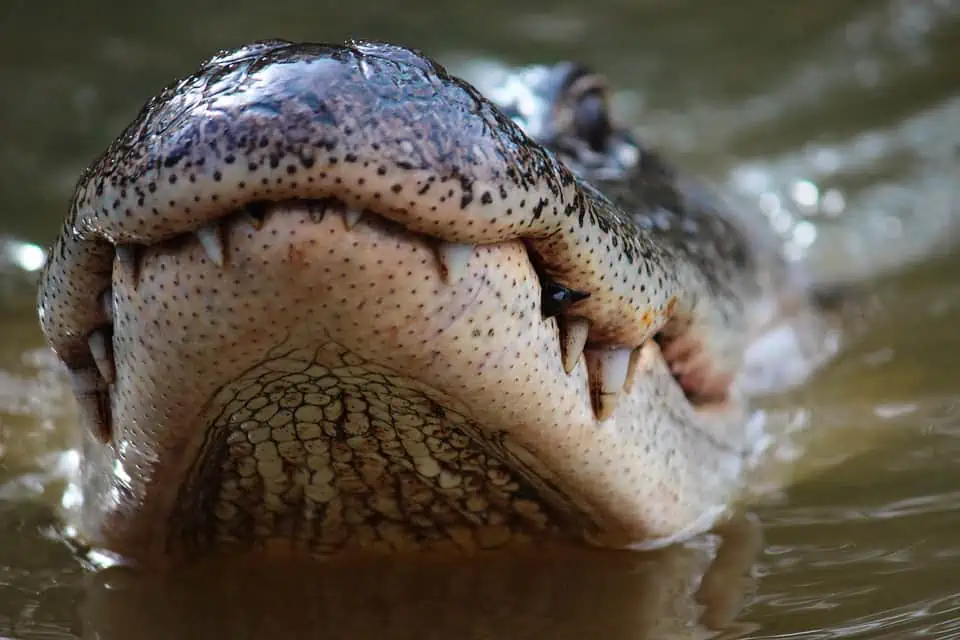
In addition to being one of the most unique ecosystems found in North America, the Everglades is also one of North America’s best wildlife-viewing locations. Found in the very Southern part of the state of Florida, the Everglades National Park is home to a wide range of unique and interesting animals.
In addition to the North American Crocodiles and Alligators that the park is famous for, Florida Panthers, American black bears, and lynx can also be found in the forests surrounding the wetlands. Off the state’s shores, the loveable manatees are another big attraction for wildlife enthusiasts.
Wildlife You Might See
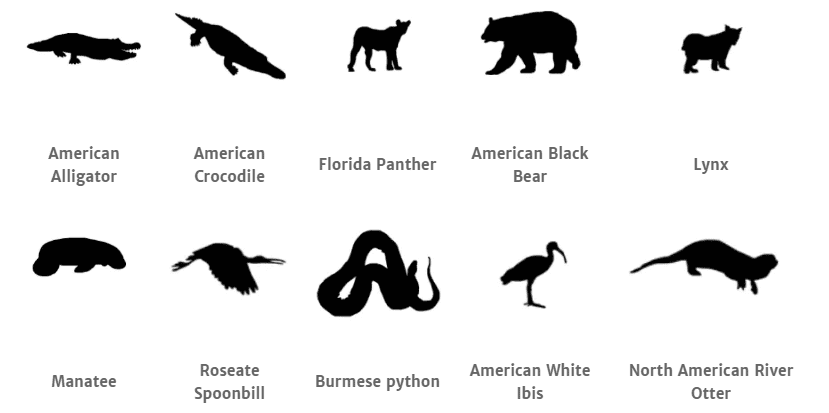
Best Time to Visit
The best time of year to visit the Everglades National Park is during the dry season, which lasts from December until April each year. During this time the temperatures are very comfortable, with highs in the upper 70’s and lows in the mid-’50s. During the summer and autumn months of June thru October, there is a great chance of rain and it can be stifling hot during the summer months of June thru August.

24. Mana Pools National Park, Zimbabwe

Mana Pools National Park , which has been named a World Heritage Site, is a beautiful wildlife park that is located on the Zambezi River in Zimbabwe. With some of the best guides in Africa and tours available on foot or in a canoe, it offers some truly unique wildlife viewing activities that are especially attractive to adventure seekers. The park is home to four of the Big Five animals of Africa and would be ranked higher on my list if the Black rhino wasn’t extinct within the park.
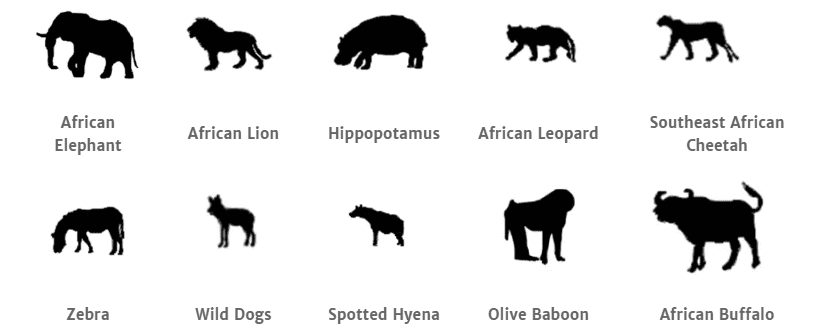
The best time to visit Mana Pools to see wildlife is during the dry season, which is between June and October each year. During this time, animals are easier to spot because the vegetation isn’t as thick and the wildlife tends to congregate around the Zambezi River. It is also much nicer weather with sunny and you typically run into fewer malaria-carrying mosquitos.
During the wet season, especially between January and March, the vegetation can be quite thick, which makes it more difficult to spot wildlife. Because of the abundance of water during this time of year, the wildlife is also typically more spread out. The roads can also get quite muddy and sometimes unpassable when the rains get especially hard. Much of the accommodations around the park are also closed between January and March each year.

23. Rainforests of the Atsinanana, Madagascar
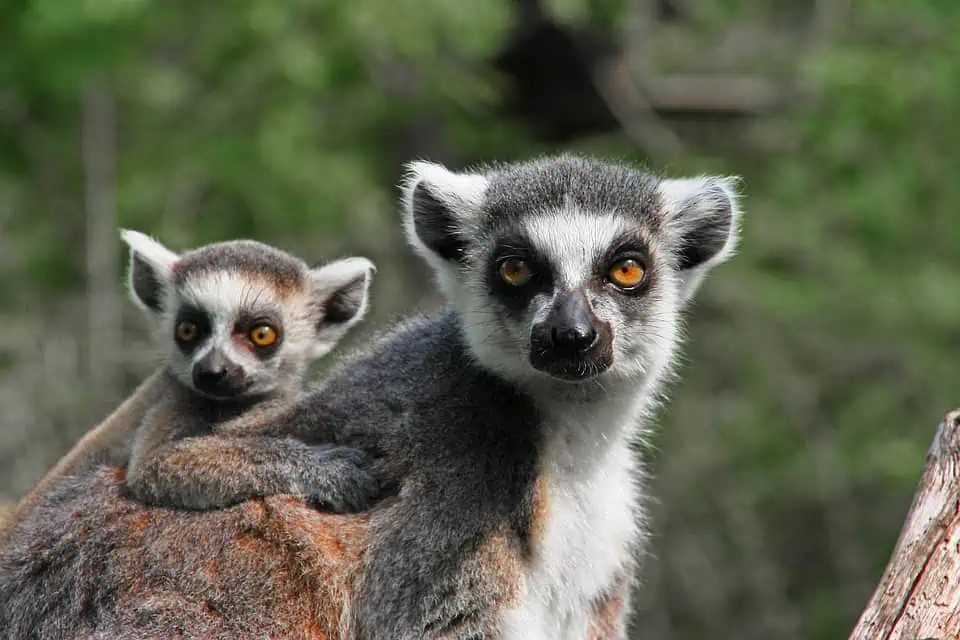
The Rainforests of the Atsinanana is a world heritage site that consists of 13 specific wildlife areas and 6 national parks in Eastern Madagascar. These rainforests are critically important ecosystems for Madagascar’s unique and wonderful wildlife, which has evolved in isolation over the past 60 million years. Visitors to the parks will get to see animals that can be found nowhere else in the world. This includes several species of lemur, fossa, chameleons, tenrec, and brookesia, among other species.
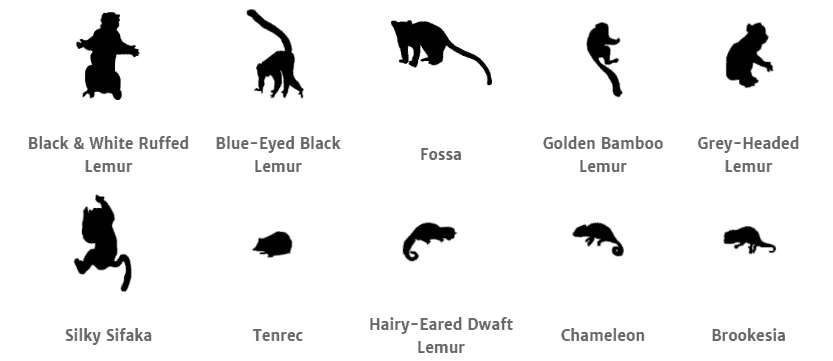
The best time to visit the rainforests of Madagascar is during August thru December each year. Between July and September, Humpback Whales can be seen off the coast and the weather is typically sunny and dry. Between October and November, the lemurs begin having their babies, so this is the prime time to visit to see the babies being born. The weather is typically warm and dry up until January when the wet season arrives. While wildlife can be viewed year-round, the dry season is typically the most comfortable time to visit during the year.

22. Ujung Kulon National Park, Indonesia

Ujung Kulon National Park is located about 185 miles from the Indonesian capital of Jakarta and about 85 miles from Serang, which is the capital city of Banten Province. This beautiful park stretches across the Kulon Peninsula, as well as several neighboring islands and the Honje Mountain Range. It is most well known for its endangered Javan rhinos, which are critically endangered. In addition to the rhinos, the park is also home to Javan leopards, Sumatran dholes, Silvery gibbons, Javan Rusa, and several species of monkeys.
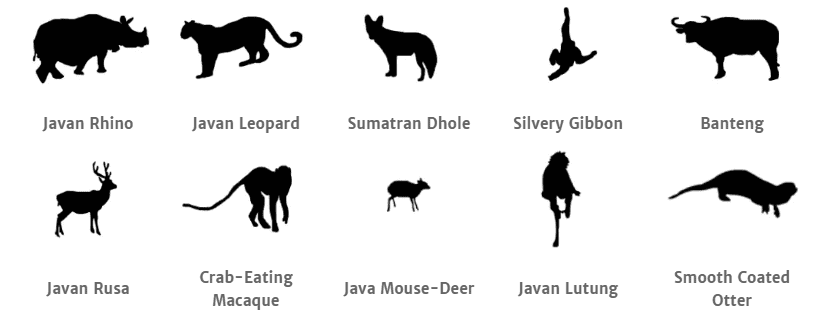
The best time to visit Ujung Kulon National Park for wildlife viewing is during the dry season, which is between April and October each year. During this time of year, the weather is typically the warmest and driest, which makes trekking thru the park much easier. The ocean is also much calmer during this time of year, which makes wildlife viewing near the coast much more enjoyable.

21. Lone Pine Sanctuary, Australia
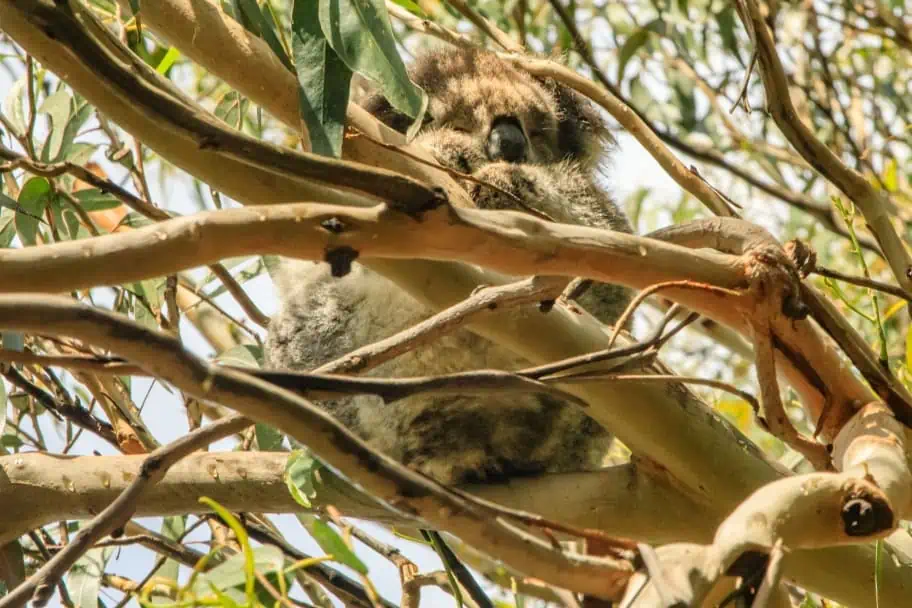
Like Madagascar, Australia is also home to several species of animals that are found nowhere else in the world. When visiting Australia, one of the best places to go to see all of this wildlife in one location outside of a zoo is the Lone Pine Sanctuary . Located in the suburbs of the city of Brisbane in Eastern Australia, the Lone Pine Sanctuary is Australia’s oldest and biggest koala sanctuary. In addition to the adorable koalas, the sanctuary also includes kangaroos, wombats, dingos, platypus, Tasmanian devils, and the dangerous Southern cassowary bird for visitors to see.
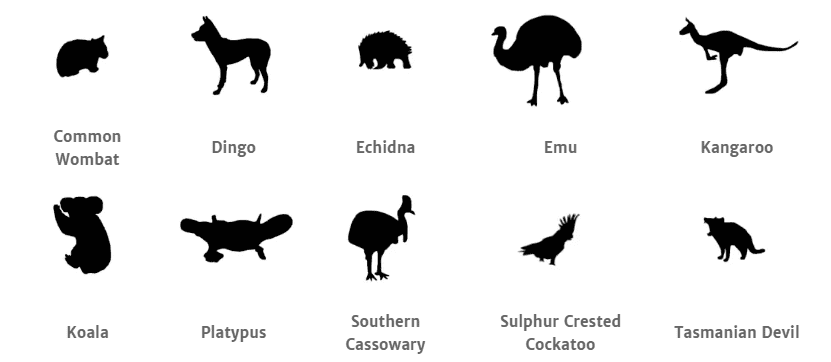
While wildlife viewing in the sanctuary is good all year-round, the best time of year to visit Brisbane, in general, is during March thru May, which is autumn in the Southern Hemisphere. During this time of year, the temperatures typically reach the mid-80s and there is very little rainfall.
The most popular times to visit are during the winter months of June thru August and the spring months of September thru November, but accommodations are typically sold out during this time of year and the sanctuary is typically very busy. Visiting during the summer months of December thru early March isn’t ideal because it is the wet season. It rains most days, and the temperatures can be brutally hot and humid during this time of year.

20. Jim Corbett National Park, India
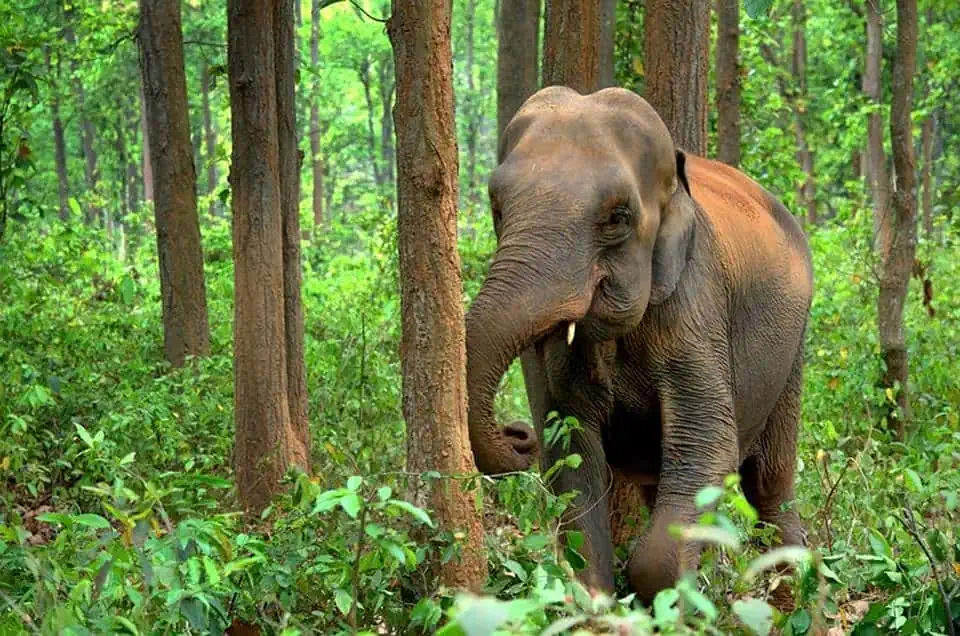
As one of India’s most famous wildlife parks, the Jim Corbett National Park is probably most famous for its rich population of Bengal tigers. In addition to its tigers, this forested wildlife sanctuary in Northern India is also home to an impressive array of other wildlife.
This includes Indian elephants, Asiatic black bears, Indian leopards, and a wide variety of other animal species. The park has five different zones, and each zone is known for different species of animals that can be seen within those zones. With so much wildlife to see, visiting the Jim Corbett National Park in India is a great choice for any wildlife adventure.
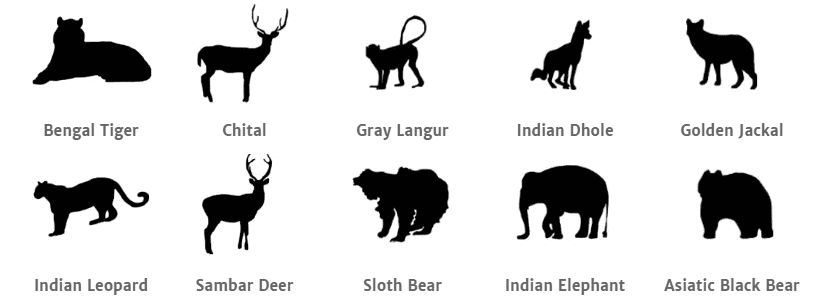
The best time to visit the Jim Corbett National Park for wildlife viewing is during the winter months of October thru February. During this time of year, there is the highest number of birds in the park and the Bengal Tiger is the most active and easiest to spot. Because the weather is typically very nice during this time of year, it is easy to spot animals laying out in the sun and foraging for food.

19. Bandhavgarh National Park, India

The famous Bandhavgarh National Park in central India is the wildlife destination where you probably have the best chance to spot a wild Bengal Tiger. No other park in India, let alone the world, gives you a better opportunity to spot these beautiful and elusive creatures. A combination of the healthy population of tigers and a conducive habitat for spotting the tigers gives visitors a better than not chance of leaving the park after having a tiger viewing experience.
In addition to a healthy population of Bengal tigers, the park is also home to some other amazing wildlife. This includes Indian dholes, Indian wolves, Indian leopards, sloth bears, and the unique striped hyena.
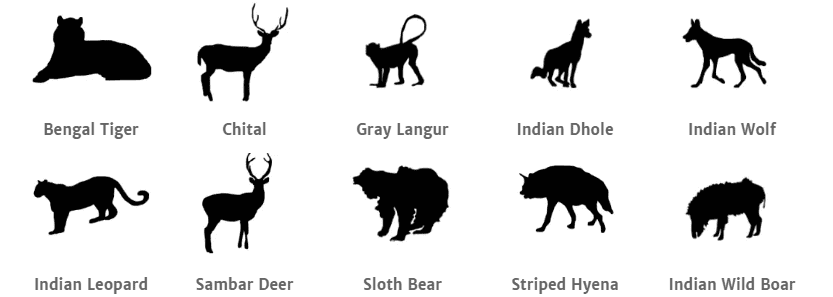
When planning your visit to Bandhavgarh National Park, the time of year that you will absolutely want to avoid is the Monsoon season which starts in mid-June and lasts until mid-October. From November until February, the park is much drier, but the temperatures can become quite cold in the park.
In fact, low temperatures can drop to around freezing during this time of year. For that reason, the summer months of March thru May are the best time of year to visit the park. Temperatures are quite pleasant, and the weather is typically dry, which makes wildlife viewing much easier and your visit much more comfortable.

18. Sabi Sands Game Reserve, South Africa

Bordering the nearby Kruger National Park in South Africa, the Sabi Sands Game Reserve has all of the Big Five animals of Africa (elephants, buffalo, lions, leopards, and rhinoceros), as well as some of the best safari guides in the world to help you locate and view them.
In fact, this may be one of the best places in Africa to spot the elusive leopards. Because the reserve allows off-road driving, the guides can get you up-close to the animals while on safari. If there is any drawback to this destination, it’s that accommodations can be quite expensive, and the focus of most safaris is limited to just the Big Five animals.
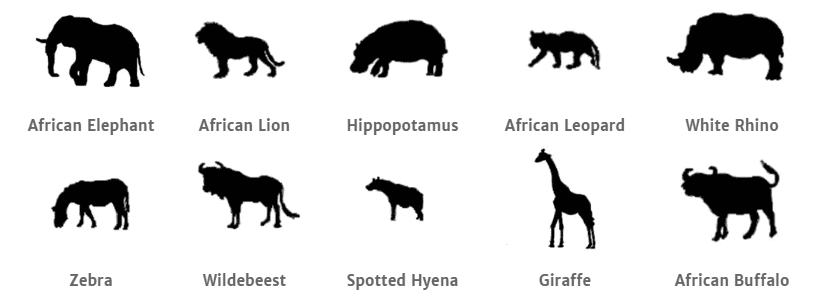
The best time to visit Sabi Sands for wildlife viewing is during the winter months of May to September. This is the dry season and also the low season from a visitor standpoint. This translates into more comfortable weather and fewer other tourists to deal with. Because it is the dry season, it is also much easier to spot animals as the vegetation is less dense and the animals gather around the rivers and waterholes to get water.
During the wet season of October thru April, animals are much more difficult to spot because the vegetation is denser and the animals are more dispersed. This is also the high season for visitors so it can get crowded. In addition, the days are much more hot and humid, with more malaria-carrying mosquitoes to have to deal with.

17. Okavango Delta, Botswana
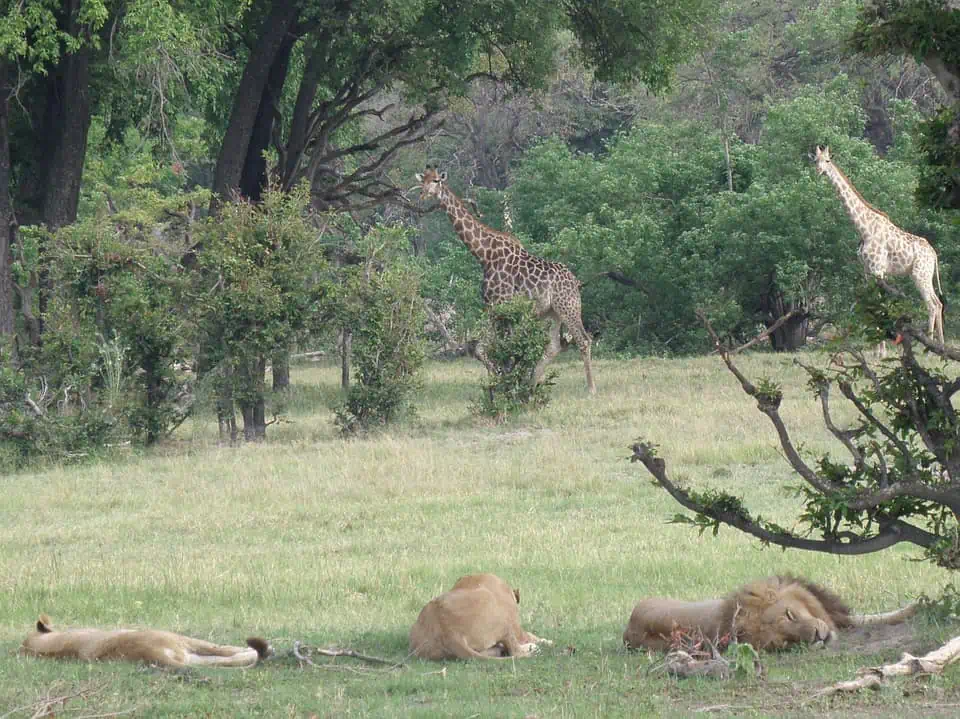
As one of Africa’s most famous wildlife destinations, I guess it is no surprise that it made my list of the top wildlife destinations in the world. In addition to the Moremi Game Reserve, which also made my list, the Okavango Delta is comprised of several game reserves that offer excellent wildlife viewing as well as beautiful landscapes to enjoy.
The park offers both walking safaris as well as mokoro (or dugout canoe) trips, which are great additions to supplement the wonderful game drives within the park. Rhinos cannot be found in the Okavango Delta, but you should have no problem spotting the other four of the Big Five animals of Africa.
And because off-road driving is allowed, your guide will be sure to get you up-close to see the wildlife. The only drawbacks to this destination are that lodging can be quite expensive and wildlife viewing is limited to several water-based camps.
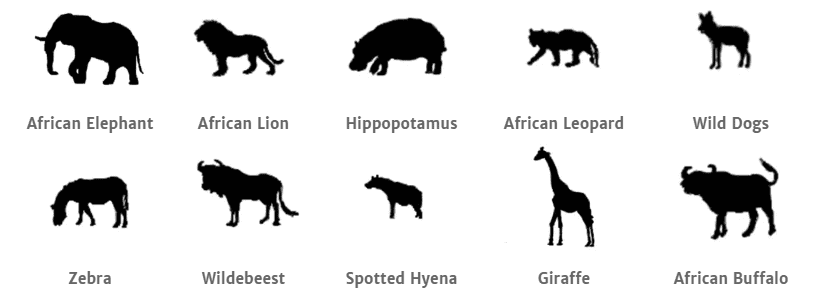
Although the Okavango Delta in Botswana is a great place to visit any time of year, the best time to visit for wildlife viewing is between July and October each year. During the wet months of January thru March, parts of the delta become inaccessible because of flooding. This makes the wet season less than ideal for visiting.
While there is less wildlife in the delta during the wet season, there are more baby animals, which attracts predators. If you are looking to see some predation, then the wet season might be the time of year you are looking for.
During the dry season, wildlife viewing is typically much better. Water levels are the highest, so it is the best time of year for mokoro (or dugout canoe) trips. Some lodges close from January to March each year, so this is typically the worst time of year to visit the Okavango Delta.

16. Kruger National Park, South Africa

As one of the most famous wildlife parks in Africa, Kruger National Park is very much deserving of a spot on any list of the top wildlife destinations in the world. The park is both beautiful and absolutely enormous and is home to all five of the Big Five animals of Africa, which makes it a favorite choice for wildlife enthusiasts looking to take an African Safari.
Kruger also offers a great choice of lodging for all budgets, which makes going on safari a relatively affordable adventure for any traveler. The only drawbacks to this destination are that the park can get quite busy during the high season and the paved roads aren’t exactly conducive to a wild safari feel.
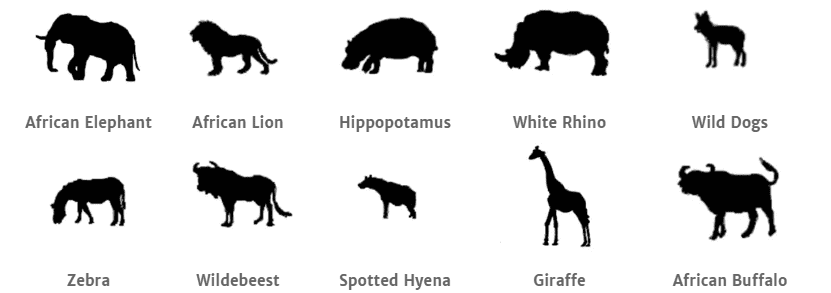
The best time of year to visit Kruger National Park is during the dry, winter months of May to September. During this time of year, the vegetation thins out and animals tend to congregate around water holes and rivers. This makes it easier to find and spot. The weather is also typically sunny and the temperatures are very comfortable.
During the wet season of October thru April, it is typically much hotter and more humid. The vegetation is also much thicker, making it more difficult to spot the animals. Because water is much more plentiful, the animals are also much more spread out, which makes it harder to find them.

Learn More:
If you would like to learn more about Kruger National Park, make sure you check out my Ultimate Kruger Safari Planning Guide for more information.
15. Corcovado National Park, Costa Rica

Corcovado National Park is one of the world’s most impressive wildlife destinations. In addition to having some of the only remaining old-growth rain forests on the Pacific coast of Central America, it is also home to an impressive array of wildlife. The park is comprised of a staggering 13 different major ecosystems including lowland rainforest, cloud forest, Jolillo palm forest, and mangrove swamps. In Corcovado, you have a decent chance of seeing endangered animals such as tapir, jaguar, and a wide range of monkeys that call the tree-top canopies their home.
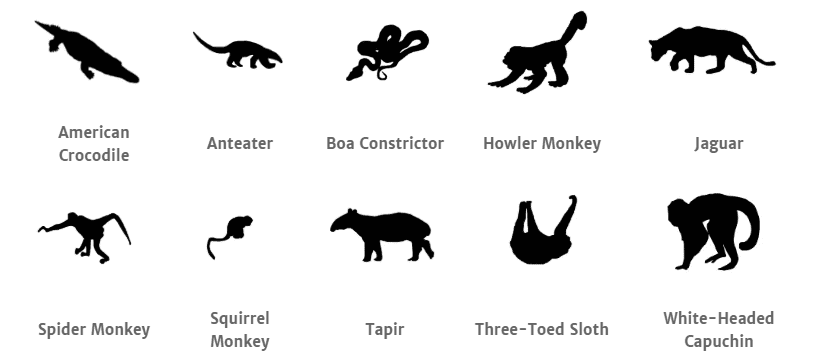
The best time of year to visit Corcovado National Park is during the dry season, which is between December and April each year. During this time of year, the temperatures aren’t as hot and it isn’t as humid and wet. This makes it much easier to navigate through the park during the dry season than during the wet season, which lasts from July through October. In fact, during October the park typically receives so much rainfall that many of the lodges on the Osa Peninsula temporarily close.

14. Yellowstone National Park, USA
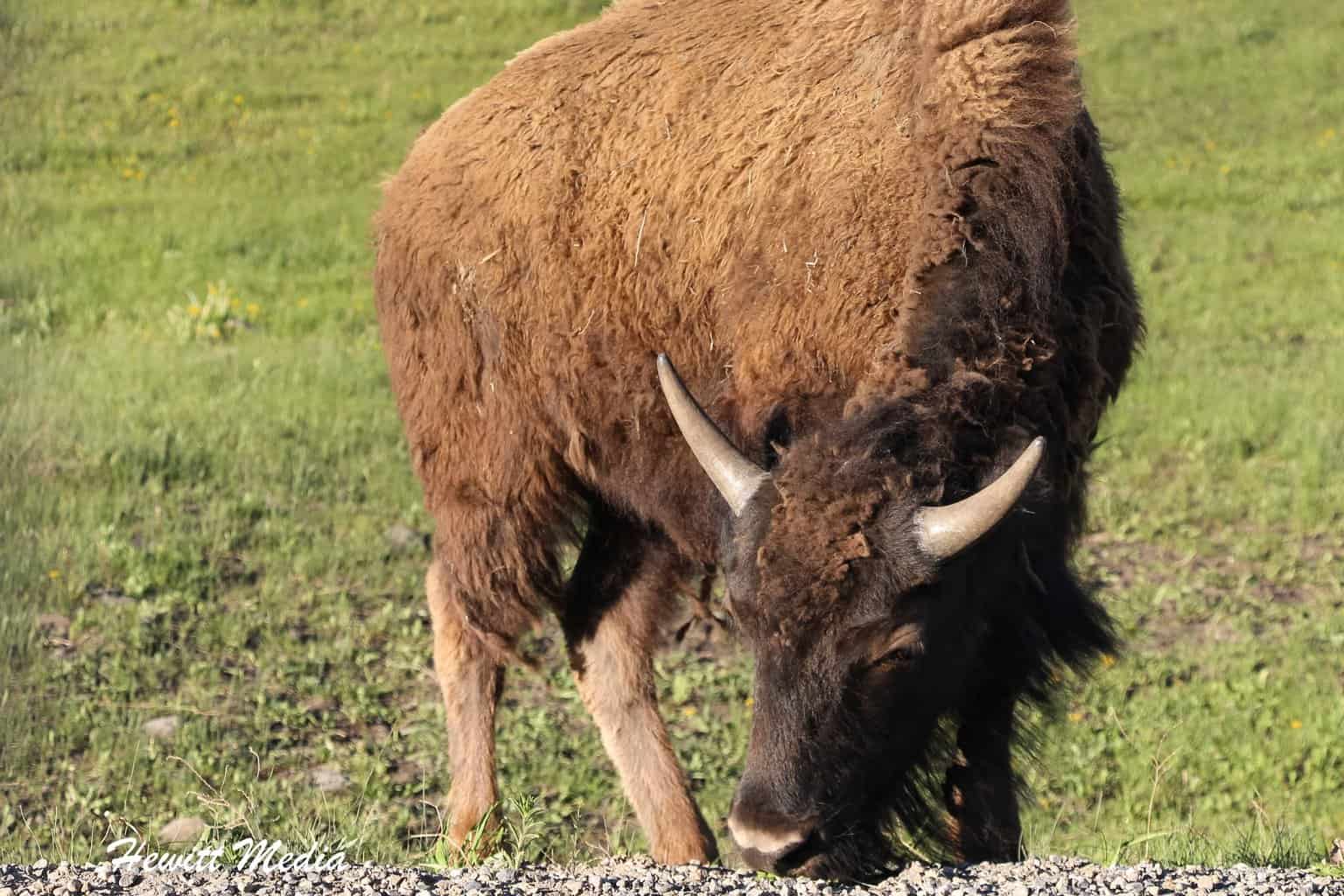
Yellowstone National Park in the United States isn’t called the Serengeti of North America for no reason. Of all the national parks in North America, visiting Yellowstone National Park is about as close as you can get to a safari-like experience in North America. Large numbers of grazing animals including American bison, Roosevelt elk, and Pronghorn antelope graze in the park’s large valleys.
Meanwhile, predators such as the grey wolf, grizzly bear, and mountain lion stalk the valleys and forests in search of prey. Not to mention, the Yellowstone Caldera, which encompasses most of the national park, is one of the most active geothermic areas in the world. The result is a seemingly endless number of geysers, hot pools, and other thermal features to explore.
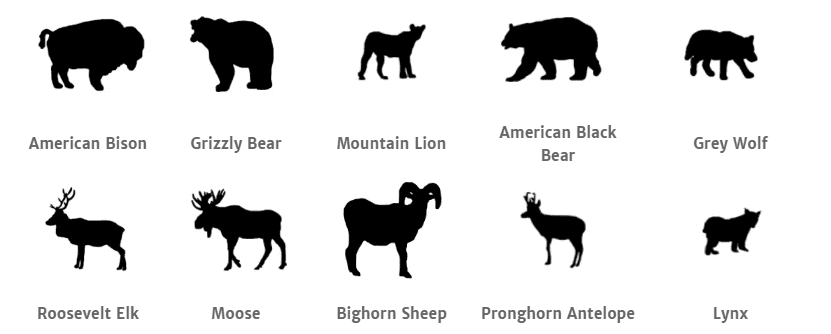
The best times of year to visit Yellowstone National Park are either during the spring months of May and June or the autumn months of September and October. During these months the temperatures are quite mild and the crowds aren’t as thick as they are during the summer months. If you visit in the spring, you will get to see the baby elk, bison, bears, and other baby animals around Yellowstone. This is also the best time of year to see animal predation as the park’s grizzly bears tend to prey on the baby elk and bison.
During the fall months, you will get to see the elk, bison, and other grazing animals in their rut. This is when the animals typically fight for breeding privileges, which can be remarkable to see in person. During the summer months of July and August, the park is typically very crowded, which can make it more difficult to get around the park and find accommodations.
While the park is much less crowded during the winter months of December through March, the temperatures in the park can drop to well below freezing and snowfall can make certain parts of the parks inaccessible. However, this is typically the best time of year to spot Grey Wolves within the park as this is typically their most productive hunting season.

If you would like to learn more about Yellowstone National Park, make sure you check out my Yellowstone National Park visitor’s guide for more information.
13. Katmai National Park, USA
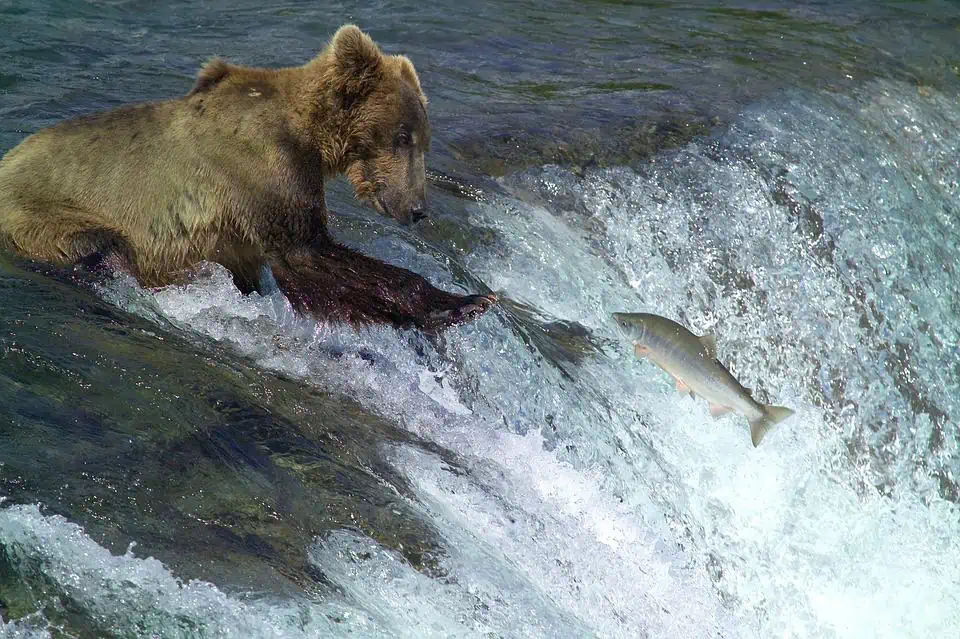
The state of Alaska in the United States has a lot of beautiful national parks and a lot of amazing wildlife, but one park stands above all of the others in terms of its wildlife viewing. Katmai National Park and Preserve is located on the Katmai Peninsula in Southern Alaska. With a beautiful mix of tundra, forests, lakes, and mountains, the landscapes in the park are breathtaking.
However, it isn’t the park’s landscapes that make it world-renown. Instead, the park is known the world over because of the large numbers of Alaskan brown bears that are attracted to the park to fish for the masses of salmon that migrate up the park’s rivers.
Witnessing this spectacle of nature is one of the most amazing wildlife-viewing experiences a traveler can have. In addition to seeing the fishing brown bears, visitors to the park also have a chance to see some of the park’s other amazing wildlife. This includes grey wolves, moose, caribou, wolverines, and humpback and killer whales off the shores of the peninsula.
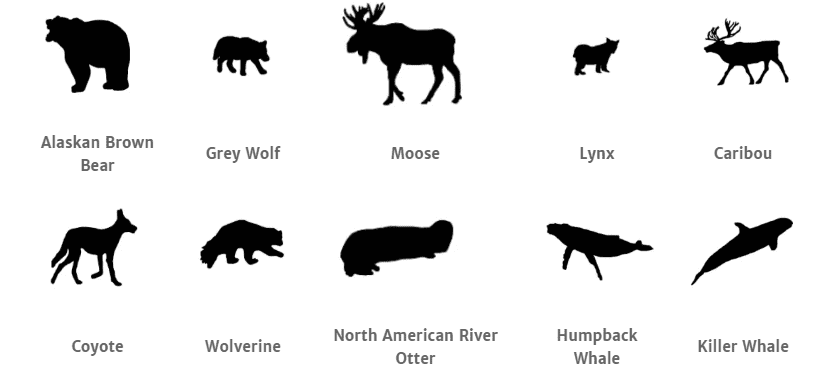
When visiting Katmai National Park, you will want to coordinate your visit for a time of year when you will be able to see brown bear activity. After all, they are the biggest wildlife draw within the park. The best times to see Brown Bear activity are during the late spring and early summer when mothers and cubs emerge from hibernation and during the late summer months when the salmon run is happening.
My favorite time of year for brown bear viewing in Katmai is during the salmon run because you can see the bears fishing for salmon in the rivers. The times of year you will want to avoid are during the early spring months of April through mid-May when the bears are fighting and during the winter months of November through March when the bears are in hibernation.

12. Etosha National Park, Namibia
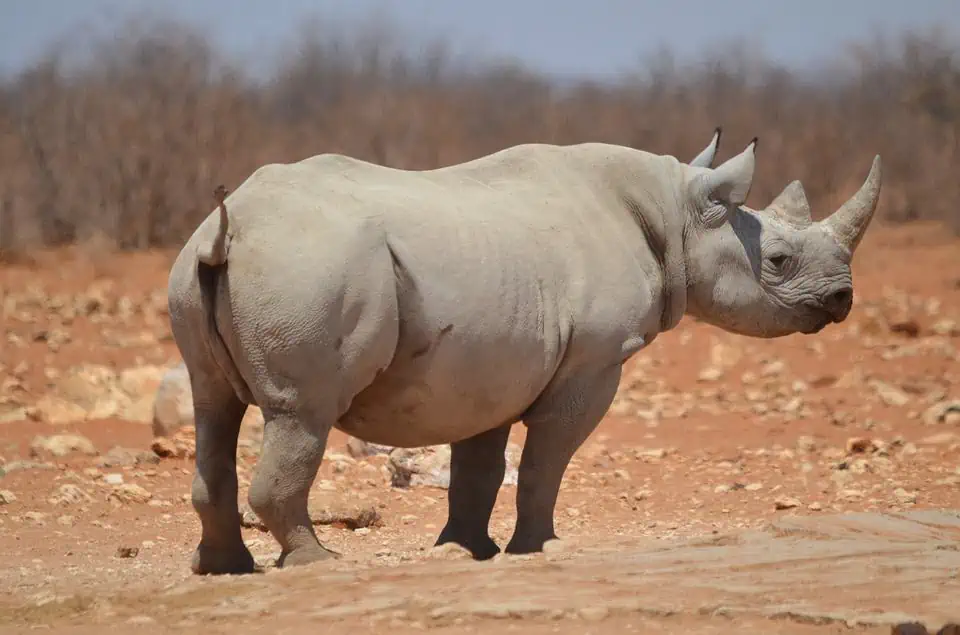
In the world of African safaris, the country of Namibia is a relative newcomer. However, that hasn’t stopped the country from garnering some serious attention as one of the premier safari destinations in the world. With rugged coastlines, abundant and diverse wildlife, and constantly changing landscapes, Namibia is a safari lover’s paradise. In Namibia, no other place encapsulates this excitement like Etosha National Park .
Home to some of Africa’s tallest elephants, the endangered black rhino, an abundant population of cheetahs, as well as healthy herds of zebra, wildebeest, and African buffalo that can be found throughout the park. The park also has some of Africa’s most unique accommodations, including some tree-top camps that give you a birds-eye perspective of all the wonderful wildlife around you.
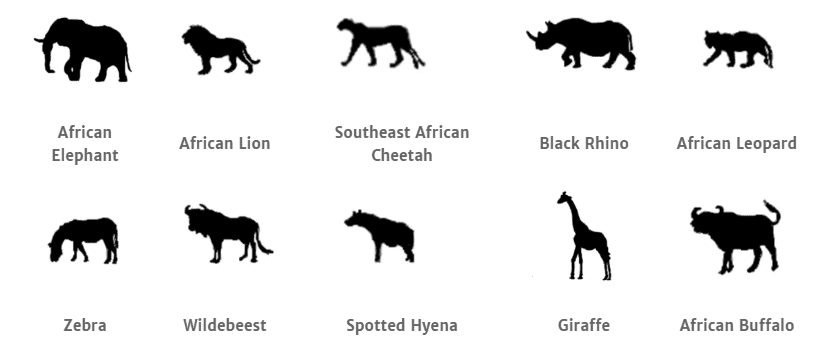
The best time to visit Etosha National Park is during the dry winter season, which stretches from July to October. It is much dryer during this time of year, so the animals tend to gather around the remaining water sources in the park. This makes them much easier to find. The weather during this time of year is also fantastic, but the park can be fairly crowded.
During the wet summer season, water becomes more available, so animals tend to disperse throughout the park. This can make them much more difficult to spot. It also tends to be very hot during the summer, so you need to make sure to wear proper sun protection.

11. Serengeti National Park, Tanzania
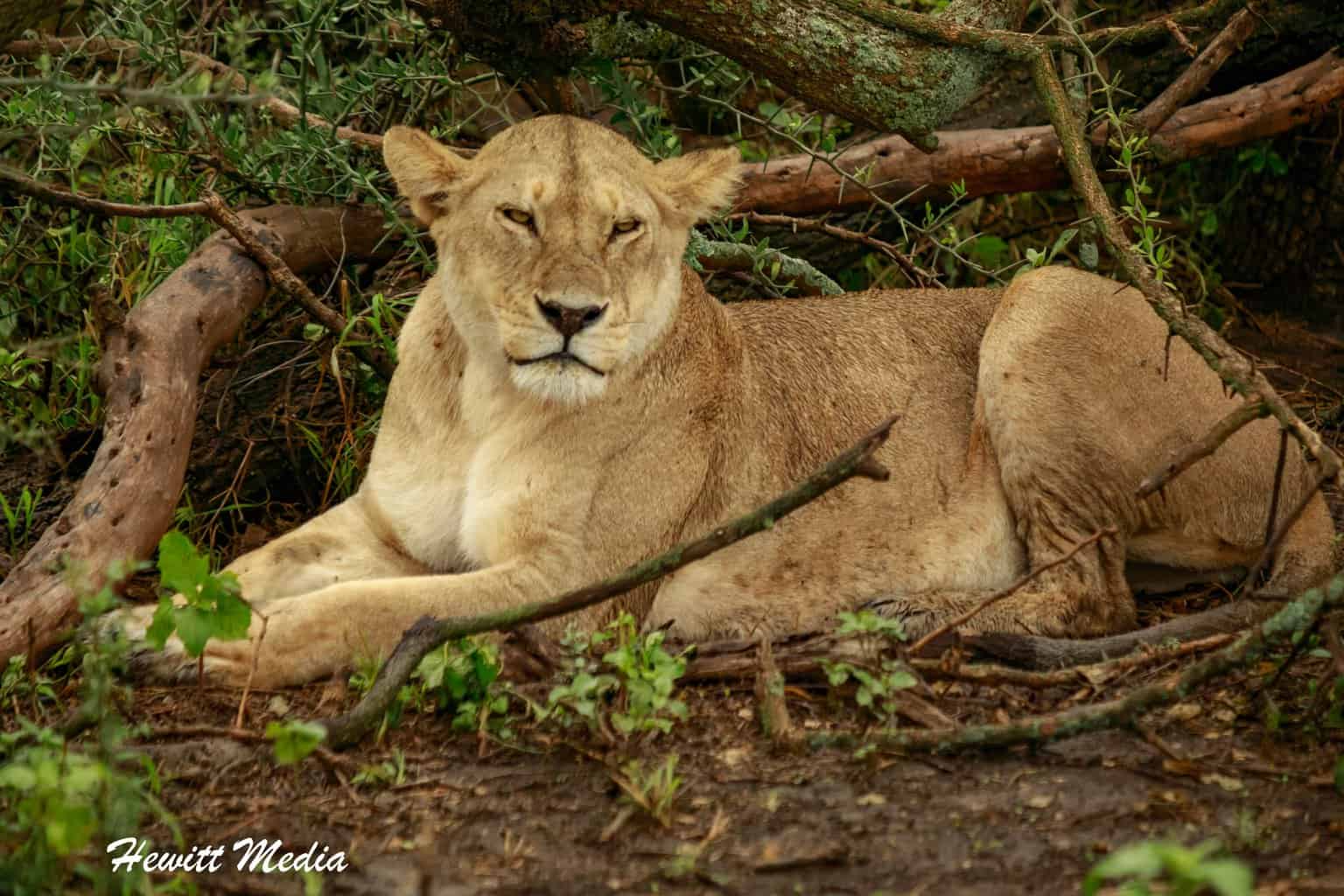
When it comes to wildlife destinations in Africa, few, if any, destinations are as well-known and celebrated as the Serengeti National Park in Tanzania. Home to part of the great wildebeest migration, which is one of the single largest animal migrations in the world, the Serengeti National Park delivers an absolutely fantastic wildlife viewing experience to its visitors.
Not surprisingly, the park is home to some of the biggest herds of grazing animals in Africa, which in turn attracts some of the largest numbers of predators in sub-Saharan Africa. The best part about the Serengeti National Park is that it offers accommodations and viewing experiences to accommodate people at all price points, which makes it one of the most accessible safari locations in Africa.
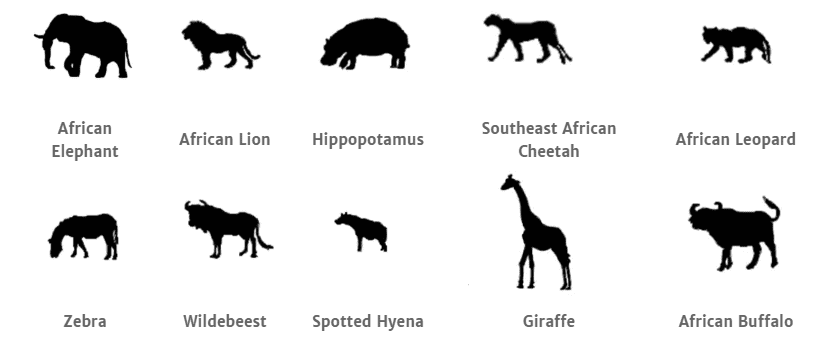
Wildlife viewing in the Serengeti National Park is good throughout the year, but it is best during the dry season between June and October. Not only is the weather dryer, which means animals tend to congregate around the water holes, but the Wildebeest migration also happens during June and July, which is absolutely magical to witness.
During the wet season between November and May, the weather can be much hotter and wetter, but the park is also far less crowded. If you visit during late January and early February, you can witness the Wildebeest calving season, which is the prime time of year to witness predation in the park.

If you would like to learn more about the Serengeti National Park, make sure you check out my Serengeti National Park Safari Guide for more information.
10. Yala National Park, Sri Lanka

Yala National Park is one of the most spectacular, and also one of the most underrated and somewhat unknown, wildlife viewing destinations in the whole world. Encompassing a huge expanse of forest, grassland, and crystal blue lagoons in Southeast Sri Lanka, it is home to a mind-boggling array of spectacular wildlife.
This includes Sri Lankan leopards, Sri Lankan elephants, Sri Lankan sloth bears, and a variety of other mammals, reptiles, and birds. The wonderful thing about Yala National Park is that whether you are a returning visitor, or you are visiting the park for the first time, you are almost assured of having a wildlife experience you have never had before.
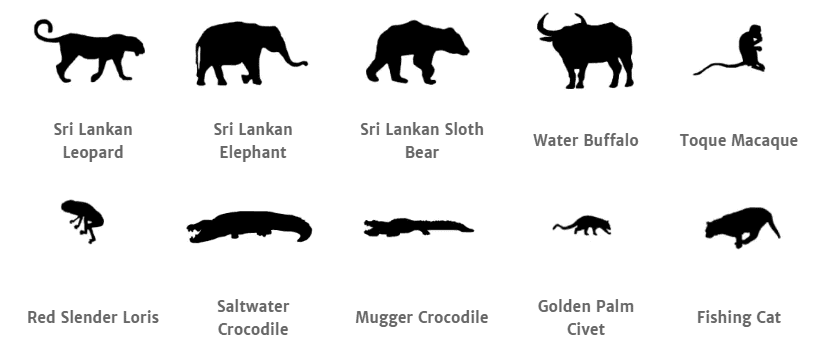
For the most reliable wildlife viewing, it is best to visit Yala National Park during the dry season between February and June. During this time of year, the animals are forced to visit the lagoons to drink, which makes them much easier to find.
Temperatures are pretty reliably warm year-round, with high temperatures typically reaching the mid-80s. However, during September until December, the Northeast monsoon typically hits the island and brings a lot of rain. During September, the park typically closes down for maintenance.

9. The Galápagos Islands, Ecuador
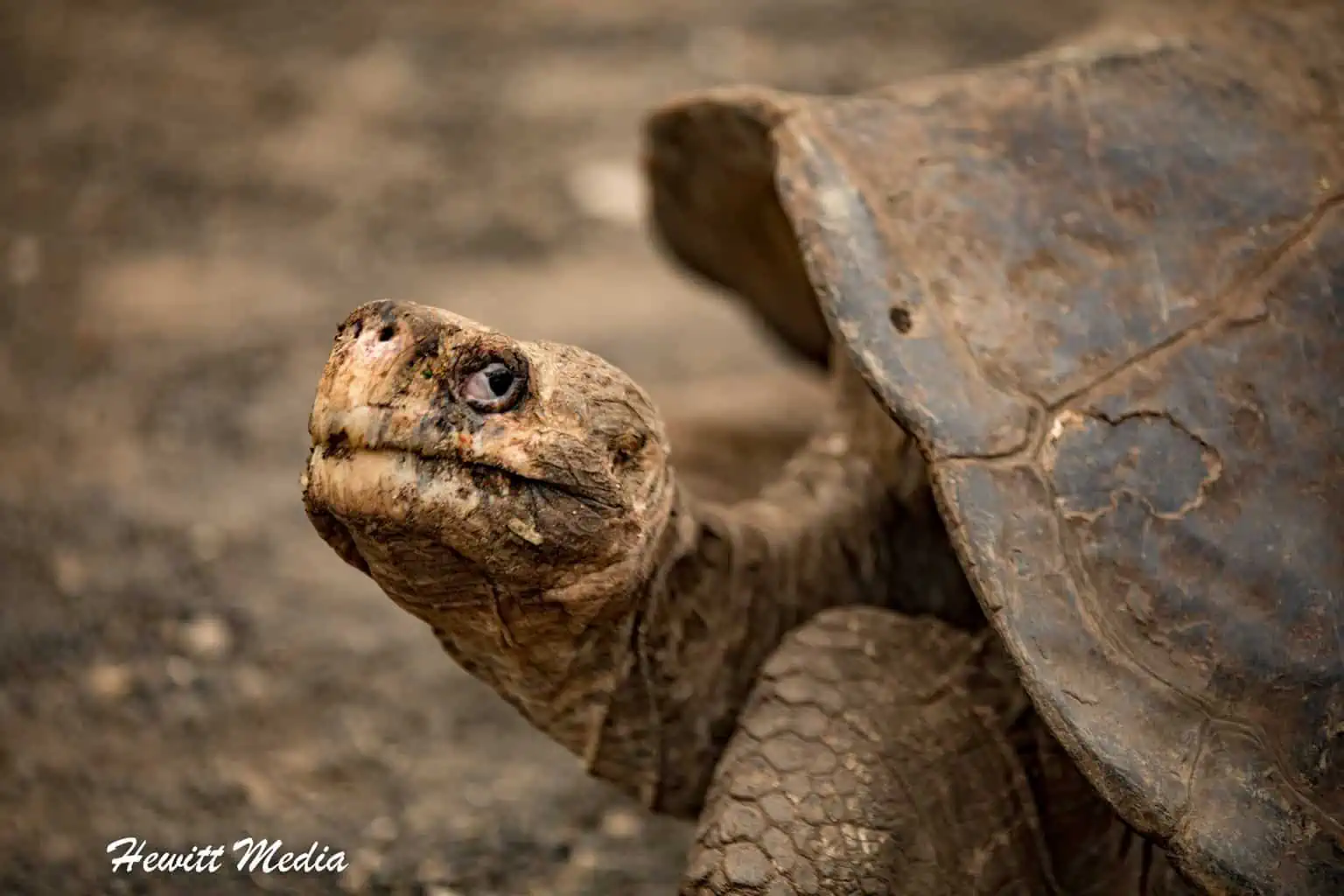
The Galápagos Islands off the coast of Ecuador is another wildlife destination that doesn’t need much of an introduction. Ever since Charles Darwin made his visits to the islands in the early 1800s, the world has known the ecological significance of the Galápagos Islands.
The collection of marine and land-based habitats on and around the islands is home to some of the most amazing creatures you will find on this planet. In fact, it is the uniquely fast evolution of some of these species that made Charles Darwin’s research so important to our understanding of how species of plants and animals evolve.
One of the best ways to explore the Galápagos Islands is to take a LiveBoard cruise around the islands and do some snorkeling or scuba diving. You will have a chance to see some of the amazing marine wildlife that calls the Galápagos Islands their home. This includes the gigantic whale sharks, Galápagos sea lions, Galápagos sharks, scalloped hammerhead sharks, and the unique Galápagos penguin.
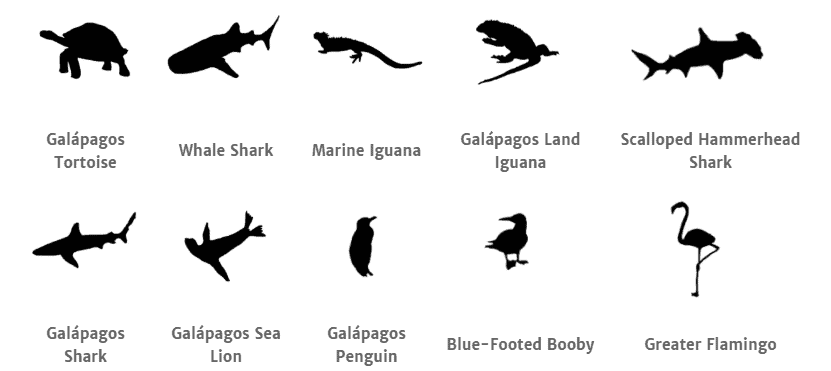
There really isn’t a bad time to visit the Galápagos Islands to view wildlife, but the best time to visit is typically the wet season between December and June each year. During the wet season, the air and water temperatures are typically warmer, which makes it the prime season for snorkeling and scuba diving.
However, you will need to deal with short, daily rainstorms and cloudier skies. During the dry season from July to November, the water temperature gets colder because of the Humboldt current, which can make a wet suit necessary for snorkeling.

If you would like to learn more about visiting the Galápagos Islands, make sure you check out my Galápagos Islands visitor’s guide for more information.
8. South Luangwa National Park, Zambia
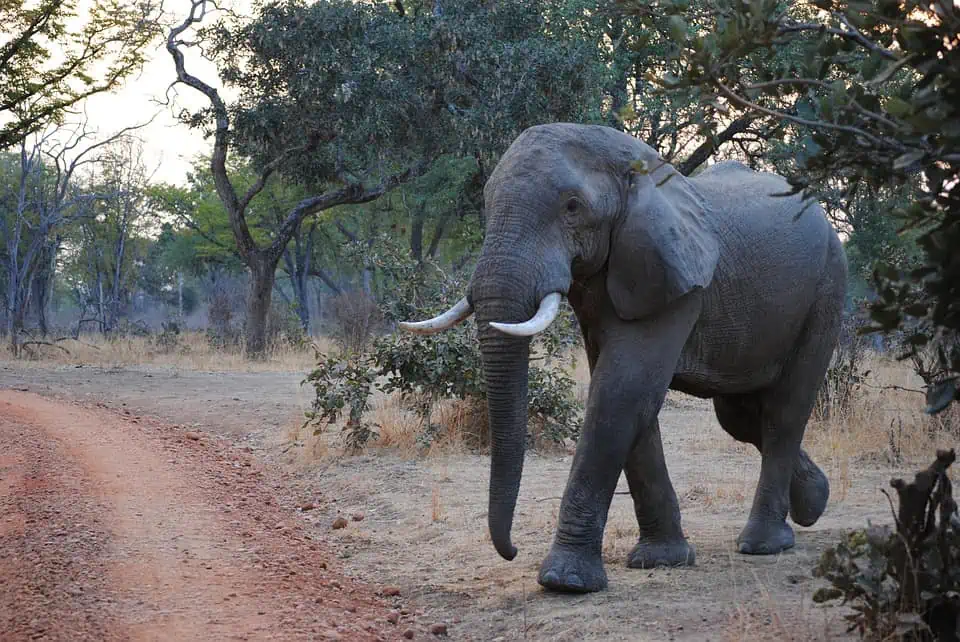
With some of the very best guides in all of Africa, and amazing array of safari options that include some of the best night safaris you can find in Africa, and an almost guaranteed opportunity to see four of the five animals in the Big Five of Africa, South Luangwa National Park in Zambia is truly an amazing wildlife viewing destination. With one of the densest populations of leopards in Africa, South Luangwa is one of the best places to spot the most elusive of the Big Five of Africa.
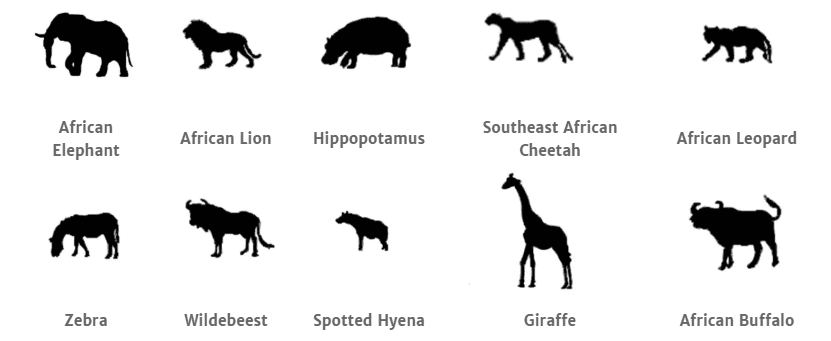
The best time to visit South Luangwa National Park for wildlife viewing is between July and November. During this dry season in the park, water is less plentiful and animals are forced to congregate around the water holes and rivers, which makes them much easier to find. However, keep in mind that October and November and typically very hot and humid.
During the wet season of November through April, there are typically fewer tourists and rates are typically cheaper. However, animals are much more dispersed throughout the park because water is more readily available. When the rains are the hardest, it can make some of the dirt roads in the park impassable, which can restrict your access to certain parts of the parks. Because of the lower number of tourists during this time of year, some lodges closed between December and March, which means your selection of lodging may be more limited.

7. Gir National Park, India

As it is the last remaining stronghold in the world for what remains of this world’s Asiatic lions, it should come as no surprise that the Gir National Park in India is ranked so high on my list of the top wildlife destinations in the world. This is the last place in the world where you can visit and see these magnificent animals in the wild.
In addition to seeing Asiatic lions, visitors also have a good chance of seeing Indian leopards, striped hyenas, golden jackals, and the infamous Indian cobra. With such an array of beautiful wildlife, the Gir National Park should be a destination on every wildlife enthusiast’s bucket list.
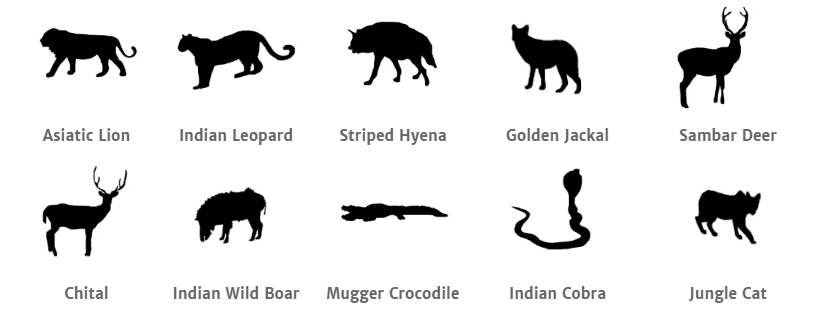
The best time to visit Gir National Park is typically in December through March when the weather is the driest, but temperatures typically aren’t too hot. However, the months of April and May are typically the best wildlife viewing months, but the average high temperatures can be brutally hot. Between mid-June and mid-October every year, the park is closed because of the Southwest monsoon. The area typically gets a lot of rain during this period and navigating within the park can be near impossible in places.

6. Gunung Leuser National Park, Indonesia

For a park that has such an amazing and diverse array of wildlife, it absolutely baffles me how Gunung Leuser National Park in Indonesia has managed to slip underneath most wildlife travelers’ radars all of these years. Unlike the nearby Bukit Lawang National Park, Gunung Leuser offers visitors a much more authentic wildlife experience.
This is about as close to a real jungle experience as you can find in the region. With the endangered Sumatran rhino, the Sumatran elephant, and the Sumatran Tiger still accessible for visitors to see in the park, that authentic wildlife experience couldn’t be more amazing.
Several other amazing animals can be seen in the park, including the elusive clouded leopard, but the star of the park is undoubtedly the Sumatran Orangutan. These lovable apes can still be seen in their natural habitat within the park and are reason enough to rank this park so high on this list. Add in all of the other amazing animals you can see and the Gunung Leuser National Park is a hidden gem for wildlife enthusiasts to discover.
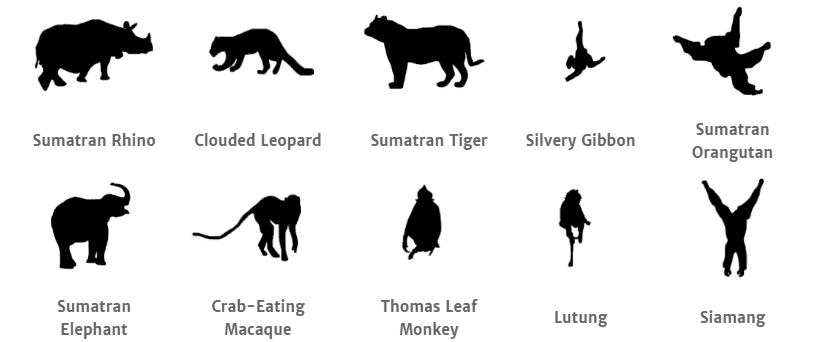
The best time to visit Gunung Leuser National Park for wildlife viewing is between January and July, which is the dry season of the year. Although this is also the busiest season of the year for the park, the weather is much more comfortable than it is during the wet season. You also won’t have to worry about the dirt roads in the park becoming too muddy and impassible, which can be an issue during the wet season.

5. Volcanoes National Park, Rwanda
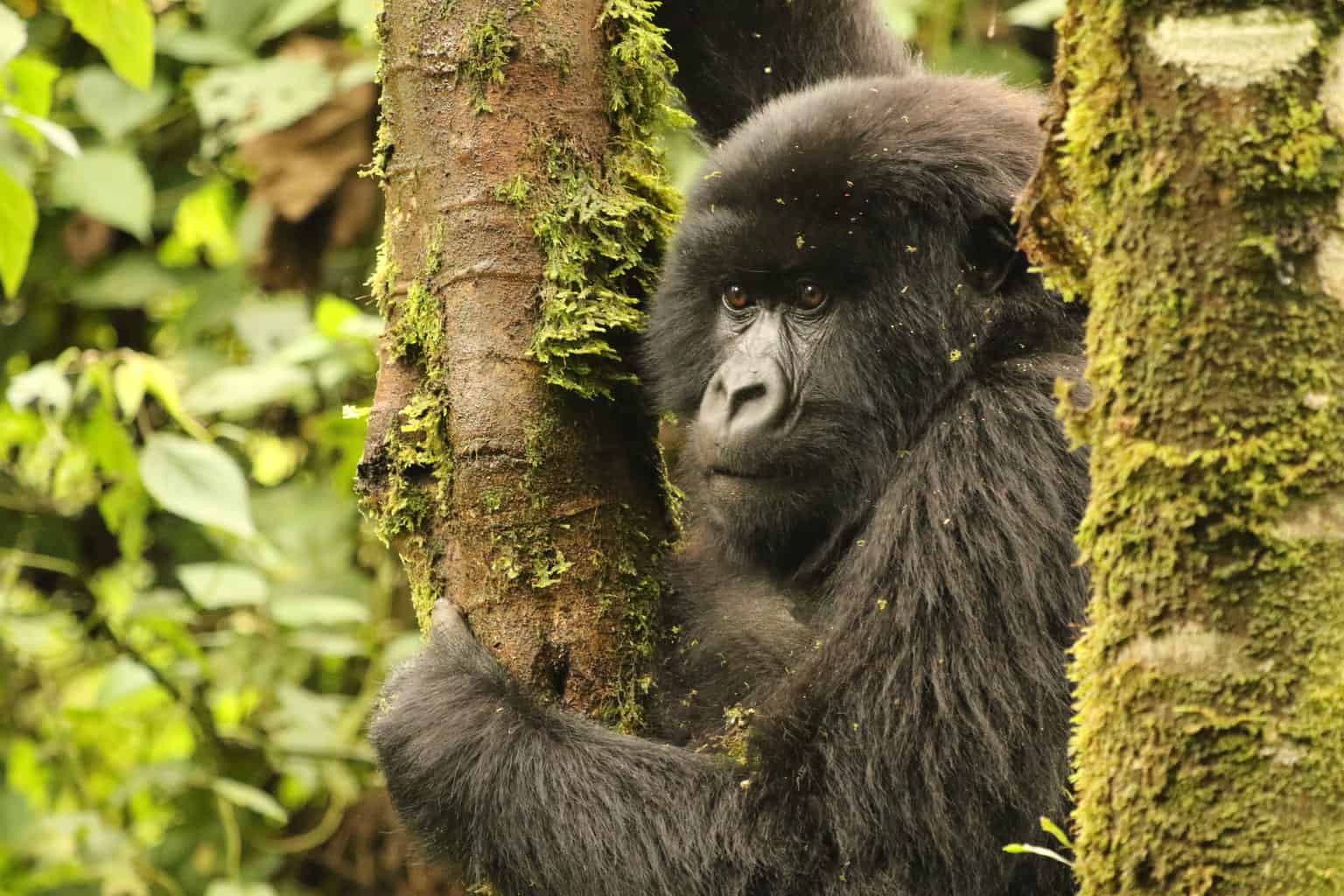
No bucket list for a wildlife enthusiast is complete without adding a trip to Volcanoes National Park in Rwanda to the list. As one of the last remaining refuges for the mountain gorillas of Africa, Volcanoes National Park is an absolute must-see for travelers who love wildlife.
Made famous by Dian Fossey during her studies of gorillas, Volcanoes National Park is one of the best places left to view these beautiful creatures. If you want to visit this park, you will need to make sure you book your trip well in advance. Only 64 visitors are allowed to trek to see the gorillas daily, so getting the spots is very competitive.
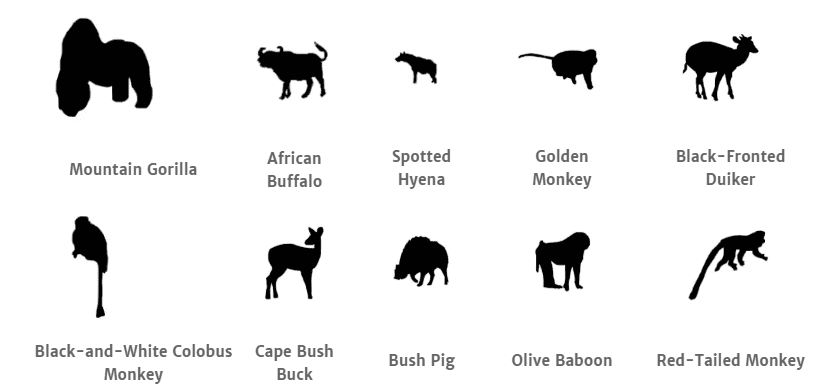
Although you can trek to see the gorillas throughout the year, and seeing gorillas is almost guaranteed no matter when you visit, the trails you have to hike do become slippery during the wet season. For this reason, visiting during the dry season of June through August is considered the best time to visit to see the gorillas.
However, it can also be more difficult to obtain a permit and lodging is typically more expensive during the dry season. If you visit during the wet season of September through May, it will be easier to obtain a permit to see the gorillas and you will likely have to pay less for lodging. However, you will likely have to deal with slick trails and rainstorms that can last for days.

If you would like to learn more about visiting Volcanoes National Park in Rwanda, make sure you check out my Trekking to See Gorillas in Rwanda article to learn about this adventure.
4. The Amazon Basin, Brazil

As one of the last truly wild places left on this planet, the Amazon Rainforest is a place that has mystified and amazed human beings for centuries. With such a wide variety and sheer volume of wildlife, it can be argued that it is the premier wildlife destination in the world. The only reason it doesn’t rank higher on this list is the fact that it can be so difficult to spot wildlife.
For wildlife enthusiasts who would like to experience this unique and amazing place, your best bet is to visit the Amazon Basin in Brazil. In addition to the jaguar, the South American tapir, Brown-throated sloths, green anacondas, black caiman, and a seemingly endless list of other animal species, the Amazon rainforest is a wildlife enthusiast’s dream.
If you are planning a visit, I would recommend you do your research on guides. In a place where wildlife is so abundant, yet so difficult to find, having a good guide can mean the difference between having the trip of a lifetime or feeling like you missed out.
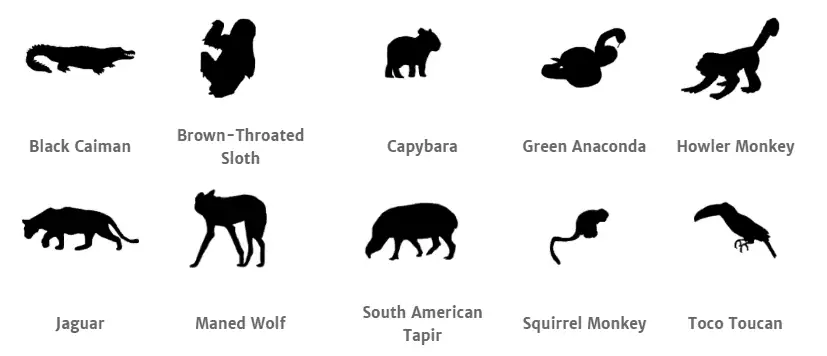
In the Amazon Basin in Brazil, there is typically a Low Water Season (July through December) and a High Water Season (January through June). During the Low Water Season, there is typically better trail access, fewer mosquitos to deal with, and less precipitation. However, temperatures are typically very hot. During the High Water Season, the temperatures are much cooler, but there are typically intermittent daily rain showers, which can be heavy at times. These rains also bring an abundance of mosquitos and can make some of the trails impassable.

3. Masai Mara National Reserve, Kenya
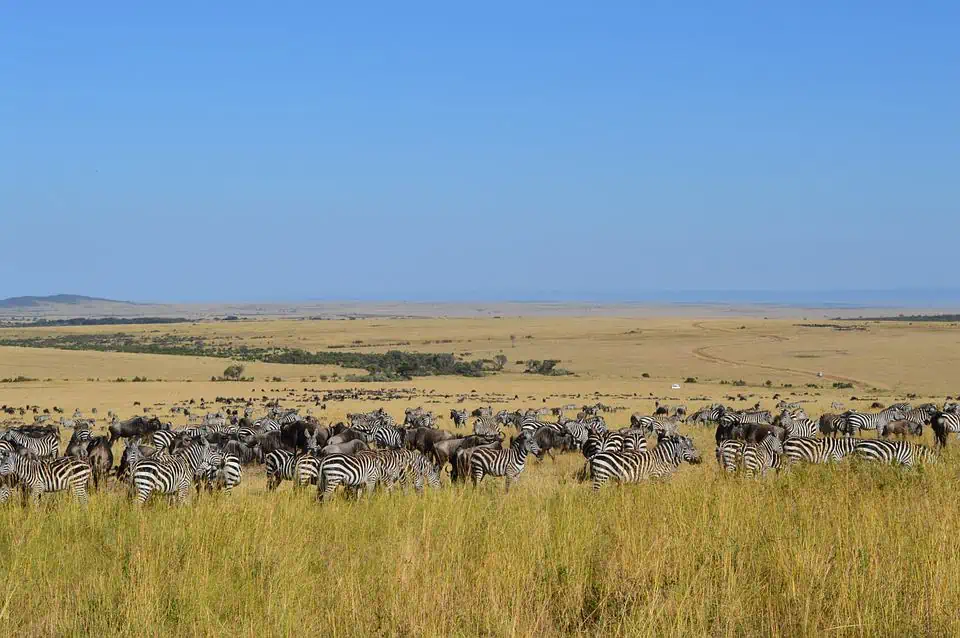
Neighboring the Serengeti National Park in the North, the Masai Mara National Reserve in Kenya is a continuation of what has become known as one of the top wildlife viewing areas in all of Africa. Like the Serengeti, the Masai Mara offers visitors a chance to see the great wildebeest migration.
However, in the areas the Serengeti is famous for, the Masai Mara is even better. You are almost guaranteed to see the three big cats of Southern Africa (the African lion, the African leopard, and the African cheetah), as well as elephants, giraffes, and seemingly endless herds of buffalo, antelope, and zebra. If you are planning your first safari in Africa, the Masai Mara in Kenya is a great choice.
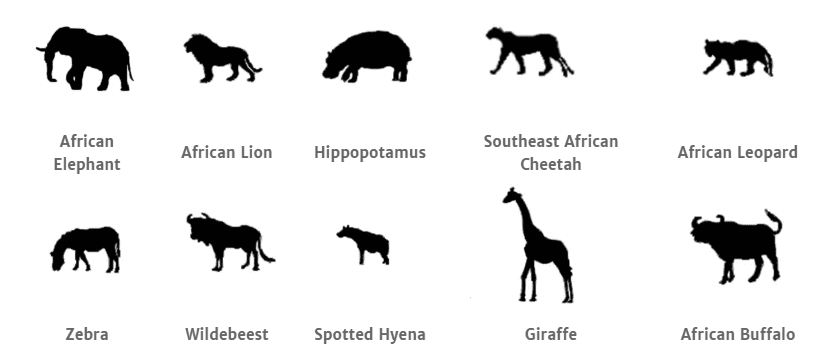
Like the neighboring Serengeti National Park in Tanzania to the south, wildlife viewing in the Masai Mara is good throughout the year, but it is best during the dry season between June and October.
Because the weather is dryer, animals are forced to congregate around the watering holes and rivers for water, which makes them much easier to spot. While the Wildebeest migration is difficult to time exactly, your best shot at seeing the Wildebeest migration in the Masai Mara is to visit in late September and October.
During the wet season between November and May, the weather can be much hotter and wetter, but the park is also far less crowded. If you visit during late January and early February, you can witness the birth of newborn animals, which also means that there will be more easy-to-view predation in the park.

2. Kaziranga National Park, India
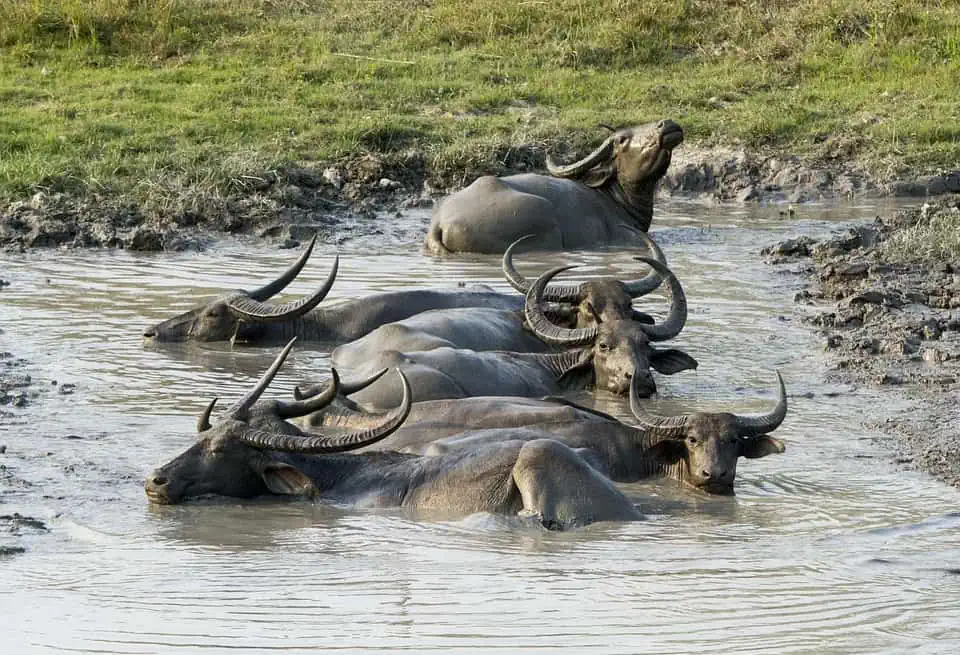
Although it may not be as famous as some of the others, out of all of the parks in India, the Kaziranga National Park is my absolute favorite. The park has the largest number of remaining Indian rhinos, which is reason enough to love this park. However, it also has an abundant supply of Bengal tigers, Indian elephants, Asiatic black bears, Indian leopards, sloth bears, and an amazing array of other wildlife.
If that isn’t enough, if you are lucky enough to get out on the rivers in the park, you might be lucky enough to spot a South Asian River dolphin, which is always a treat for visitors to see. For anyone planning their first safari in India, I could not recommend the Kaziranga National Park enough.
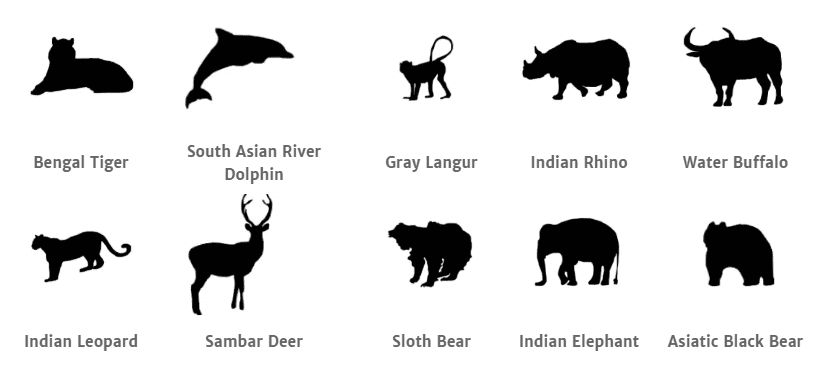
The best time to visit Kaziranga National Park is during the winter season, between December and March, which also happens to be the dry season in India. During the winter the park roads are much easier to navigate and the temperatures are much milder. The park is closed each year from May 1st until the end of October because of the heavy monsoon season and the flooding of the Brahmaputra River.

1. The Ngorongoro Crater in Tanzania
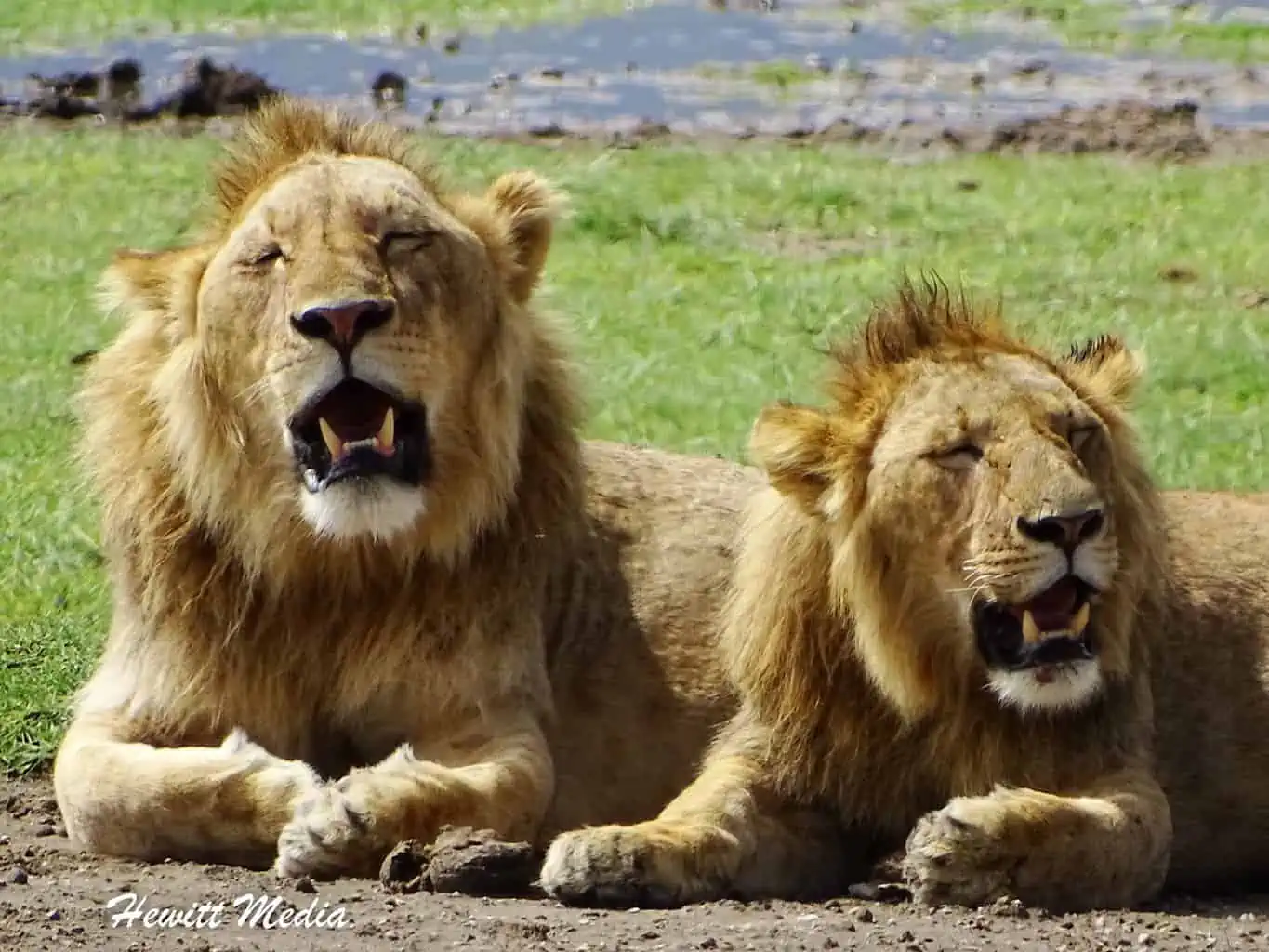
If you were to check the lists of the top safari locations in Africa, chances are that you wouldn’t see the Ngorongoro Crater at the top of many lists. It isn’t that the crater isn’t widely considered a great wildlife destination. Most people recognize it as exactly that. However, in my opinion, most lists are comprised of valuing the sheer number of animals ahead of the quality of the experience. What the Ngorongoro Crater may lack in sheer numbers of animals, it more than makes up for with the likelihood of seeing the animals you would like to see.
In my opinion, nowhere else in Africa are you as close to assured of seeing the Big Five animals of Africa as you are in the Ngorongoro Crater. With water available in the crater year-round, the animals in the crater have no need to migrate. They are there year-round. In fact, it is such a plentiful environment that you often see some of the biggest bull elephants in Tanzania inside the crater feeding.
The only downside to this destination is that safari vehicles are not allowed to leave the roads, which may mean that you aren’t able to get as close as you may like to some of the animals. Either way, if you are looking for a sure-fire, yet authentic, wildlife viewing experience, there are few destinations in this world as good as the Ngorongoro Crater.
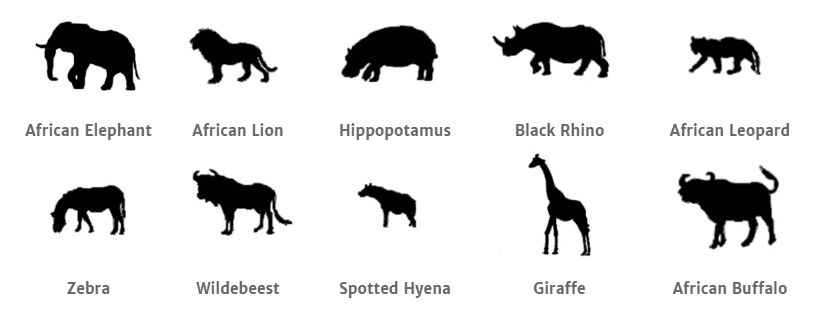
With an ample supply of water inside the crater year-round, the animals inside the Ngorongoro Crater have no need to migrate. Because of this, and the fact that they are enclosed within the crater, there is excellent wildlife viewing inside the crater year-round. No matter which time of year you choose to visit, you are almost guaranteed to see all of the animals found within the crater.

If you would like to learn more about the Ngorongoro Crater Conservation Area, make sure you check out my Ngorongoro Crater Safari Guide for more information.
Honorable Mentions
Some absolutely spectacular wildlife destinations around the world didn’t make my list, especially in Africa. I wanted to take a moment to recognize two additional African wildlife parks that I think are amazing and definitely worth visiting.
Chobe National Park in Botswana
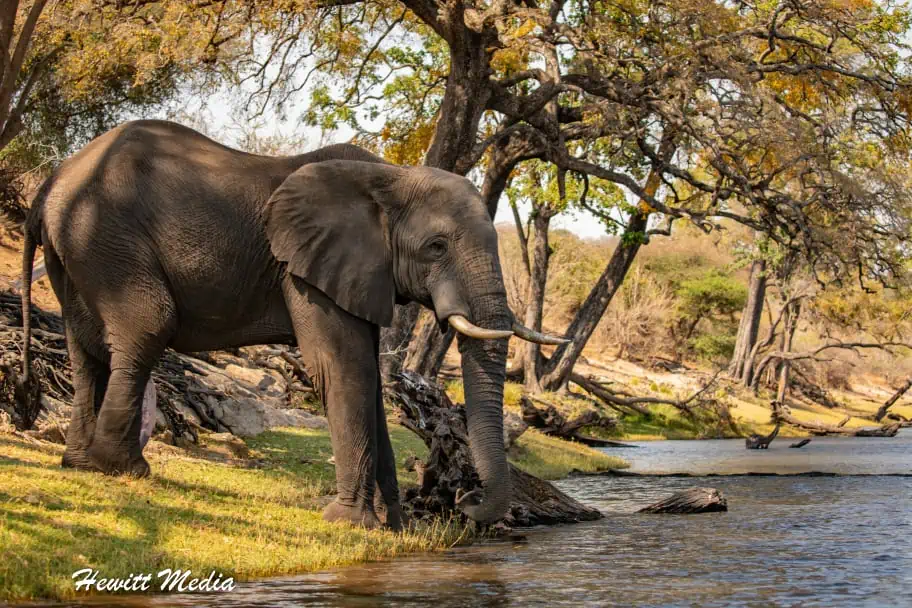
While it sometimes gets overshadowed by the incredible Okavango Delta, Chobe National Park in Botswana is an absolutely amazing wildlife park in its own right. Located on the infamous Chobe River, the park offers a variety of different ways to view the park’s wildlife. In addition to the traditional land-based safaris, visitors can also see the wildlife from the river on a boat safari.
This is a great way to safely view hippos, Nile crocodiles, wading elephants, and other grazing animals feeding along the banks. If you venture further into the park, you will find the renowned Savuti region of the park.
This remote section of the park is famous for having some of Africa’s largest lions and biggest elephant herds. In fact, the lions in this area have become expert elephant hunters. It is one of the few regions in Africa where you will see lions hunt elephants regularly.

By far, the best time of year to visit Chobe National Park is during the dry season of July through October. During this time of year, water is scarce, so animals tend to congregate around the river. This is one of the best times to see predator activity near the Chobe River. Not only are the animals harder to spot during the wet season, but the roads in the park can be harder to travel on after heavy rains. This makes some of the more remote regions of the park harder to reach.

If you would like to learn more about the Chobe National Park, make sure you check out my Chobe National Park Safari Guide for more information.
Hwange National Park in Zimbabwe
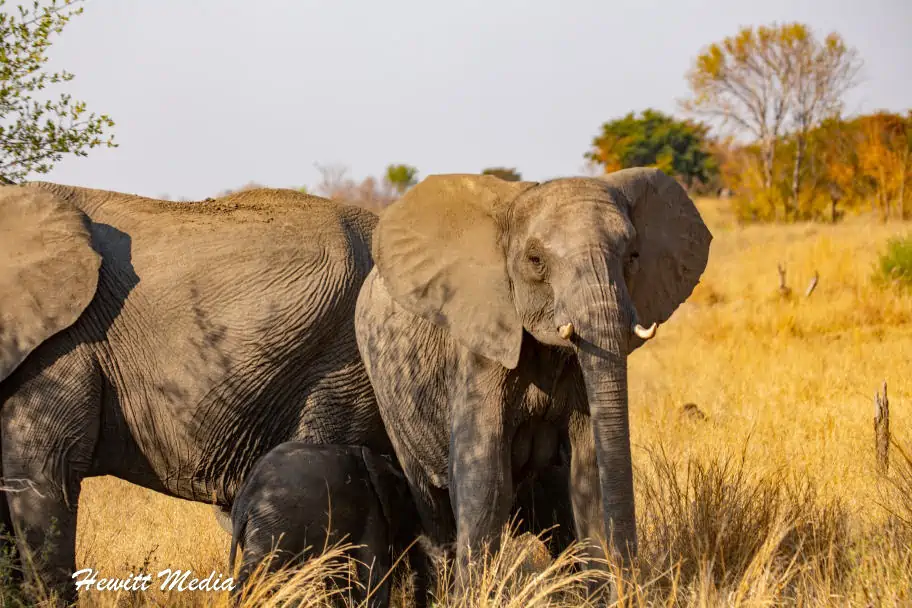
If you plan on visiting the spectacular Victoria Falls on the border of Zimbabwe and Zambia, I strongly recommend checking out the nearby Hwange National Park . Located in Zimbabwe, roughly 2.5 hours South of Victoria Falls, Hwange National Park is Zimbabwe’s largest national parkland.
The park is renowned for having some of the largest elephant herds in all of Africa. It is also a great place to spot predators like lions, hyenas, leopards, and even the critically endangered African wild dog. In fact, the park is home to the African Painted Dog Conservation Center. This incredible organization is dedicated to rehabilitating and releasing wild dogs to help grow their population.

Like other parks in this area of Africa, the best time to visit is during the dry season of July through October. The park has several man-made water holes that are fed water to keep them full during the drier parts of the year.
When water is scarce during the dry season, the animals tend to congregate near these water holes. This makes them much easier to spot than during the wet season when water is plentiful. Hwange is a very large park, and the animals can be difficult to find when water is more readily available.

If you would like to learn more about the Hwange National Park, make sure you check out my Chobe National Park Safari Guide for more information.
Don’t Forget to Subscribe to My Adventures!
Type your email…

Let Me Help You Save On Your Next Adventure!
‘start exploring today’ merchandise available now.
Published by Josh Hewitt
Avid traveler and photographer who loves to see new places, meet new people, and experience new things. There is so much this world can teach us, we just need to explore! View all posts by Josh Hewitt
Related Articles

Planning an Epic Eastern National Parks Road Trip

Argentina Entrance Requirements: A Guide for Travelers

How to Anticipate the Perfect Moment in Wildlife Photography
9 comments ›.
This was actually so helpful! I’ve been wanting to find some destinations for ages, thank you!
Thank you for reading! 😀
A wonderful post! I had no idea there were this many safari locations around the world. Great to know so many of them are best seen during my most convenient months of June-August! Thanks for an amazingly thorough post!
Thank you so much for the kind words! 😀
Such a comprehensive post of the different wildlife parks and habitats to visit around the world. Really like the recommendations on the weather and best times to visit throughout the year. Definitely comes in hand when deciding on where to travel to see wildlife. Amazing photography too 🙂
Thank you so much for the kind words!! 😀
No worries, Josh. Look forward to more photos and travels from you 😀
it’s actually disappointing how most of the subsaharan region or East African countries mentioned & not see Uganda any where…readers, visit Uganda. Thank me later!!!
So true!!!! Such an underrated wildlife destination for sure!!! It is on my list of places to visit!
Leave a Reply Cancel reply
Wonderful & very informative article. I think these tips and advice are much helpful. Great Sharing, Thank you for such…
[…] during off-peak seasons when hotels offer incentives like free breakfast or spa credits 39. Choosing locations slightly removed from major…
Exploring the beautiful Phuket, Thailand area offers an array of stunning beaches, cultural landmarks, and exciting activities. Wander On can…
Visiting Shimla and Manali in November offers stunning autumn views, pleasant weather, and fewer crowds, making it perfect for a…
Discover more from Wanderlust Travel & Photos
Subscribe now to keep reading and get access to the full archive.
Continue reading

Subscribe To My Adventures!

World Wild Schooling

12 Wildlife Sanctuaries Around the World Offering Unforgettable Animal Encounters
Some of the links might be affiliate links and, at no extra cost to you, we earn a small commission. See our disclaimer for more info.
For adults and kids alike, encountering wild animals is an experience unlike any other. While zoos and safari parks are all very well, seeing conservation in action is truly special. So, if you’d like to contribute in some way, however small, to the care of beautiful mammals or marine creatures, head to one of the following dozen wildlife sanctuaries of the world.
Banks Peninsula Marine Mammal Sanctuary, New Zealand

🏨 Explore all your hotel options here
Endangered Hector’s Dolphins are among the marine creatures you can see at the Banks Peninsula Marine Mammal Sanctuary in New Zealand, close to Christchurch on the South Island. With its distinctive curving fins, this is the smallest dolphin species on earth and is native to the area. You can book cruises to see the dolphins swimming in the ocean, and part of the profits goes towards their conservation.
Read also: Best National Parks Around the World
Luang Prabang Wildlife Sanctuary, Laos

The Luang Prabang Wildlife Sanctuary is part of a Free the Bears project in Laos, southeast Asia. Since its inception in 2003, the sanctuary has been featured on a BBC TV show, Bears About the House. The project was responsible for the first-ever neurosurgery performed on a bear and has also rescued a huge number of bears. During a Bear Care Tour here, you might also see macaques, civets, leopard cats, tortoises, and even red pandas rescued from smuggling.
Read also: Most Amazing Natural Phenomena You Need To See
Currumbin Wildlife Sanctuary, Australia

Head to the Gold Coast in Queensland to see various native Australian wildlife. Currumbin Wildlife Sanctuary educates the public about animal welfare and has a sizable animal hospital. Creatures are rehabilitated and ready to be released back into their natural habitat where possible. Animals to visit include koalas, wallabies, Tasmanian devils, kangaroos, wombats, crocodiles, and more.
Read also: Incredible Wate Falls Around the World
Gir National Park and Wildlife Sanctuary, India

If you want to encounter Asiatic lions in the wild, there’s arguably no better place than Gir Forest National Park and Wildlife Sanctuary in Gujarat, India. To protect the animals and their habitat, the park operates a very strict visitor code involving permits and guided safari tours. While lions are undoubtedly the star attraction, other creatures include around 300 bird species, Indian leopards, sloth bears, Indian cobras, antelope, and more.
Read also: Unbelievable Landscapes on Earth
ChangChill Elephant Sanctuary, Thailand

Happy Elephant Valley, in Chiang Mai, Thailand, is home to the ethical ChangChill Elephant Sanctuary. The name literally translates as chilled-out elephants, reflecting the sanctuary’s ethos. It’s now a leading light when it comes to animal welfare in the region. Kids and adults visiting the sanctuary can learn about the creatures’ life cycle, habits, and care and observe the half-a-dozen or so resident elephants.
Read also: Scenic Hikes Around the World
Verdiazul Turtle Sanctuary, Costa Rica

Playa Junquillal in Costa Rica is a key nesting site for sea turtles. Olive Ridley and Leatherback Turtles breed here, and the Verdiazul Turtle Sanctuary was established to conserve these lovely creatures. Under their guidance, volunteers patrol the beach, checking for nesting turtles, and then the eggs are brought into the sanctuary’s nursery to hatch in safety. Once they’re ready, the baby turtles are released back into the ocean at sunset.
Read also: Exotic Beaches Around the World
Howletts Wild Animal Park, UK

Howletts Wild Animal Park in Kent is a UK charity dedicated to conservation. It forms part of the Aspinall Foundation, focusing on captive breeding and rehabilitation into the wild where feasible. Paying a visit to the park can be a real adventure and a very informative experience. Animals to spot include giant anteaters, leopards, the UK’s biggest herd of African elephants, gorillas, and monkeys.
Read also: Most Beautiful Places on Earth
Sheldrick Wildlife Trust, Kenya

The Sheldrick Wildlife Trust in Kenya was set up to care for orphaned young rhinos and elephants. Every creature here is hand-raised, ready to be reintegrated into their native habitat, as and when this is realistic.
The sanctuary also works way beyond its boundaries by operating mobile de-snaring teams and veterinary units, plus an anti-poaching program. Hearing all about the individual creatures here makes for an unforgettable wildlife encounter.
Read also: Amazing Adventure Destinations
Seal Rescue Ireland Visitor Center

The Seal Rescue Ireland Visitor Center is a small sanctuary in County Wexford, Ireland. This organization aims to rehabilitate rescued creatures before returning them to the wild. Seal wellbeing is the number one priority, focusing on rescuing injured, sick, or orphaned pups. The young marine creatures are utterly adorable!
Read also: Iconic Places in the World
Piedras Blancas Elephant Seal Rookery, California

If you’re traveling on the Pacific Coast Highway, you must stop at Piedras Blancas Elephant Seal Rookery in San Simeon. You don’t need to reserve a slot, and the rookery is free to visit. It’s also fully accessible, offers parking, and is open daily. The boardwalks and platforms of the Elephant Seal viewing area are ideal for seeing the creatures, and interpretive displays and volunteers explain more about the conservation project.
Read also: Extreme Travel Destinations
Onçafari Association, Brazil

Maned wolves and jaguars are the focus of attention at the Onçafari Association in Brazil. The animals remain free to roam within their natural habitat, while humans can observe from carefully controlled safari vehicles.
This unique approach has led to thousands of jaguar sightings since 2011, when the association was set up. The conservation practices used here are sustainable and benefit local people and animals.
Read also: Most Beautiful Countries in the World
Boulders Beach, South Africa

Formerly known as Jackass Penguins, you can find a protected colony of African Penguins at Boulders Beach in Simon’s Town, on South Africa’s Cape Peninsula. Three purpose-built boardwalks at Foxy Beach provide visitors with a viewing platform, and these are stroller and wheelchair friendly.
The conservation project here has seen penguin numbers climb to over 2,000. Park rangers oversee the operation, which includes a nesting zone and a Code of Behaviour.
Read also: Best Beach Destinations Across the Globe
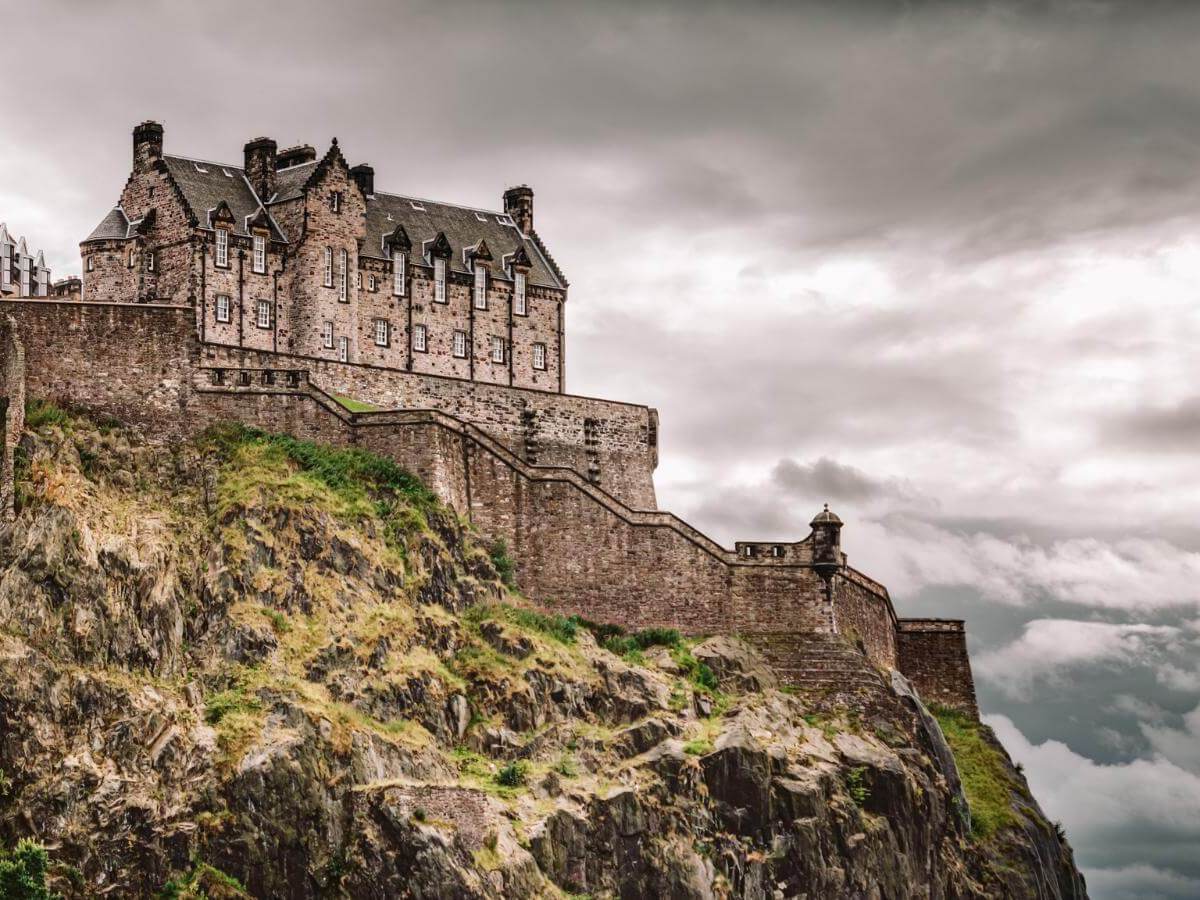
12 Haunted Destinations for the Brave at Heart
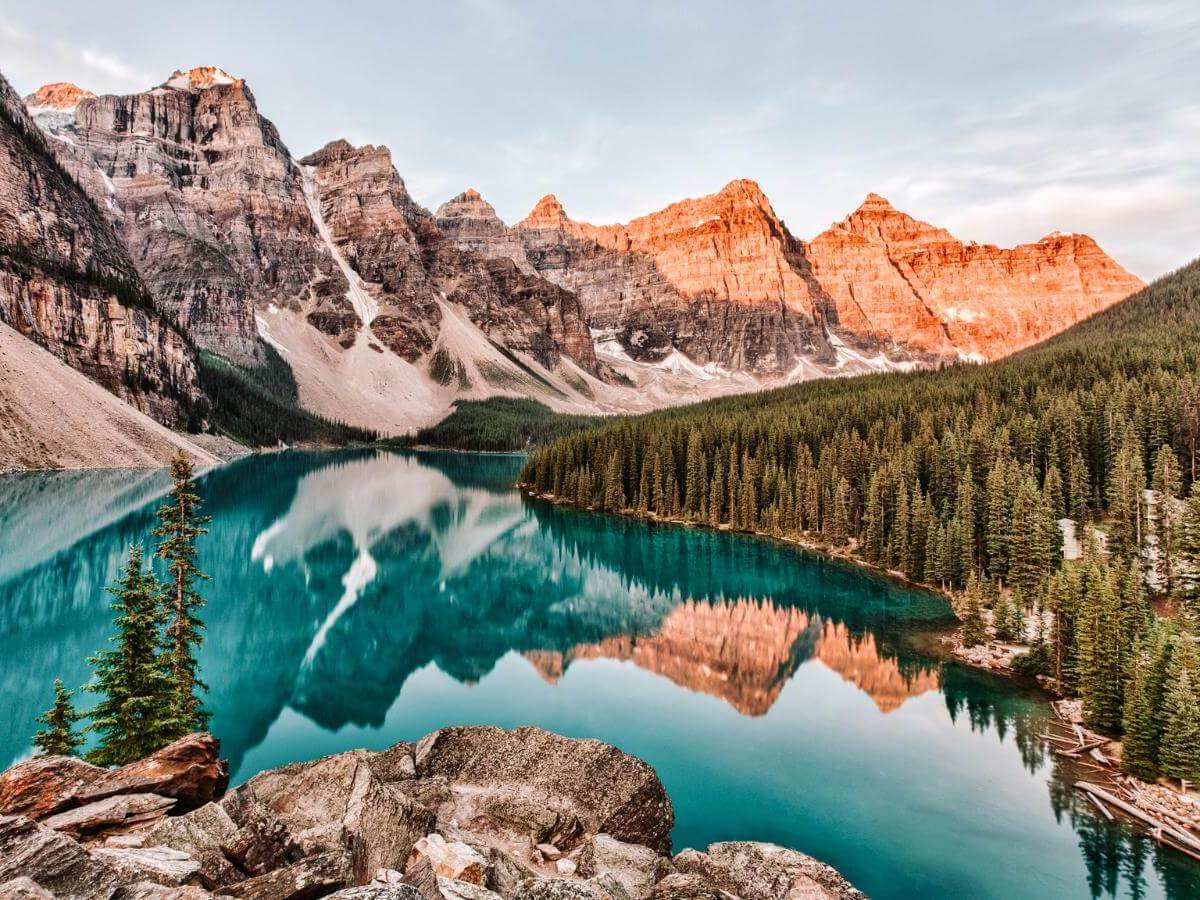
Stay Cool This Summer With 12 Perfect June Destinations To Escape the Heat

12 Adventure Spots in the World for Extreme Sports Enthusiasts

12 Least Safe Countries in the World To Avoid as a Tourist
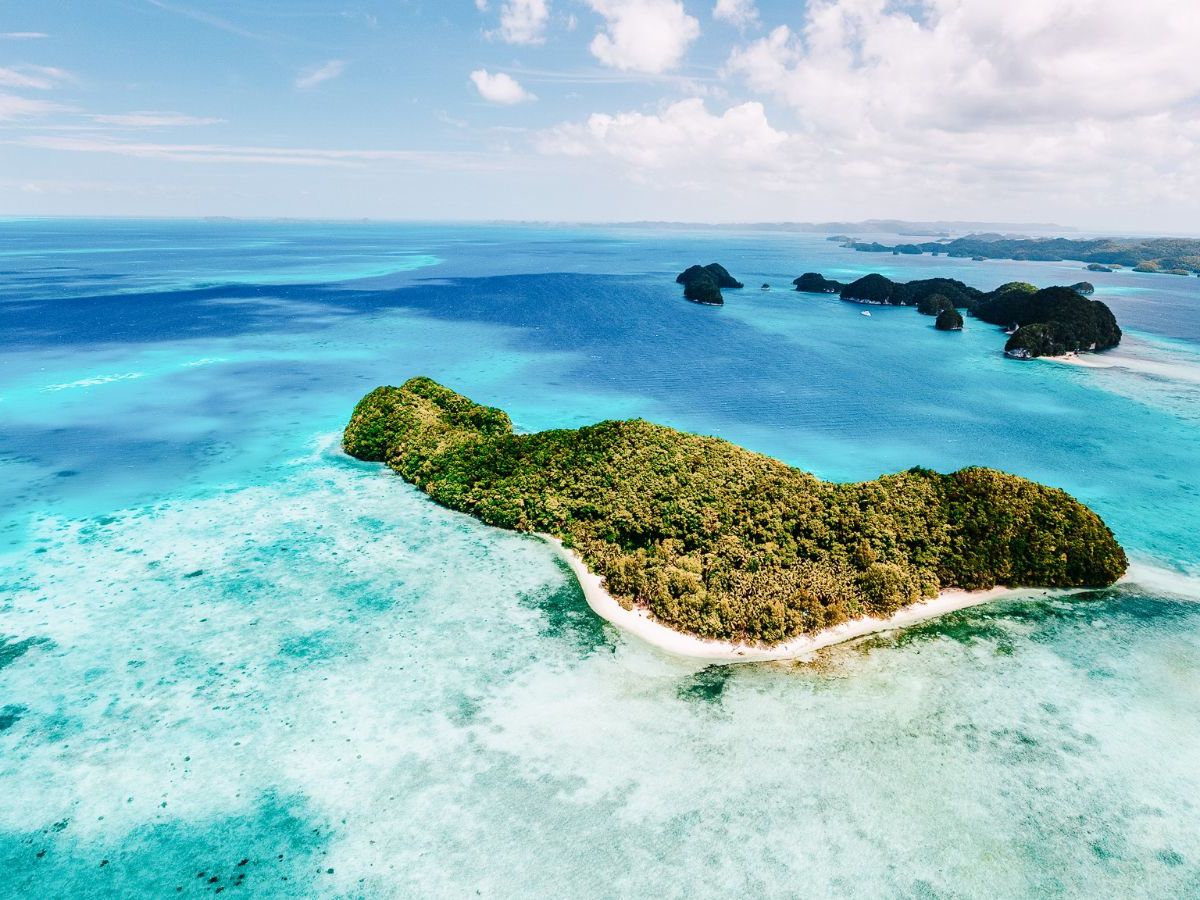
12 Countries You Haven’t Heard of But Should Visit
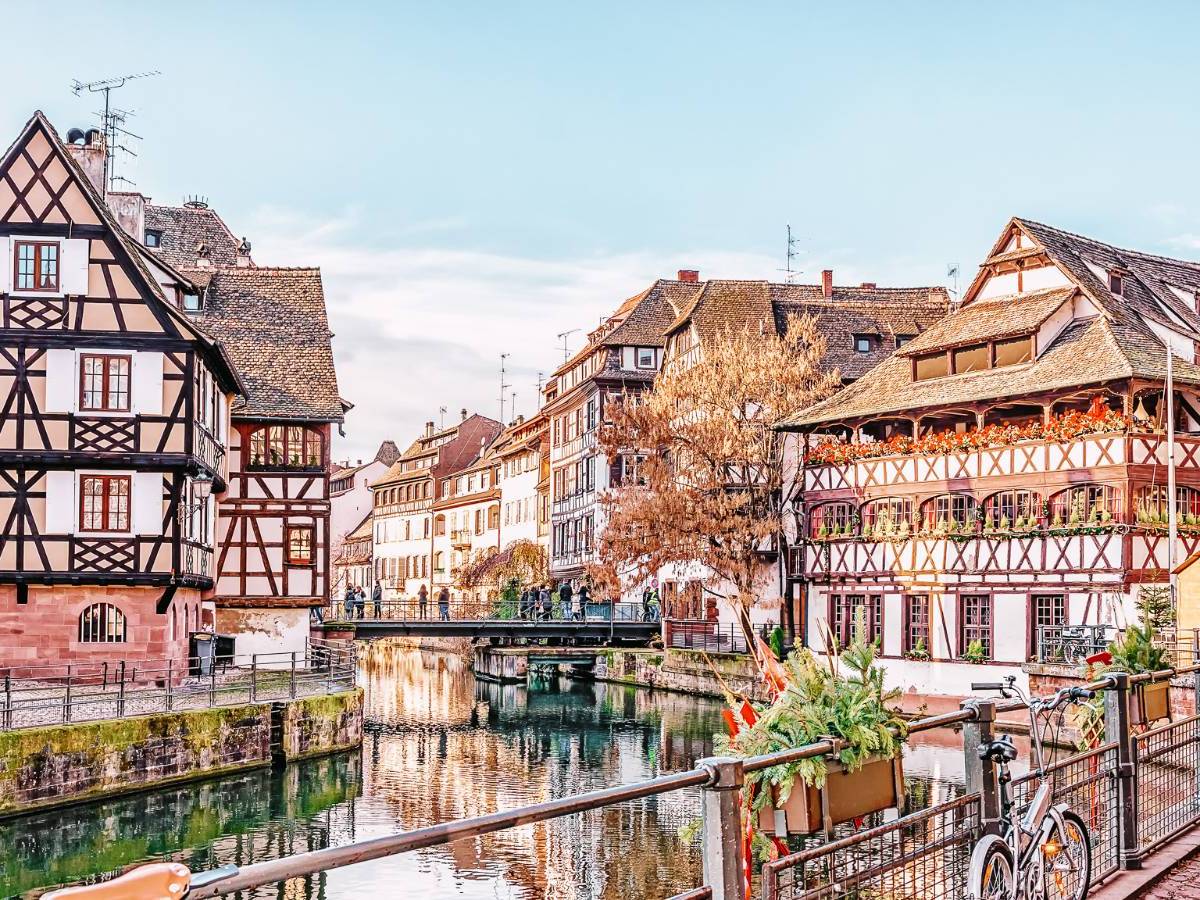
I’m a Travel Writer and These Are the 12 Top Places I’ve Been To – Part III
Loading…
Something went wrong. Please refresh the page and/or try again.
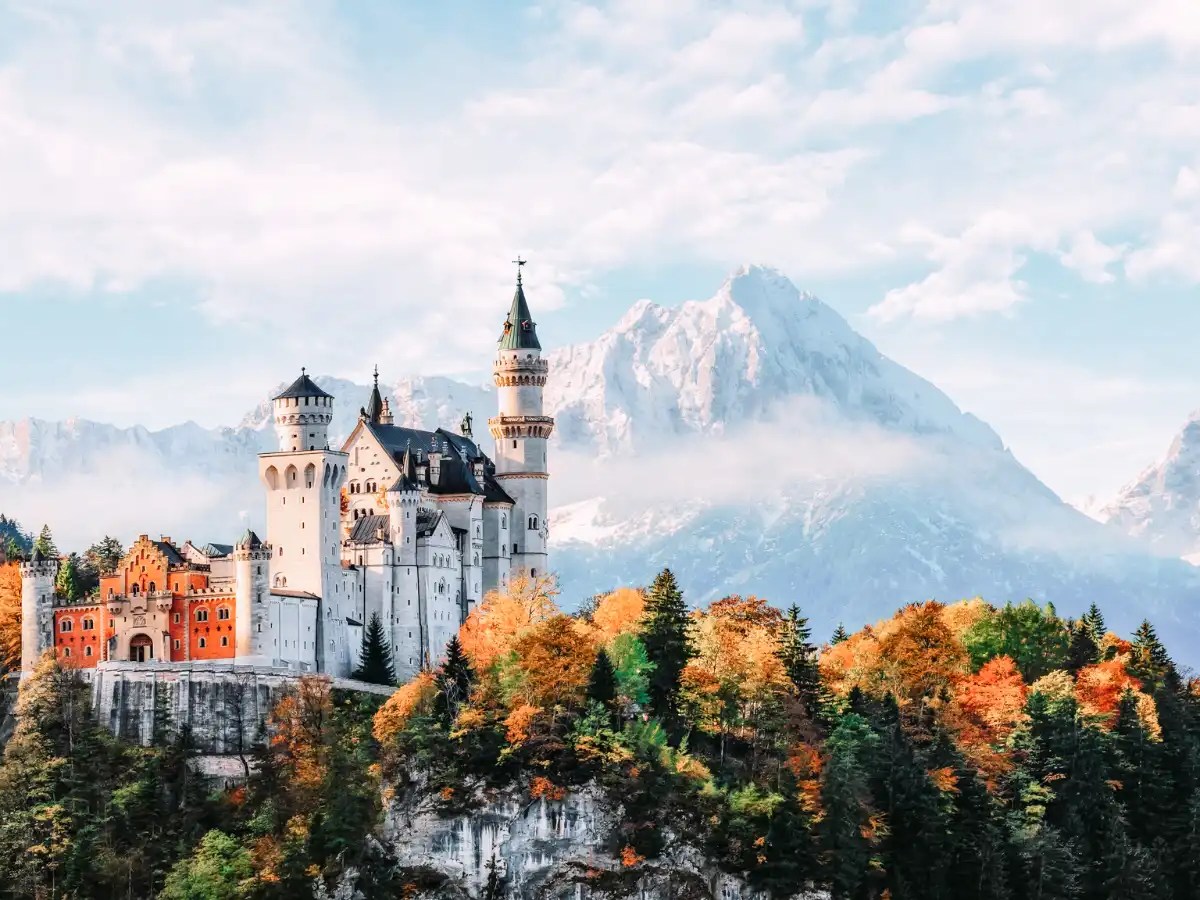
12 Beautiful European Palaces for Your Bucket List

12 US Towns That Feel Like Stepping Into Europe

12 European Spots With the Best Street Food Scenes

12 European Small Towns for Wine Lovers

12 Fairytale Villages in Spain That Will Make You Believe in Magic Again

12 Walkable Cities So Great, You’ll Forget Cars Even Exist

12 European Destinations for an Unforgettable Autumn Experience
Travel planning resources.
🛏️ Book hotels 🚗 Rent a car 🎡 Find tickets and tours ✈️ Book flights
🚕 Find airport pickup ⛴️ Book ferries 🚂 Find train tickets ⭐ Get travel insurance

Tracy Chesterson is a freelance content writer specializing in travel. UK-based, she’s traveled widely, particularly in Europe, Oceania, and Southeast Asia, and spent a year exploring Australia. Tracy has also worked in the travel trade. In her spare time, she loves to spend time outdoors and plan future trips.
Share this:

Similar Posts
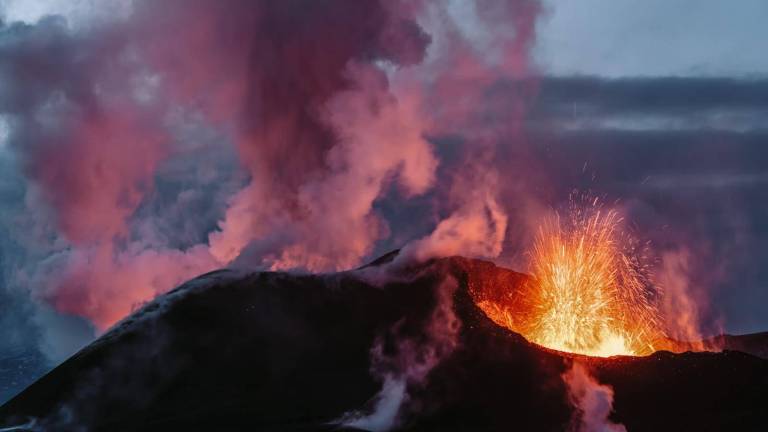
12 Spectacular Volcanic Destinations for Thrill Seekers

12 Must-Visit Cities in the World for Your Bucket List

12 Most Stunning Coastal Drives in the World You Must Not Miss

13 UNESCO World Heritage Sites To Visit in Your Lifetime

These Scenic Train Rides Redefine Sustainable Travel

12 Unique Theme Parks for an Unforgettable Family Adventure
Leave a reply cancel reply, discover more from world wild schooling.
Subscribe now to keep reading and get access to the full archive.
Type your email…
Continue reading
- Search Please fill out this field.
- Manage Your Subscription
- Give a Gift Subscription
- Newsletters
- Sweepstakes
9 Best Trips for Unforgettable Wildlife Encounters Around the World, According to Travel Experts
For a life-changing, ethical animal encounter, book one of these expert-approved travel experiences.
:max_bytes(150000):strip_icc():format(webp)/Liz-Cantrell-2000-e83923ad242748d98c2f1cb8afd13b65.jpeg)
Nature travel helps us appreciate the scope of our planet and our place in it. In the last few years, many of America's national parks set new records for visitation , with travelers seeking not just beautiful landscapes, but meaningful wildlife encounters.
So, with international borders reopening, we asked Travel + Leisure's A-List of expert travel advisors for their favorite animal experiences around the world. Whatever your passion (photography, conservation , research) or geographic interest (jungle, savannah, deep sea), these ethical and enriching trips will make lasting memories.
Helping Baby Elephants in Kenya
" Reteti Elephant Sancutary is my children's favorite place on earth. This center is dedicated to rescuing baby elephants, and visitors can interact with the babies during their daily feedings. However, being the primary animal orphanage in the Northern Rangelands of Kenya, many other species also end up here. During our last visit, my daughter bottle-fed a baby rhinoceros, Loijipu, who was only four weeks old. The center also has a pet gerenuk, Gilby, who goes on walks with you like a dog. You can hand feed the small family of hand-reared giraffes, and you never know if there will be a baby zebra, kudu, or porcupine. This is a nature-sensitive place to interact with African rescue animals of all shapes and sizes." — Teresa Sullivan, Mango Safaris
Spotting Rare Birds and Lizards in New Zealand
"New Zealand is filled with unique creatures, like the prehistoric tuatara, an animal that looks like a lizard and is the closest relative to the dinosaur. Another rare species found here is the kea, the world's only alpine parrot. While the kea is easily seen in alpine areas — and the cheeky bird isn't afraid to say hello — the tuatara is trickier to spot. I suggest going to Southland Museum , where you can meet Henry, a tuatara who is over 110 years old, or spotting them in the wild on Tiritiri Matangi Island." — Corinne Goodman, Down Under Endeavours
Looking for Beluga Whales in the Northwest Passage
"For travelers who want a truly unique wildlife experience, a cruise can be the best option. On a 16-day trip aboard Ponant's Le Commandant Charcot, you'll venture to the Southern Ocean and view emperor penguins. Even more impressive is a 22-day trip to the Northwest Passage on the National Geographic Resolution to see a pod of beluga whales or, if you are particularly fortunate, even a group of narwhals. — Mary Curry, Adventure Life
Researching Manta Rays in the Maldives
"The Marine Life Discovery Center in the Maldives at the Four Seasons Landaa Giraavaru is a wonderful place to learn about a variety of marine creatures, like manta rays. You can participate in the marine biologists' research projects and help rebuild reefs — plus, the center runs a rehabilitation program for sea turtles." — Amalia Lazarov, Travelicious
Rhino Conservation in South Africa
"The best new animal experience in 2022 are the two new Marataba Conservation Camps. The activities offered are run by conservationist, vets, and researchers, and they want guests to participate in all the projects. Guest will see wildlife but also get to monitor, track, and collect data. Rhino conservation is at the heart of Marataba, and clients will engage with Dr. Andre Uys, the managing director of Marataba Conservation. I think this is one of the most innovative and exceptional conservation experiences in Southern Africa right now. It is also a plus that the area has gorgeous views of the Waterberg Mountins (the oldest red oxidized sandstone mountains in the world — some people come here just for the geology)." — Elizabeth Gordon, Extraordinary Journeys
Watching Snow Monkeys in Japan
"Seeing the snow monkeys bathing in an onsen in Jigokudani in Nagano Prefecture is a divine experience, as is seeing the cranes on the northern island of Hokkaido." — Scott Gilman, JapanQuest Journeys
Learning From Horses in New Mexico ... or Italy
" Equus in Sante Fe , walkable from the Four Seasons Resort Rancho Encantado , has an incredible equine-assisted transformational coaching program." — Michelle Murré, Azurine Travel
"One of my favorite things to book for clients is an experience with Tuscan Cowboys (Buttero) in the heart of the Tuscan countryside. It's a beautiful way to spend time in one of Italy's most famous regions, but also to learn something new." — Andrea Grisdale, IC Bellagio
Going All Out in the Galápagos
"If you are a photographer, a handful of Galápagos ships offer cruises with some of the best wildlife photographers in the world. You are on intimate luxury ships, some with only 20 guests on board. You'll be side by side with sea lions and blue-footed boobies, learning photography tips and skills that'll turn your ordinary vacation photos into National Geographic-style shots. And best of all, the animals in the Galápagos are known for their lack of fear of humans. You are guaranteed to be just inches away from most of the iconic wildlife in the archipelago." — Allie Almario, Premier Tours
Related Articles

- Visitor Centers & Exhibits
- Things to Do
- Get into Your Sanctuary Day
- Wildlife Viewing
- Latest News
- Press Releases
- Earth Is Blue
- Earth is Blue Magazine
- Stories from the Blue
- Notes From the Field
- Federal Register Notices
- Maritime Heritage
- Socioeconomics
- Small Boat Program
- Get Involved
- Photos & Videos
- Virtual Dives
- Sanctuaries Live
- Indigenous Peoples
- Policy & Planning
- Publications
- Strategic Plan
- Work For Us
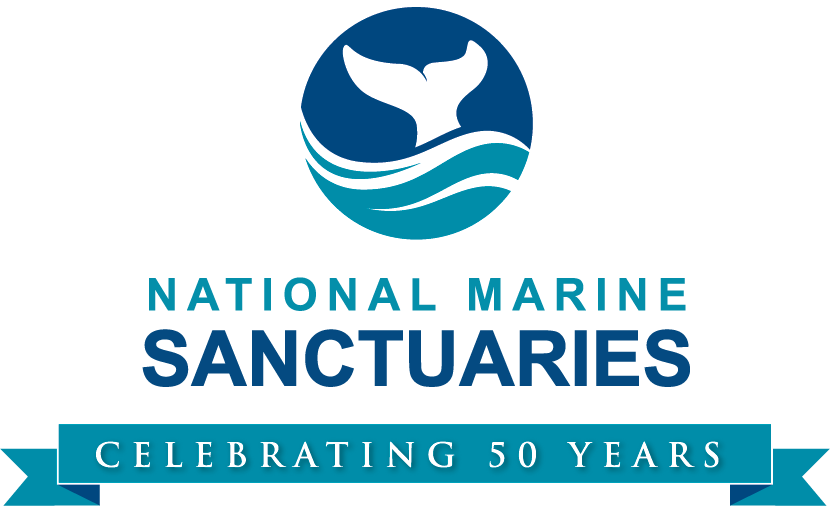
Wild Sanctuaries: Wildlife, Wild Places, and Wild Being
50th Anniversary Sanctuary Signature Articles
By Elizabeth Moore | August 2022
Photo: Marconi Beach at sunrise, in Cape Cod National Seashore. Image: National Park Service

- Wild Sanctuaries
In 1856, at the end of one of his last summers, Henry David Thoreau spent a cool and rainy day outside near his home in Concord, Massachusetts, wandering the woods and wading into bogs to collect cranberries. When he got home, he made an entry in his journal: "It is in vain to dream of a wildness distant from ourselves." 1 It's part of a brief paragraph in a heavily detailed description of his day, but Thoreau appears thoughtful as he stresses its importance. If you don't carry wildness in you, the 165-year-old words tell us, then you will never find it, no matter where you travel. He couldn't know how consequential those words are for those of us alive today.
Let's take a closer look at the entwined ideas of wildness and wilderness. Wildness is a state of mind, a recognition that we are part of nature and a willingness to open ourselves to all the gifts that come with it: a sense of kinship with the life around us, a feeling of wonder about our magnificent planet, and the fulfillment of a need to take care of it. Another way to look at this is the concept of biophilia (derived from Latin: "life" + "affection or love for"), the theory that humans have an innate need to connect with nature and living things. Coined by psychoanalyst Erich Fromm in the 1960s and popularized by preeminent American scientist Edward O. Wilson in his book of the same name in 1984, 2 many experts have accepted biophilia as the underpinning that explains the many benefits that being in nature has for humans. Beyond the survival value of the food, clean air, clean water, and medicine that nature provides, it also alleviates our tension and anxiety. Being outside or even having natural elements like natural light, houseplants, and pets in our interior spaces relieves stress and promotes greater general wellness. The artistic inspiration and spiritual sustenance that we derive from nature also promotes our physical and emotional health. In short, nature is good for us because we evolved in nature.
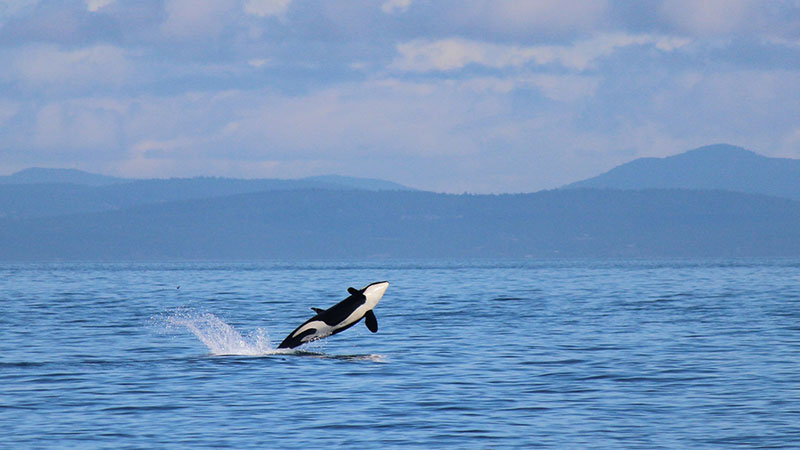
Getting Back to Nature
Wilderness has many meanings; for this article, it means an area with healthy wildlife and habitats that has little or no development. These are places where we can get "back to nature," a phrase whose appearance in writing skyrocketed in the early 1900s as we were seeing the unfortunate impacts of the nation's industrial revolution on our natural resources and wild places. But there are few places left in the world that haven't been significantly impacted. A recent study published in "Frontiers in Forests and Global Change" warns that human hands have touched 97% of the land area on our planet outside the inhospitable zone of Antarctica. 3 An earlier study from 2018 published in "Current Biology"carried similar warnings for the ocean: 87% of the ocean has been subject to anthropogenic stressors like pollution and habitat disturbance.4 Even those sites we consider to be the most healthy of the sanctuary system—offshore areas like Cordell Bank and Gray's Reef national marine sanctuaries and mostly uninhabited places like Papahanaumokuakea Marine National Monument—have been negatively affected by human activity. But even these impacted places are still important to wildlife, as homes, resting places, cafes, nurseries, travel lanes, and way stations. Let's check out a few examples.
Wildlife in Wild Sanctuaries

Stellwagen Bank National Marine Sanctuary off the coast of Massachusetts may be best known for its whale watching, but it's also an important area for resident and migratory birds. One of them, the endangered roseate tern, is a deceptively delicate-looking bird with a slim body, long forked tail, and long, slender wings, mostly white or gray with a tidy black cap and a pink blush on its chest plumage that inspired its name. But the bird is more hardy than it looks, with a loud distinctive cry that has generously been called squeaky and the fortitude to travel long distances both to feed offshore and during its annual migration. They winter in the Caribbean and South America, and spend their summers in the northeastern U.S., including in the sanctuary where they travel offshore each day to dine on small, silvery sand lances

Slow in speed and mild in manner, the West Indian manatee is a so-homely-it's-adorable aquatic herbivore, some of whom spend winter months down in the Florida Keys to escape cold waters. They gather in nearshore waters where seagrass beds and other vegetation provide the bulk of their diet. Boat strikes have been a long-time threat to manatees, so much so that many individuals are identified by boat propeller scars on their backs. But they have recently faced additional threats. This last winter, a seagrass die off led to the starvation of 1,000 manatees, a huge toll on a population that is estimated at about 6,800. While experts rescue and rehabilitate individual animals, other longer-term projects, such as replanting seagrass beds, are also underway. Protected places frequented by manatees, like Florida Keys National Marine Sanctuary and Crystal River National Wildlife Refuge, are critical to their survival.

Flower Garden Banks National Marine Sanctuary is famed—and named—for its incredible deep-sea corals. But the sanctuary also protects one of the most amazing but little understood large animals of the deep: whale sharks. Whale sharks are members of the shark family and adults can reach sizes greater than a human being, but they pose no danger to us. Unlike most shark species, they are filter feeders, scooping small fish and plankton from the water column as they swim. Whale sharks are warm water species found in tropical and subtropical parts of the ocean; those that frequent the sanctuary move between the Gulf of Mexico and the waters off Mexico's Yucatan Peninsula. As their social, reproductive, and migratory behaviors are still largely unknown, its conservation status is uncertain. Protected areas like the sanctuary and Yum Balam Nature Reserve in Mexico help protect the future of this species.

Northern fur seals were once hunted so far toward extirpation that experts believed they would never be able to recover. But the signing of the Fur Seal Treaty in 1911 and the passage of the Marine Mammal Protection Act in 1972 helped save the last populations of the fur seals. Today, the Farallon Islands, protected as Farallones National Wildlife Refuge, and the waters around them, protected by Greater Farallones National Marine Sanctuary, are one of the places where the fur seals can safely rest, feed, and breed. In 1996, the first pup seal in recorded history was born in the islands; more births have followed, slowly increasing the numbers of this still vulnerable species. In the many more years of recovery ahead, the sanctuary and other protected places will continue to be vital for the fur seal's future.
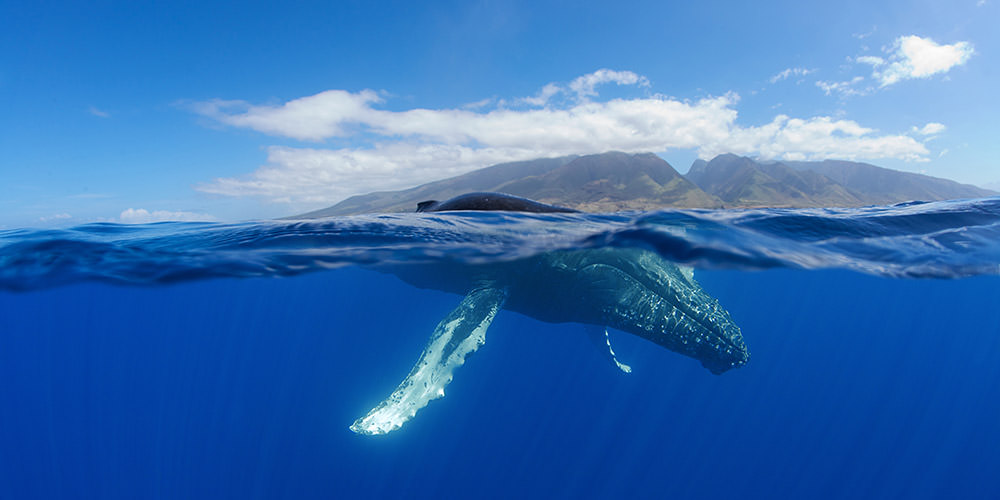
Hawaiian Islands Humpback Whale National Marine Sanctuary protects its namesake animal and its habitat. Commercial whaling once so decimated the numbers of the humpback whale, experts didn't believe humpback whales ever came to Hawai‘i. Legal measures like passage of the Marine Mammal Protection Act and the creation of the sanctuary in 1992 helped the population recover. Now about 10,000 animals—two-thirds of the North Pacific humpback whale population—spend each winter in and around the islands. They use the warm, shallow waters of Hawai‘i to mate, give birth, and raise their young.

Wildness in Modern Society
One of Thoreau's most famous quotations came from his essay "Walking," one of the last manuscripts he worked on; which was published in June 1862, a month after his death at a tragically-young 44:
"In wildness is the preservation of the world." 4
He could not have foreseen the global challenge that faces us today in the worsening impacts of climate change, an ongoing mass extinction, and the increasing demands we are placing on our ocean for food, drinking water, transportation, energy, carbon storage, and other needs. But his remedy is still one of our best ways forward, in both cultivating our wild state of mind and in stewarding our wild places.
Find Your Wild
How do we get back in touch with our wild side? We can visit a national marine sanctuary or other park, to contemplate, explore, or regain our wildness. Wander stretches of wild beach in Olympic Coast National Marine Sanctuary, or snorkel the seagrass meadows of Florida Keys National Marine Sanctuary. Throw out a line in Channel Islands National Marine Sanctuary or kayak kelp forests in Monterey Bay National Marine Sanctuary. Dive among historic shipwrecks in Thunder Bay National Marine Sanctuary or learn about the entwined natural and cultural riches of Papahānaumokuākea Marine National Monument at the Mokupāpapa Discovery Center.

Brave rough offshore seas to see the bird of a lifetime in Cordell Bank National Marine Sanctuary, the charismatic manta rays of Flower Garden Banks National Marine Sanctuary, the sea turtles of Gray's Reef National Marine Sanctuary, or the humpback whales of Stellwagen Bank National Marine Sanctuary. Volunteer with the dedicated members of Greater Farallones National Marine Sanctuary's Beach Watch or the Potomac Riverkeepers of Mallows Bay-Potomac River National Marine Sanctuary. Balance on the paddleboard, practice yoga on the beach, read a book seaside, or take photos to share with family and friends: the point is to connect with nature in whatever way works for you.

How do we go about preserving and restoring places in which to be wild? One of our best ways is creating, expanding, and enhancing our parks and protected areas. Some of the world's oldest modern parks, including those with water, are in the United States, Katmai National Park, Pelican Island National Wildlife Refuge, and San Diego Marine Life Refuge among them. We were among the first countries in the world to pioneer modern marine protected areas. And, according to the United Nation Environmental Programme's Protected Planet database, the U.S. safeguards 13% of its lands and 19% of its waters in parks and other protected areas; globally 16% of land area and 8% of our ocean is protected.
America The Beautiful
But many experts have begun to tell us that this isn't enough. There have been recent goals articulated by various organizations, under the slogan "30 x 30," meaning we should protect 30% of our land and 30% of our waters by 2030, which is also the goal of President Biden's America the Beautiful Initiative . A recent scientific paper recommends protecting 40% of our ocean in order to adequately protect biodiversity and speed recovery of endangered species. 5 Edward O. Wilson, who we met earlier as the author of " Biophilia " and who passed away in late 2021, was also the author of a 2016 book called " Half-Earth: Our Planet's Fight for Life ," 6 which advocates for setting aside 50% of our lands and waters. The rationale behind these kinds of goals is that protecting a significant portion of our lands and waters as parks or other conservation areas protects and restores our biodiversity, maintains and restores our natural infrastructure and ecosystem services, mitigates climate change impacts, addresses historic injustices about minority access to parks, and allows for sustainable and ecologically-sound economic growth. One recent expert analysis found that expanding our protected areas to 30% of our lands and waters would generate an extra $64 billion to $454 billion in revenues by 2050 than if no expansion were undertaken. 7

1 The Journal of Henry D. Thoreau edited by Bradford Torrey and Francis H. Allen, Houghton Mifflin Company, Boston, 1906.
2 Biophilia by Edward O. Wilson, Harvard University Press, Cambridge, MA, 1984.
3 "Where Might We Find Ecologically Intact Communities?" by Andrew J. Plumptre et al. in Frontiers in Forests and Global Change 4:626635. doi: 10.3389/ffgc.2021.626635.
4 "The Location and Protection Status of Earth's Diminishing Marine Wilderness: by Kendall R. Jones et al . in Current Biology 28 (15) (August 6, 2018): 2506-2512.e3.
4 " Walking " by Henry David Thoreau in The Atlantic Monthly 9 (56) (1862): 657-674.
5 "Conserving Threatened Marine Species and Biodiversity Requires 40% Ocean Protection" by Tamlin Jefferson et al . in Biological Conservation 264 (November 2021): 109368.
6 Half-Earth: Our Planet's Fight for Life by Edward O. Wilson, Liveright Publishing Corporation, New York, 2016.
National Wildlife Refuge System
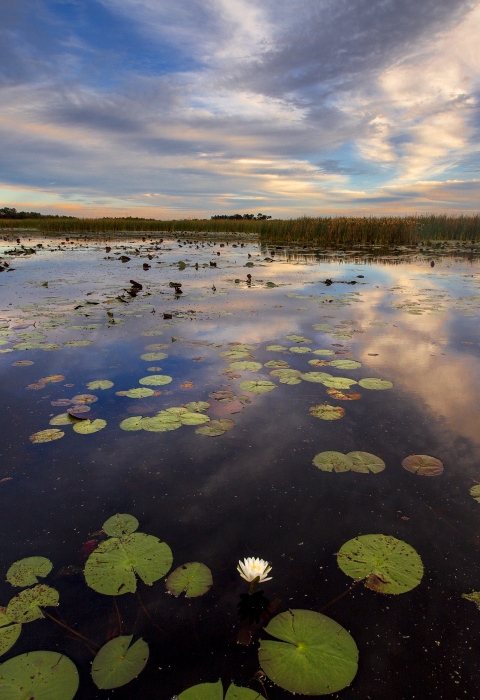
Our Services
Each unit of the Refuge System — whether it is a wildlife refuge, a marine national monument, a conservation area or a waterfowl production area — is established to serve a statutory purpose that targets the conservation of native species dependent on its lands and water. All activities on those acres are reviewed for compatibility with this statutory purpose. The Refuge System deploys a host of scientifically sound management tools to address biological challenges. These tools, which range from active water management to wilderness character monitoring, all are aimed at ensuring a balanced conservation approach that enables wildlife and people to thrive.
Find a National Wildlife Refuge
Through partnerships, the U.S. Fish and Wildlife Service leads the way in developing community-driven conservation solutions that reap ecological and economic benefits for fish, wildlife and people. Within the Refuge System, we work with landowners, Friends groups and local communities.
Latest Stories and Topics
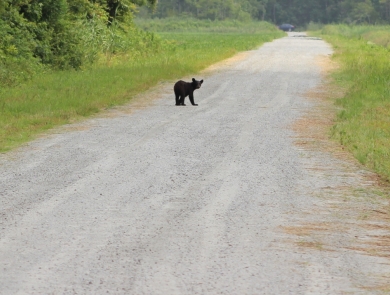
The National Wildlife Refuge System offers services to recreational visitors, neighboring private landowners and local communities.
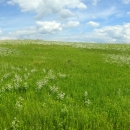
In the United States, the Prairie Pothole Region is located within the northern Great Plains in parts of Iowa, Minnesota, Montana, North Dakota, and South Dakota. Characterized by thousands of shallow, glacially formed wetlands known as potholes, the Prairie Pothole Region provides habitat for...
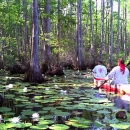
Some 30 national wildlife refuges charge visitors a nominal entrance fee (generally $3-$5 daily) to cover road and facility maintenance. If you are a regular visitor or would like to visit other public lands, you could save by buying an America the Beautiful Federal...
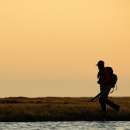
Some commercial, recreational and research activities are allowed on national wildlife refuges only with a special use permit issued by the local office, and are subject to specific conditions and fees. This permit requirement is meant to ensure that all activities at the federal site are...
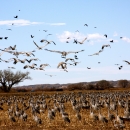
Cooperative agriculture — partnering with farmers and ranchers to meet wildlife management objectives — is a long-standing practice on national wildlife refuges (50 CFR 29.2). Cooperative agreements between the U.S. Fish and Wildlife Service and farmers or ranchers may permit grazing by cattle...
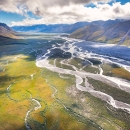
The National Wildlife Refuge System provides a variety of geospatial web tools for researchers, cartographers, partners, recreational visitors and others who want to incorporate our authoritative data layers into their map products or spatial analyses. Each layer includes metadata...

The Every Kid Outdoors program allows 4th-graders to see America’s natural wonders and historic sites for free.
Cost: Free, non-transferable, valid for the duration of the 4th-grade schoolyear though the following summer (September-August).
Our Library
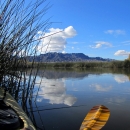
You are exiting the U.S. Fish and Wildlife Service website
You are being directed to
We do not guarantee that the websites we link to comply with Section 508 (Accessibility Requirements) of the Rehabilitation Act. Links also do not constitute endorsement, recommendation, or favoring by the U.S. Fish and Wildlife Service.
You will be redirected to your dashboard shortly. We will also call you back in 24 hrs .
- Discover These Top 19 Idukki Tourist Places To Make Your Trip Memorable In 2024
21 Jun 2023
A proud home of South India’s highest peak, Anamudi that stands at a height of 2,695 meters, Idukki is one of the most stunning hill stations in Kerala. Housing 13 other peaks with a height of over 2000 meters, it attracts tourist from across the globe for its wildlife sanctuaries, hill stations, spice plantation centers, and mountain treks. And to experience the best of all these natural marvels, include these mesmerizing Idukki tourist places that will add the much needed charm to your holiday in Kerala .
19 Popular Idukki Tourist Places
Are you planning a trip to Idukki? Idukki is known for its scenic beauty and is believed to be a heaven for nature lovers. Here’s our pick of the best Idukki tourist places for a fun getaway with your friends and family. Take your pick and include them in your Kerala tour itinerary.
1. Idukki Wildlife Sanctuary

Image Source
Spread across an area of 70 sq. km, the Idukki Wildlife Sanctuary is one of the famous tourist places in Idukki . Situated at an altitude of 450 to 748 meters, the sanctuary occupies the forest land between the Cheruthoni and Periyar rivers and is a natural habitat for several species of animals. Featuring a picturesque lake around the sanctuary, the whole region is covered by tropical, and evergreen trees. This is one of the most popular things to do in Idukki .
Location: Vellappara, Painavu, Idukki, Kerala 685603 Timings: Monday to Sunday – 9 AM to 6 PM
Kerala In Summer: 10 Serene And Scintillating Places To Visit In This Heaven
Kerala Holiday Packages On TravelTriangle

Spellbinding Cochin Family Tour 2D/1N Package @ Rs 2,750
Plan your trip today!

Marvelous Kerala Tour Package of Alleppey 3D/2N @ Rs 7,500
Get quotes from multiple travel experts.
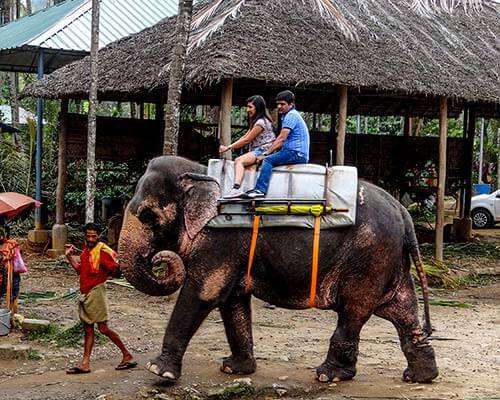
Alleppey-Kovalam Family Package 4D/3N @ Rs 9,000
Compare & customize quotes before booking.

Wonderful Kerala Family Tour 5D/4N Package @ Rs 12,800
Have Questions? Talk to our travel experts today.
Delightful Kerala Family Tour 8D/7N Package @ Rs 21,700
Best prices guaranteed. EMI option available.

See more at TRAVELTRIANGLE.COM
2. Idukki Arch Dam: Peaceful Glances

Constructed across the hills of Kuravan and Kurathi, the Idukki Arch Dam stands tall at a height of about 550 ft. Recognized as the world’s second and Asia’s first arch dam, the massive Idukki Dam can be witnessed in all its glory on the Periyar river. The natural beauty surrounding the dam is breathtaking and is one of the most popular places to see in Idukki .
Location: Near Idukki Wildlife Sanctuary, Idukki, Kerala 685602 Timings: N/A
3. Calvary Mount

Of the many popular Idukki places to visit, the Kalvari Mount is a must-visit and one of the most beautiful places to visit in Idukki for couples . Offering charismatic views of the gorgeous landscape that stretches from the Idukki Reservoir to the famous Ayyappancoil, your visit to Idukki is totally incomplete without visiting the Calvary Mount Viewpoint. This place is surrounded by beautiful homestays in Idukki offering a perfect vacation.
Location: Near Idukki Reservoir, Idukki, India Timings: N/A
The Ultimate Guide To Top Tourist Places In Kerala

When it comes to Idukki sightseeing , exploring the picturesque hill resort of Painavu is an ideal and a must-thing to do for all travelers. Much famed as the headquarters of Idukki district, Painavu is one of the famous tourist attractions in Idukki . Perched at an altitude of 3,900 ft. and situated inside the Idukki Wildlife Sanctuary, Painavu is also considered to be a great destination for trekkers.
Location: Idukki District, Kerala Timings: N/A
5. Ilaveezha Poonchira

Ilaveezha Poonchira is a lovely valley spread across thousands of acres of land at the foot of three hillocks – Mannakunnu, Kudayathoor Hill, and Thonippara near Kanjar. Known as one of the best Idukki destinations among all the popular places, Ilaveezha Poonchira is an ideal place for trekking and offers breathtaking views of sunrise and sunset.
Location: Ilaveezha Poonchira, Idukki, Kerala 686652 Timings: N/A
Here’s A Serene Private Island In Kerala You Can Rent For Just 12K
Planning your holiday in Kerala but confused about what to do? These Kerala travel stories help you find your best trip ever!

Vivek Writes How His Kerala Honeymoon Was A Perfect Start To His Married Life
Houseboats, Backwaters, & Beauty all around!

Pranav Lists The Best Places In Kerala That He Enjoyed On His Honeymoon
Kochi, Munnar, Thekkady, Alleppey, & lots of pretty islands!

Vishu Tells How Kerala Turned Out To Be The Ultimate Honeymoon Destination
Tea plantations, Backwaters, Houseboats, & More!
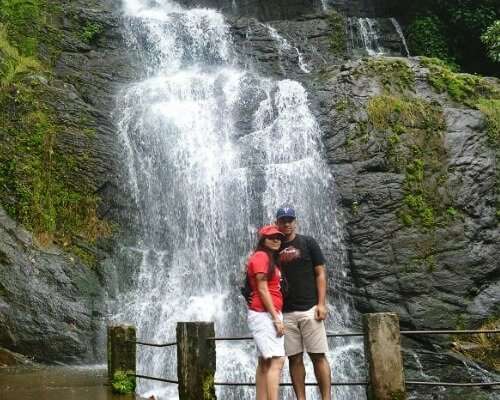
Here Is Why Rajeev Can’t Stop Talking About His Romantic Trip To Kerala
Canoes in backwaters, houseboats, waterfalls, & much more!

Manish’s Family Trip To Kerala Illustrates The Beauty Of God’s Own Country
There were warerfalls, lush hills, beaches, & backwaters!

Kanika Proves That Traveling With An Infant To Kerala Is Totally Safe & Wonderful
Beaches, Backwaters, Spas, & More. Take me there now, please!
6. Thommankuthu Waterfalls

The Thommankuthu Waterfalls located at a distance of 25 kms from the town, is one of the well-known places to visit in Idukki . An awe-inspiring seven-step cascading waterfall gushing down from a height of above 300 feet and with a pool at each level, it is one of the best Idukki tourist places to get up and close with nature, and to enjoy a bit of trekking as well. This is amongst the most mesmerizing waterfalls in Kerala .
Location: Thodupuzha, Idukki, Kerala 685581 Timings: N/A
7. Hill View Park

Situated at a distance of less than half a kilometer from the Idukki Dam, Hill View Park is one of the famous places to visit in Idukki in 1 day, that offers magnificent views of the entire landscape. While wild elephant sighting is a common activity here, the 8 acres of Hill View Park also offers enticing opportunities for boating as well.
Location: Idukki Twp, Kerala 685602 Timings: Monday to Sunday – 9:30 AM to 5:30 PM
Top 28 Honeymoon Places In Kerala For A Bewitching Escape
8. Ramakkalmedu

A beautiful tourist place with green hills all around, Ramakkalmedu is undoubtedly one of the favorite Idukki destinations which also popular for its trekking trails. The view point atop the hill is the highest point in this area which can be reached by a small trek of 3 to 4 kilometers from Ramakkalmedu Junction. This is one of the best places to visit in Idukki .
Location: Nedumkandam, Idukki, Kerala 685552 Timings: N/A
9. Vandanmedu

Located at a distance of 34 kilometers from the city centre, Vandanmedu is one of the world’s largest auction centers for Cardamom. One of the popular tourist places in Idukki for one day trip , Vandanmedu is perched at an height of 4000 ft. on the Thekkady-Munnar route. Be it a laid-back vacation or a fun day out at the cardamom plantation, Vandanmedu is an ideal escape for all travelers.
Location: Udumbanchola, Idukki, Kerala Timings: N/A
12 Resorts In Idukki That Let You Taste A Piece Of Heaven
10. Keezharkuthu Falls

Much famed as the Rainbow Waterfalls, the cascading Keezharkuthu Waterfalls offers surreal views as it gushes down from a height of above 1500 meters. Considered to be one of the famous Idukki tourist places , it also happens to be an ideal place for rock climbing and mountaineering. This is one of the best places to visit in Idukki .
Location: Idukki, Kerala 685602 Timings: Monday to Sunday – 24 Hours
11. Mangala Devi Temple

Images Source
Mangala Devi Temple is a historic shrine in the Idukki district and is located near the border of Tamil Nadu. It sits at an altitude of 1337 meters above the sea level. This site is popular among pilgrims and travelers alike. The temple is dedicated to Goddess Mangala Devi. Perched on a hill, it offers spellbinding views of the lush surroundings. Its location and the rugged old structure makes it one of the most interesting tourist places in Idukki district, Kerala .
Location: Idukki, Tamil Nadu 685509 Timings: N/A
Why You Should Visit Kerala In Spring? Here Are The Beautiful Reasons That’ll Get You Going
12. Ayyappancoil Hanging Bridge
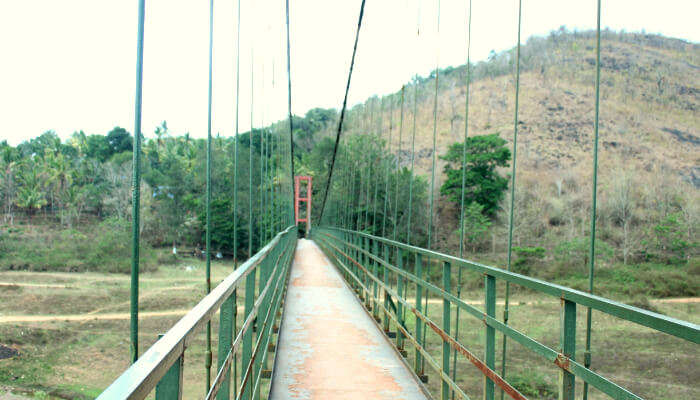
Ayyappancoil Hanging Bridge is a simple yet interesting bridge structure. This is one of the longest hanging bridges in the state. Surrounded by breathtaking natural beauty, taking a stroll on the bridge is a delightful experience. Built across the iconic Periyar River, Ayyappancoil Hanging Bridge gives you a totally different frame the landscape with hues of green.
Location: Mattukatta, Ayyappancoil, Kerala 685511 Timings: N/A
13. Anchuruli Waterfalls
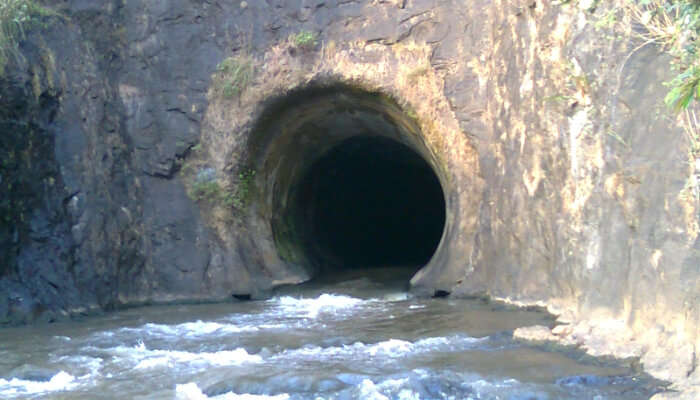
Anchuruli Waterfalls located in the Kanchiyar village of Idukki district. This is a very unique waterfall which is a part of the Idukki arch dam. This includes a 4km long circular tunnel which takes water from Erattayar Dam to the Idukki reservoir. The force of flow keeps changing and one can even see light at the end of the tunnel during lower flow. The surrounding region is covered with semi-evergreen forest grasslands. Its increasing popularity is making it listing it among Idukki’s most famous tourist places .
Location: Anchuruli, Idukki District, Kattappana, Kerala Timings: 6am – 6pm
10 Scenic Hill Stations Near Munnar To Explore
14. Anakkara

Anakkara is a small village in Idukki district, covering an area of mere 50 square meters. The lush green suburb is a picturesque place to visit. Located just 18 kilometers away from Idukki wildlife sanctuary, the climate and landscape of Anakkara is what attracts tourists. This offbeat destination is known for its spice plantations and cascades. This is one of the best places to visit in Idukki .
Location: Idukki Timings: N/A
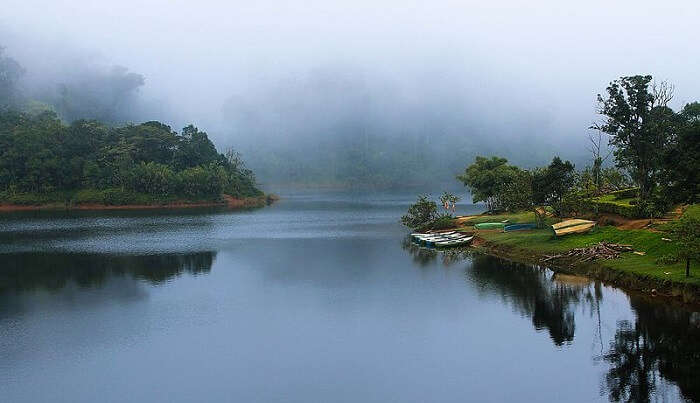
Gavi, one of the most beautiful places in India is a serene village embedded amid the tea estates and dense forests. The place is known for its lush green surroundings. Gavi is just 14km from the Periyar Tiger reserve and is known for its mesmerising sceneries and wildlife. This is undoubtedly one of the best Idukki tourist places . Morning rides are popular here where you will be glancing at the magnificent views of the sprawling tea estates. The place is known for its nature and attracts many adventure lovers from around the world every year.
Location: Pathanamthitta district, Kerala Timings: N/A
7 Places To Visit In Wayanad In May To Experience A Slice Of Heaven In Kerala
16. Kulamavu

If you’re a hiking or trekking junkie, Kulamavu is surely a paradise for you. It is a hill-station known for offering the perfect terrain for an adrenaline kick. With some amazing trekking trails, the place is also adorned with equally enchanting surroundings. Do take a local guide before heading on this enthralling expedition.
Location: Kulamavu, Idukki, Kerala Timings: N/A
17. Nadukani

Nadukani is a hill station nestled at an altitude of 3000 ft above sea level. It is located 25 km from Idukki and is home to some rare kind of fauna. If you are nature lover and love capturing exquisite sites in your camera then you must head to this mesmerizing place during exploring Idukki tourist spots .
Location: Malappuram District, Kerala Timings: N/A
18. Anakarra Falls

Anakarra Falls are located in the peaceful village located in Idukki district and covers an area of nearly 50 square kilometers. It is located nearly 18 kilometers from Idukki Wildlife Sanctuary and is famous for its unique spice plantations and stunning waterfalls. You can also take a trek to this beautiful village and capture the true vibe of this mystic place. This is surely one of the best Idukki tourist places .
Location: Vandanmettu, Chakkupallam Village Panchayats in the Udumbanchola Thaluk of Idukki District Timings: N/A
19. Periyar National Park
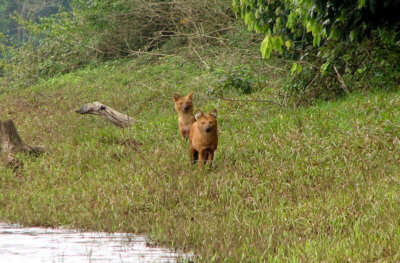
Image Credit: Bernard Gagnon for Wikimedia Commons
Close to the southern part of India, Periyar National Park is located in Periyar of Idukki district, which stretches around the banks of the huge artificial lake. The park is known for the residence of elephants. If you look forward to engaging yourself in some interesting activities, there are ample options available for the same to make this trip a memorable one. Travellers can take rides on the motorized ferry, can choose boat rides that operate throughout the day or can select the bamboo rafting.
Location : Kerala Timings: 6:00 am to 7:00 pm
Munnar In Monsoon: 10 Things To Witness Under The Rain In This Paradise
Mesmerized much? If so then what are you waiting for? Make a plan for a short getaway to reboot yourself by exploring the tourist places of Idukki and cherish the experiences during the trip for the rest of your life. Include the above Idukki sightseeing places in your itinerary and let TravelTriangle plan a personalized Kerala holiday for you!
For our editorial codes of conduct and copyright disclaimer, please click here .
Frequently Asked Questions About Idukki Tourist Places
What is Idukki famous for?
Idukki district is famous for its rich flora and fauna. It is home to the popular Eravikulam National Park and is characterized by the Anamudi mountain. Idukki is one of the greenest districts of Kerala.
Which is the most beautiful place in Idukki?
Idukki district in Kerala is blessed with incomparable natural beauty. Munnar, Vagamon, Periyar National Park, and Eravikulam National Park, are some of the most beautiful places in Idukki.
Is the Idukki Dam open for the public now?
Yes, India`s first arch dam – the Idukki dam- is open to the public for a nominal fee of INR 25 per person (adults).
What is the specialty of Idukki?
Idukki is a marvelous high range district in the Indian state of Kerala that draws travelers with its rugged hills and dense forests. Idukki is a land-locked district that is famous as one of the most nature rich areas in Kerala.
What is the best time to visit Idukki?
The winter season from November to February is the best time to visit Idukki as the weather is pleasant during this time for exploring and indulging in the many activities here.
What is the climate in Idukki?
Idukki has a tropical climate and receives a significant amount of rainfall in most of the months throughout the year. The average annual temperature in Idukki remains around 24.5°C.
How many national parks are there in Idukki?
There are about 5 major national parks in the Idukki district. These are: 1. Eravikulam National Park 2. Silent Valley National Park 3. Pampadum Shola National Park 4. Mathikettan Shola National Park 5. Anamudi Shola National Park
What are the top attractions to visit in Idukki?
Idukki is known for its lush greenery and rich flora and fauna. Attracting a larger number of tourists every year, the place is filled with great sightseeing points. Some of the major attractions to explore on your next trip to Idukki include Hill View Dam, Idduki Dam, Kalvari Mount, Cheeyappara Waterfalls, Meesapulimala, Ramakkalmedu, and much more.
What are the most popular things to do in Idukki with children?
Idukki is filled with great sightseeing points and things to do. Some of the fun things to do in Idukki with your children would be to take a day tour and visit all the major places, go for an elephant safari, and indulge in activities like boating.
People Also Read
Tourist Places In Goa Tourist Places In Kanyakumari Tourist Places In West Bengal
Recent Posts

Step Into Namdroling Monastery Golden Temple

Everything You Need To Know About The Scenic Spot Of Kote Abbe Falls

Hotels in Kallakurichi That Offer Cosy Accommodations At Best Deals
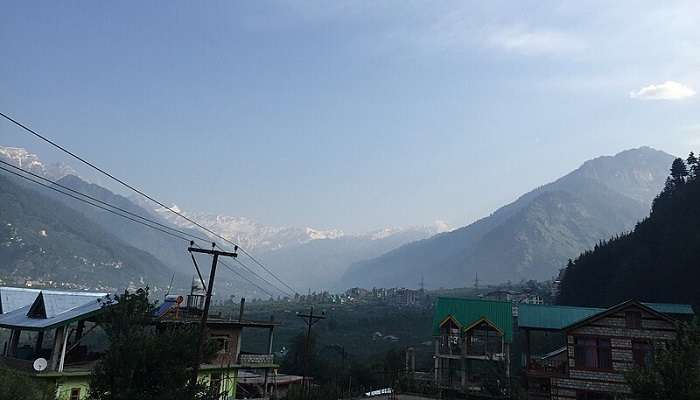
Jagatsukh Is A Soothing Place For Your Trip To Himachal

Hotels In Ramanathapuram That Offers Best Accommodation
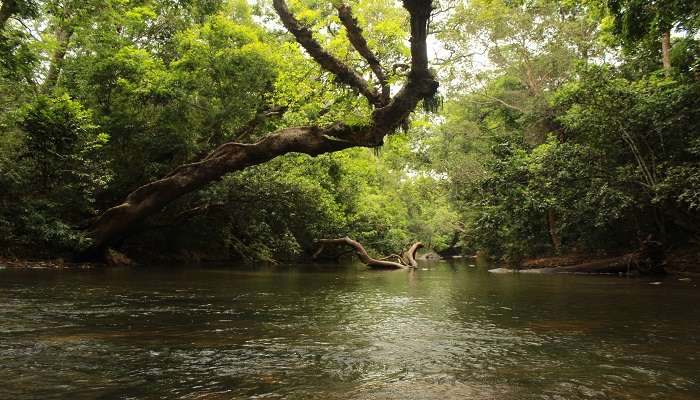
Resorts Near Nisargadhama For An Ideal Vacation
Trending Blogs

20 Mysterious Places In India To Visit In 2024 More Bizarre Than The Bermuda Triangle

10 Scariest Roads In India That Are A Driver’s Nightmare

101 Places To Visit In India Before You Turn 30 in 2024

35 Exotic Places To Visit In December In India 2024 To Enjoy A Surreal Vacation

60 Best Honeymoon Destinations In India In 2024

95 Best Honeymoon Destinations In The World In 2023 For A Romantic Escape!
Best Places To Visit In India By Month
Best places to visit outside india by month.
- TravelTriangle
- Places To Visit »
- Tour Packages
- Honeymoon Packages
- Family Packages
- Budget Tour Packages
- Luxury Tour Packages
- Adventure Tour Packages
- Group Tour Packages
- Kerala Tour Packages
- Goa Tour Packages
- Andaman Tour Packages
- Sikkim Tour Packages
- Himachal Tour Packages
- Uttarakhand Tour Packages
- Rajasthan Tour Packages
- Tour Packages From Delhi
- Tour Packages From Mumbai
- Tour Packages From Bangalore
- Tour Packages From Chennai
- Tour Packages From Kolkata
- Tour Packages From Hyderabad
- Tour Packages From Ahmedabad
- Kerala Tourism
- Goa Tourism
- Sikkim Tourism
- Andaman Tourism
- Himachal Tourism
- Uttarakhand Tourism
- Rajasthan Tourism
- Hotels in Kerala
- Hotels in Goa
- Hotels in Sikkim
- Hotels in Andaman
- Hotels in Himachal
- Hotels in Uttarakhand
- Hotels in Rajasthan

Top 18 Wildlife Sanctuaries in Kerala
Kerala popularly known as God’s Own Country has a wide variety of attractions. Kerala is home to wide variety of wildlife. The rare species of animals, birds, butterflies and marine life in Kerala is a unique and wonderful experience.
The dense green forests in Kerala have so many varieties of birds, butterflies and animals. Most of the wild life in Kerala is in its well maintained wild life sanctuaries. Apart from the scenic spots the wild life sanctuaries is another popular tourist attraction in Kerala.
The wildlife sanctuaries in Kerala provide shelter to various forms of wildlife and also offer the tourists an opportunity to enjoy the wildlife in close quarters in the natural surroundings.
The species of animals present in the sanctuaries include lion-tailed macaque, Nilgiri Tahr, Leopards, Elephants, Tigers, Civet cats, monkeys, squirrels and many more. Besides the wild animals sanctuaries are home to wide variety of birds and butterflies.
Popular Wildlife Sanctuaries in Kerala
1. periyar wildlife sanctuary.
Periyar Wildlife Sanctuary, one of the most important wildlife sanctuaries in India is situated on the banks of Periyar lake in Kerala. The sanctuary is renowned for the large herd of elephants.
The dense evergreen forests and the grassland provides a favorable environment to the herds of elephants, sambars, tigers, gaurs, lion tailed macaques and Nilgiri langurs. This is the only place where you can see wild animals in close quarters. Elephant ride and trekking to the Mangaladevi temple are other entertainment option here.
2. Eravikulam National Park
The Eravikulam national park located about 15 km from Munnar is renowned for the endangered mountain goat of South India Nilgiri Tahr. Other major attractions of the Eravikulam National Park are the rolling grasslands and shoals, which spread over 97 sq km in the Rajamalai hills.
The highest peak of South India, Anamudi, is situated in here. The Eravikulam National Park has three different areas; the core area, the buffer area and the tourism area. Among the three only the tourism area is allowed for visitors.
3. Aralam Wildlife Sanctuary
The Aralam wildlife sanctuary located about a distance of 35 km from Thalassery spread over 55 sq km of forested land on the slopes of the Western Ghats. This Sanctuary has large variety of wonderful flora and Fauna.
The main fauna present at the Aralam wildlife sanctuary include boar, deer, elephant and bison while jungle cats, Leopards and various types of squirrels. Aralam Sanctuary is well known for the Central State Farm, which produces hybrid coconut seeds and is one of the main production centers in the country.
4. Begur Wildlife Sanctuary
The Begur wildlife sanctuary situated about 20 km from Mananthavady in Wayanad district is another beautiful wildlife sanctuary surrounded by lush green and dense forests. This sanctuary is a home to several species of animals like elephant, leopard, spotted deer, bison, tiger, bear and wild boar.
5. Silent Valley National Park
The Silent Valley National Park is the heart of the Nilgiri Biosphere Reserve. It covers an area of about 90 sq km. The important inhabitants in this park include rare birds, tiger and deer. Numerous other species of wildlife like butterflies, moths, Great Indian Hornbill; Lion tailed Macaque and the Nilgiri Laughing thrushes are seen here. The Park is home to a fragile and unique tropical evergreen rain forest.
6. Neyyar Wildlife Sanctuary
7. peppara wildlife sanctuary, 8. peechi-vazhani wildlife sanctuary, 9. idukki wildlife sanctuary, 10. chinnar wildlife sanctuary, 11. muthanga wildlife sanctuary, 12. wayanad wildlife sanctuary, 13. nagarhole wildlife sanctuary, 14. tholpetty wildlife sanctuary, 15. thattekkad bird sanctuary, 16. parambikulam tiger reserve, 17. kadalundi bird sanctuary, 18. pakshipathalam wildlife sanctuary.
Excited About Kerala?
Request A Call Back!
Top Destinations
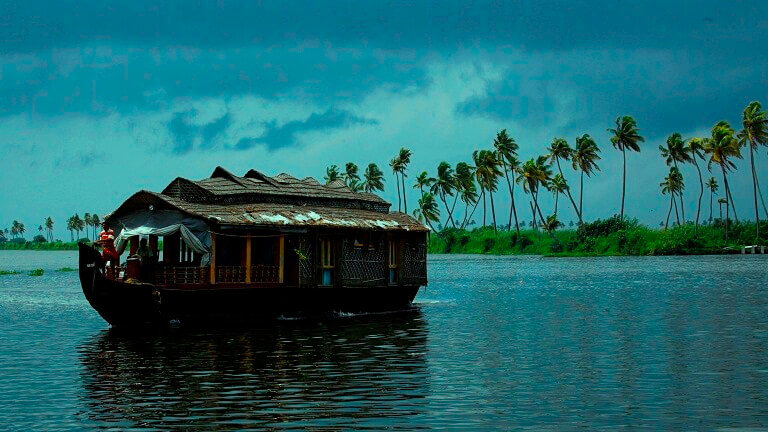
Show All Places to Visit in Kerala
You are using an outdated browser. Please upgrade your browser or activate Google Chrome Frame to improve your experience.

Thanks for signing up as a global citizen. In order to create your account we need you to provide your email address. You can check out our Privacy Policy to see how we safeguard and use the information you provide us with. If your Facebook account does not have an attached e-mail address, you'll need to add that before you can sign up.
This account has been deactivated.
Please contact us at [email protected] if you would like to re-activate your account.
Editor's Note: In response to concerns raised by global citizens we have updated #7 (Black Jaguar White Tiger Foundation.) We appreciate and respect the feedback of global citizens.
Too often in the media, you hear the dark side of animal cruelty. Festivals where dogs are abused then slaughtered for their meat, elephants tortured to learn tricks, and tigers treated in the same manner. For every animal abused though there are many who are rescued and saved from mistreatment. These animals live on, protected by brave people and organizations in incredible locations around the world.
Animals share the planet with humans. They face the ravages of human created pollution and climate change. Protecting them is protecting the planet which shelters humanity.
So the next time you take a trip, consider dropping by one of these animal sanctuaries to see elephants roam freely 24/7 or a nursery where orphaned sloths are treated with love and compassion.
1) Elephant Nature Park - Thailand
Lek is known as “the elephant whisperer,” she began the Elephant Nature Park 20 years ago as a safe-haven for the majestic animals. Elephants in the area are mistreated in the tourism and logging industries in Thailand.
Elephants thrive at the rescue and rehabilitation sanctuary Lek created and works hard to maintain. Some come with dislocated hips, and scars from bull horns (hooks stabbed into an elephant’s ear by a trainer to teach tricks) and are free from a life of pain for the first time.
At Elephant Nature Park you can you can feed and visit with these animals or help give them a mud bath like this adorable video shows, but you won’t see any painting, dancing, or giving rides. A large part of visits include learning about the past of each elephant as well.
If you’re going to see any elephants in Thailand, skip the shows and head to the Elephant Nature Park where elephants roam free 24/7! You might even get to see Lek singing a baby elephant to sleep like the video above. Learn more about visits at their website here .
2) Lone Pine Koala Sanctuary - Australia
A photo posted by Lone Pine Koala Sanctuary (@lonepinekoala) on Feb 3, 2015 at 6:23pm PST
I had the opportunity to visit a very nice zoo in Queensland, Australia several years ago. The zoo boasted that it was one of the few places left which allows visitors to hold koalas. I watched as several of my peers opted in for photos holding the sleepy little marsupials. The Koalas however, were not as delighted. Koalas sleep about 22 hours each day and being woken up to take selfies with tourists is not their idea of fun.
Holding a koala is still a big tourism drive so many zoos allow visitors to pay extra to hold koalas. This generates needed income for communities and zoos that have few other economic opportunities.
Lone Pine Koala Sanctuary has strict guidelines to protect Koalas sleeping patterns. Koalas can only be held for no more than 30 minutes during the day. So they can sleep for a solid 23.5 hours if they want.
3. Sloth Sanctuary of Costa Rica

Founded in 1992, the Sloth Sanctuary of Costa Rica is the world's first sloth rescue center. Made internationally famous in the Animal Planet™ "Meet the Sloths" series, the center cares for injured, orphaned and abandoned sloths. Tours are offered to educate the public about these enigmatic creatures and how their main predator—man—affects the future of their species.
The two types of Costa Rican sloths are Bradypus variegatus (Three-fingered) and Choloepus hoffmanni (Two-fingered). Both have three toes—it's their fingers that distinguish them. Bradypus and Choloepus are actually two entirely separate slow-moving, tree-dwelling, leaf-eating mammals. Their extreme slowness is due to their unique metabolism and physical adaptations for survival in the rainforest.
Scientists at the Sloth Sanctuary revealed that sloths experience tachycardia when held by unfamiliar handlers; this can cause premature death. Sloths are also vulnerable to illness when exposed to outside microbes and allergens. This is why tour guests are able to see rescued sloths up close but without touching or holding them. Tours include a canoe ride to see the sloths' natural rainforest habitat. Human encroachment into this habitat is the single most avoidable threat to the future of the species.
Visit SlothSanctuary.com to learn more about sloths and how you can tour this one-of-a-kind facility.*
4) Tiritiri Matangi Open Sanctuary - New Zealand
A photo posted by Tiritiri Matangi Island (@tiritirimatangiisland) on Nov 13, 2015 at 12:16pm PST
This sanctuary is also a conservation project. In the 1980s conservationists spent ten years restoring the island (used as farmland in previous decades) to its natural habitat in hopes of bringing back native species. Their hard work paid off! Today, the island is an “open sanctuary” where endangered species (like the vibrant takahē) are thriving in their natural setting again.
To get here you can take a ferry from Auckland and make sure to check your shoes and the biosecurity notices because the sanctuary’s staff work hard to protect native bird species and other natural inhabitants from invasive pests.
You can birdwatch and hike the island looking for little spotted kiwis, takahēs, and tuatara. To learn more visit their site here.
5) Wechiau Community Hippo Sanctuary - Ghana

Along the inlets and crevices of African rivers lurk some of the world’s most dangerous animals. Hippos kill an estimated 2,900 people in Africa per year. They are easily frightened and quick to react. Which means they also need to be protected.
In Ghana, there are only two hippo populations left and one of them resides in the Upper West Region on a 40 km span of the Black Volta River. In this region, the Wechiau Community Hippo Sanctuary (created by local chiefs in 1999) allows visitors to view the river’s hippos safely while learning about the importance of hippo conservation.
Check out their website here .
6) The David Sheldrick Wildlife Trust - Kenya
#Kiko feels very paternal towards his Nursery herd, and likes to stand over the babies protectively. However, this towering giraffe isn't as brave as he looks. He recently came upon a tortoise, who immediately retreated into its shell. Kiko was equally scared of his slow-moving friend, and turned on his tail and bolted away! Learn more about the #DSWT's resident giraffe and foster him today at: ►thedswt.org/kiko◄ Image © David Sheldrick Wildlife Trust A photo posted by David Sheldrick Wildlife Trust (@dswt) on Apr 8, 2016 at 5:33pm PDT
According to one of Global Citizen’s staff this is “one of the single best places on Earth.” The David Sheldrick Wildlife Trust has rescued over 150 orphaned elephants and is one of the most successful elephant rescue centers in the world. They have also rescued rhinos, and lead on an Anti-poaching Project along with community development initiatives to provide a comprehensive approach to protecting wildlife.
The center’s long-term goal is to reintegrate rescued elephants back into the wild where they can survive and thrive without threats from poaching.
To learn more about The David Sheldrick Wildlife Trust visit their site , and for incredible and adorable elephant photos try their Facebook page here .
7) Black Jaguar White Tiger Foundation - Mexico
Editor’s Note: After publishing this article many global citizens raised specific concerns about featuring Black Jaguar White Tiger (BJWT). BJWT claims to be a sanctuary for large cats and that the bulk of their animals are rescued from abuse. They have also become a dominant force on social media because of their photos of the animals as well as various celebrities being involved. Reporting from various sources has raised serious concerns about how much BJWT is a sanctuary and how much it is actually an exploitative “petting zoo.” Respecting the opinions of our global citizens we have decided to replace the description of this sanctuary with a link to a Change.org petition asking BJWT to clarify their true nature and treatment of the animals . This article is intended to highlight positive works in providing sanctuary to animals across the globe. If the accusations prove to be correct about exploitative behaviors at Black Jaguar White Tiger, then it does not belong on this list. We at Global Citizen appreciate the passionate opinions of global citizens and thank them for raising concerns. Please sign the Change.org petition HERE to encourage Black Jaguar White Tiger to answer the concerns raised.
8) Chengdu Research Base of Giant Panda Breeding - China
A photo posted by Leanne Petroff (@lealeapet) on Apr 10, 2016 at 1:50pm PDT
Panda’s have an extremely hard time getting pregnant . Female pandas only ovulate once a year which is not so good for the species when they are up against environmental degradation and habitat loss from human development. Fortunately, there are places like the Chengdu Research Base which combines educational tourism, conservation education for visitors and research into panda breeding.
The UN Environment Programme even named this panda refuge one of the top 500 environmental conservation entities .
Learn more and see how you can visit the Chengdu Research Base of Giant Panda Breeding here.

9) Holly Hedge Animal Sanctuary - UK
Aww Oreo couldn't quite reach! Holly Hedge animal sanctuary fun day #hollyhedgeanimalsanctuary #hollyhedgefunday #hollyhedge #jackrussell #doggiecupcake #smellsnice #littlelegs #ashtoncourt #bristol #mollysmunchies A photo posted by Rachel Wotton (@rachelwotton1) on Sep 21, 2015 at 6:03am PDT
Did you know about 7.6 million “companion animals”, primarily dogs and cats. are homeless? Those are just the ones accounted for who enter shelters. While exotic animals are breathtaking to admire and fun for a trip, there are many shelters and rescue centers for domestic animals right in your own backyard.
Holly Hedge Animal Sanctuary is one of them. They rescue starved, abandoned, or abused animals (mostly dogs and cats, and some bunnies, too) and provide them with shelter from mistreatment and “the promise of a better future.”
Check out Holly Hedge Animal Sanctuary here , or try your favorite search engine to learn more about local animal shelters near you.
10) Woodstock Farm Sanctuary - US
A photo posted by Woodstock Farm Sanctuary (@woodstocksanctuary) on Apr 4, 2016 at 1:22pm PDT
Don’t forget about the animals rescued from the animal agriculture industry such as cows, pigs, goats and chickens. These guys need a safe place to live once they are no longer in danger of slaughter for human consumption. These animals may not be considered as cute as baby elephants or sloths but a trip to the Woodstock Farm Sanctuary may convince you otherwise. You can rub the belly of a pig, frolic with goats and feed the chickens all in a day.
To learn more, check out their website here .
Sometimes when you travel it’s easy to jump into wanderlust and go with the flow. Educating yourself on sustainable places to visit can make all the difference in providing you with the most meaningful experience and benefitting the people and place in which you are a guest.
Tourism can either help or hurt places in the world. It can destroy forests and beachfront ecosystems, and perpetuate cycles of poverty in the worst forms. Yet, it has the power to be an extremely beneficial tool for community growth, the protection of a species, and environmental protection.
The choice to invest and promote sustainable development and travel is up to you. Now you know about these incredible refuges for animals which are preserving ecosystems and educating their visitors on what’s best for animals. Plus, seriously how cute are those baby sloths?
* Information about the Sloth Sanctuary of Costa Rica was contributed by Gerald R. Richardson in support of the Sloth Sanctuary of Costa Rica.
Defend the Planet
9 Wonderful Animal Sanctuaries to Visit Around the World
April 18, 2016

Luxury Safari Experiences: 14 Places to See Wildlife in Style
Posted: June 8, 2024 | Last updated: June 8, 2024

Safari experiences have come a long way from camping in the wild with dusty tents.
Luxury safari experiences are a new way of experiencing the wild and exotic animals of South Africa while staying in absolute comfort. These are some of the best spots for a luxurious safari stay.

1. Singita Boulders Lodge, Kruger National Park, South Africa
Singita is a big name in luxury safari experiences, and the Singita Boulders Lodge in Kruger National Park is one of the best. With glass walls and open-air spaces, you get an unobstructed view of the wild surroundings.
The lodge is also situated on the banks of the Sand River in the Sabi Sand Game Reserve. It offers a relaxing experience with heated plunge pools, a wine cellar, and seasonal food offerings.

2. Royal Malewane, Thornybush Private Game Reserve, Greater Kruger
The Royal Malewane offers two luxury lodges at the edge of Kruger National Park. The main lodge has eight suites and an African villa, while the other has three suites and a farmhouse villa.
The villas provide ample space for those who prefer privacy or are on a trip with family. The wildlife in the area is exceptional, with sightings of hundreds of bird species and the top five animals: elephant, lion, leopard, buffalo, and rhino.

3. Wilderness Bisate Lodge, Volcanoes National Park, Rwanda
Championing responsible ecotourism and conservation of Rwanda’s wildlife and natural environment, the Wilderness Bisate Lodge offers a refreshing stay. It is aesthetically nestled within an amphitheater of eroded volcanic stone, and you can even spot six volcanoes from the top of the property.
The lodge offers spacious accommodations that incorporate Rwandan architecture. It also provides a unique gorilla trekking experience.

4. Little Kulala, Sossusvlei, Namibia
Little Kulala is within the private Kulala Wilderness Reserve, in the oldest desert on Earth. The reserve offers private access to the Namib-Naukluft National Park and the famous Sossusvlei salt and clay pan.
Guests stay in large thatched huts with private plunge pools and skybeds under the stars. Activities include dune excursions, quad biking, hot air ballooning, and nature drives.

5. andBeyond Phinda Private Game Reserve, South Africa
There are six lodges by andBeyond in the Phinda Private Game Reserve, with many conservation activities for all guests to enjoy. Game drives are available twice a day, and you can take a diving day trip to the nearby Sodwana Bay, a diving hotspot.
When you’re tired from all the activities, you can chill out in your lodge and admire the rolling green hills and mountains.

6. Ngorongoro Crater Lodge, Ngorongoro, Tanzania
Right in the world’s largest caldera, a beautiful haven teeming with wildlife can be found all year round. Travelers can spot antelopes, elands, black rhinos, and elephants in the area.
Ngorongoro is also home to the highest population of lions in the world. Homesteads are built using the traditional Maasai wattle and daub technique and royally decorated like a French chateau.

7. Lion Sands, Greater Kruger
As the only private reserve with access to the Sabie River that attracts wildlife all year round, you will spot many animals in their natural habitat.
Lion Sands offers three remarkable treehouses and the famous Ivory Lodge, which features eight suites and two villas. The treehouses allow you to sleep under the stars in the great outdoors, which is a fun experience.

8. Sanctuary Chief’s Camp, Okavango Delta, Botswana
With a great mix of floodplains, wetlands, forests, and grassland, Sanctuary Chief’s Camp on Chief’s Island provides fantastic views and wildlife. Each pavilion in the camp comes with a private viewing deck with hammocks for you to use on lazy days.
Game drives in canopied trucks offer professional guides for a safe and informed experience. Night drives, helicopter excursions, and seasonal mokoro excursions are also available.

9. Chinzombo, South Luangwa, Zambia
For those who prefer a less crowded and seemingly untouched experience, Chinzombo in South Luangwa National Park is a great option. The park offers luxury tents with a verandah, pool, and soaking tub overlooking the vast expense of wildlife and bird habitats.
You can join their walking safaris, seasonal boat cruises, game drives, or have an in-room spa treatment.

10. Angama Mara, Maasai Mara, Kenya
In the Great Rift Valley, you’ll find the Angama Mara with its floor-to-ceiling windows, allowing you to enjoy the natural world’s beauty. Rooms are decorated with handcrafted items from the Maasai culture, and there’s a lot to do.
From hot air balloon rides and visits to local villages to game drives and walking safaris, you can indulge in the thrill of spotting animals and local Maasai culture.

11. Singita Pamushana Lodge, Malilangwe, Zimbabwe
The sprawling Malilangwe Wildlife Reserve, high above a sandstone ridge, is where the Singita Pamushana Lodge overlooks the Malilangwe Dam. There are eight wonderfully decorated suites to choose from, each with its own private plunge pool. In terms of activities, you could join in on the sundowner boat cruises, bush walks, game drives, and local rock art tours.
The Singita Pamushana Lodge prides itself on bringing guests a rejuvenating experience.

12. Jao Camp, Okavango Delta, Botswana
To experience Jao Camp, you must be flown in, as this private island is only accessible by air. The place comes with five tented suites and two villas. The villas come with private vehicles, guides, butlers, and chefs.
On the island, you can visit their curio shop, swim in plunge pools, relax in the gym and spa, have quiet time in the small library, or visit their boma for outdoor dining. A raised hide is available 20 minutes from the campsite for undisturbed wildlife viewing and sleep hideouts.

13. Thorntree River Lodge, Vic Falls, Zambia
A riverside location with water flowing from the iconic Victoria Falls, Thorntree River Lodge offers a tranquil and peaceful getaway.
The lodges are built from reclaimed railway sleepers. They have a lounge, dining room, library, communal deck with an infinity pool, and a sunken boma for socializing. The riverside suites have indoor and outdoor lounges, private patios, and plunge pools.

14. Tswalu Kalahari Private Reserve, South Africa
Tswalu Kalahari Private Reserve is the largest private reserve in South Africa, covering over 100,000 hectares. This means that guests have a portion of the sprawling red dunes and desert to themselves.
It also means that there’s abundant space for you to hike, walk, ride horses, spot wildlife, and track animals. guests can spot a variety of wildlife, from meerkats to black rhinos.
More Articles from 'Technabob'
- 15 Future Technologies That Could Change the Way We Travel
- 15 Tourist Trap Cities That Bring Travelers in Like Nobody’s Business
More for You
Magic Johnson Celebrates Son EJ's Birthday and Applauds Him for Helping Others Be 'Their Authentic Selves'
Mom Shares Tip That Helped Her Drop 160 Pounds Healthily—Without Fad Diets
WNBA Legend Lisa Leslie Delivers 10-Word Take on Team USA's Caitlin Clark Decision
The QR Backlash Has Won. Restaurants Are Ditching Them for Good.
Pat Sajak shares 6-word message to fans in 'Wheel of Fortune' farewell
Alex Jones lashes out after agreeing to sell assets to pay legal debt to Sandy Hook families
ABC Spent A Quarter Of A Million Dollars To Not Air All In The Family
Miley Cyrus Is Being Praised For Her Seriously Refreshing Comments About Not Seeing Other Artists As Her “Opponents” Or "Competition"
Repairman shows how common laundry product could be ruining your washing machine: 'Once you break the bad habit you'll be OK'
Cracker Barrel announces changes to restaurant chain
We Asked Cardiologists Which Foods To Cut Out For Better Heart Health. Here’s What They Said
'That money ain't gonna last forever': NBA legend Charles Barkley reveals why nearly 80% of professional athletes go broke after retirement — how to avoid their wealth-killing mistakes
Marjorie Taylor Greene Gets Schooled On NATO Amendment
Navy fires USS Somerset’s commanding officer following investigation
I inherited $15,000 and had fun with it. Then I inherited six figures a few years later and was more strategic — here's what I learned.
Nicole Kidman Earned $6 Million Per Minute to be Part of One of the Most Expensive Ad Campaigns For Chanel
Who Benefits From Your GoodWill? 10 Reasons Why You Should Stop Giving Your Used Items to Goodwill
11 Things in Your Freezer You Should Toss Out
Yes, It’s Possible to Undo a Zip Tie—Here’s How
The High-Speed X-Plane That Could Revolutionize Warfare
- Tour Enquiry
- Sign up | Login
- My Bookings
- New User? Sign-up
- Domestic Tours
- South India
- Maharashtra
- Golden Triangle
- North India
- North East India
- International
- Maldives (Discontinued)
- All Domestic Tours
- All International Tours
- Offbeat Tours
- Domestic Cruise Tours
- Jungle Lodges by JLR
- Kabini River Lodge
- Bandipur Safari Lodge
- JLR Kings Sanctuary
- River Tern Lodge
- Kali Adventure Camp
- Hampi Heritage & Wilderness Resort
- K Gudi Wilderness Camp
- Car Rentals
- Destinations
- Tourist Places on Drive
- Driving Directions
- * Workation
- * Tour Plans
- List Property
- All Wildlife Destinations
11 Best Wildlife Sanctuaries & National Parks in Tamil Nadu
- within 5 km
- within 10 km
- within 20 km
- within 30 km
- within 40 km
- within 50 km
1. Mudumalai Wildlife Sanctuary

About Mudumalai Wildlife Sanctuary
History of mudumalai wildlife sanctuary, layout of mudumalai wildlife sanctuary, 2. point calimere wildlife sanctuary.
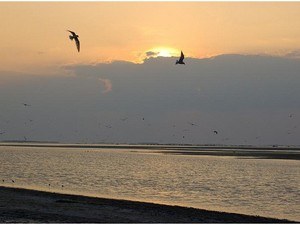
At a distance of 56 km from Nagapattinam, 115 km from Thanjavur, & 354 km from Chennai, Calimere Wildlife Sanctuary is a coastal island sanctuary situated near Vedaranyam in the Nagapattinam district of Tamilnadu. Also known as Kodikkarai Wildlife Sanctuary, it is one of the famous places of wildlife in Tamilnadu , and among the major Thanjavur tourist places to visit . Point Calimere Wildlife and Bird Sanctuary is a 21.47 sq. km protected area situated along the Palk Strait where it meets the Bay of Bengal at Point Calimere. The sanctuary was created in 1967 for the conservation of the least concerned blackbuck antelope, an endemic mammal species of India. The 7 sq. km core area of this sanctuary has been proposed as a National Park. It is one of the must-visit places for wildlife enthusiasts as part of their Thanjavur tour packages . Surrounded by the sea and mesmerizing beaches, this sanctuary is famous for large congregations of waterbirds, especially greater flamingos, which arrive here every winter. The park is also home to wildlife like chital, wild boar, bonnet macaque, blackbuck, terns, spotted deer, monitor lizards, lesser short-nosed fruit bats, the small Indian civet, and the Indian star tortoise. Dolphins and turtles can also be observed near the shore. The December 2004 ...
3. Avalanche Lake / Sanctuary
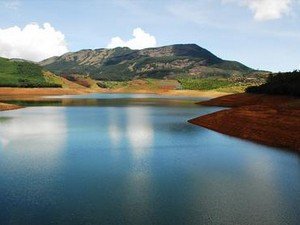
About Avalanche Lake
History of avalanche lake, mini bus ... overview avalanche lake / sanctuary attractions 4. arignar anna zoological park.
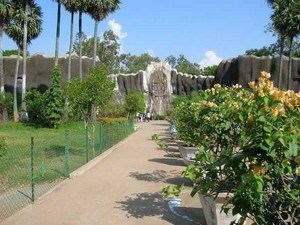
At a distance of 38 km from Chennai Central Railway Station, Arignar Anna Zoological Park is a zoo park located at Vandalur in Chennai city of Tamil Nadu. Also known as Vandalur Zoo, it is one of the finest zoos in India, and among the best places to visit as part of Chennai Tour . Established in 1855, Arignar Anna Zoological Park is the first public zoo in India, and is said to be one of the biggest in South East Asia. It is shifted to the current location of Vandalur reserved forests in the year 1979 and officially opened to the public in 1985. It is affiliated with the Central Zoo Authority of India. It is one of the popular Chennai tourist places . Spread over an area of 602 hectares (1,490 acres), the zoo houses 2,553 species of flora and fauna. As of 2012 the park houses around 1,500 wild species, including 46 endangered species, in its 160 enclosures. One can spot a tiger, panther, wolf, deer, elephants, and other animals here. The park has a special free-range zone where animals can freely roam in peace. There are two sanctuary aviaries (with a walk-though aviary), a butterfly house, a reptile house, an amphibian house, a primate house, a crocodile enclosure, and the shark-shaped aquarium. The park, with an objective to be a repository of the state's fauna, is credited with being the second wildlife sanctuary in Tamil Nadu ...
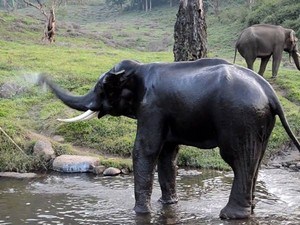
At a distance of 35 km from Pollachi and 76 km from Coimbatore, 5 km from Parambikulam , Topslip is a protected tiger reserve located in the Annamalai mountain range of the Western Ghats in Tamilnadu. It is one of the must include places in Pollachi Tour Packages. Situated at an altitude of 240 m, Topslip is the tourist zone and main birding area of the Annamalai Tiger Reserve, which is separated from the Nilgiri Hills by Palghat Gap in the north. It stands majestically with Green Spread Mountains and forest all around. The place got its name during the British era, as lots of its timber slipped down to the plains below. Topslip is blessed with a gentle altitude, a salubrious climate, and a variety of flora and fauna. Its picturesque location and fabulous scenery have made it a popular location for several movie sequences. It is also famous for the elephant camp. It is the best gateway for a wonderful wildlife experience of the Indira Gandhi Wildlife Sanctuary. The unique teak forests, Bamboo forests, rich exotic species of plants, and wild animals are the major attractions of Topslip. It is also a wonderful destination for bird watching as it is home to 250 species of birds. MT Stuart block is another attraction which is located 3 km from Topslip. It has an ancient forest bungalow along with the grave of Hugo Wood, a British officer with an environmental conscience who emphasized that ...
6. Annamalai Tiger Reserve
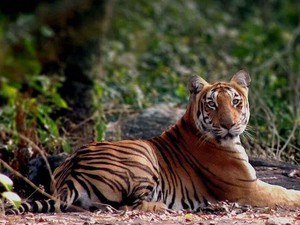
At a distance of 38 km from Pollachi and 76 km from Coimbatore, Annamalai Tiger Reserve is a protected area located in the Annamalai mountain range of the Western Ghats in Tamilnadu. It is one of the popular tiger reserves in India and among the must include places in Pollachi Tour Packages. Annamalai Tiger Reserve was originally called Anamalai Wild Life Sanctuary notified in the year 1974 and established in the year 1976. Later, it was renamed as Indira Gandhi Wildlife Sanctuary & National Park in honor of former Prime Minister Indira Gandhi's visit in 1961. Located at an altitude of 1400 m, the sanctuary has declared as Annamalai Tiger Reserve in 2007 with an extent of 958.59 sq. km that encompassed the erstwhile IGWLS&NP or Aanaimalai Wildlife Sanctuary. According to the National Tiger Conservation Authority, the Reserve presently includes a core area of 958.59 sq. km and a buffer area of 521.28 sq.km forming a total area of 1479.87 sq. km. The reserve is bordered with Parambikulam Wildlife Sanctuary, Eravikulam National Park, and Chinnar Wildlife Sanctuary. The reserve covers a total of four revenue taluks include the headquarters in Pollachi, the Valparai, Udumalpet, and Kodaikanal. The Anamalai wildlife sanctuary has various kinds of wild animals like panthers, elephants, deer, gaur, civets, tigers, sloth bears, wild bears, wild dogs, porcupines, flying squirrels, jackals, and pangolins. The park is home to birds like the red treepie, whiskered bulbul, ...
7. Mukurthi National Park
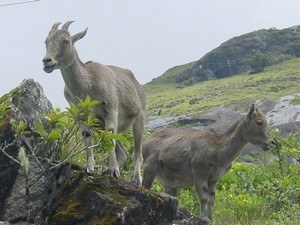
At a distance of 40 km from Ooty, Mukurthi National Park is a protected area located in the Nilgiris district of Tamil Nadu state. It is one of the most attractive wildlife sanctuaries in South India and among the best places to visit as part of Ooty Tour Packages. Previously known as the Nilgiri Tahr National Park, Mukurthi National Park is situated in the western corner of Nilgiris Plateau. The entire area of Mukurthi National Park was declared as a Reserve forest in 1886. The area was declared as a wildlife sanctuary in 1982 and upgraded to a National Park in 1990 in order to protect the Nilgiri tahr. The park is a part of the Nilgiri Biosphere Reserve, India's first International Biosphere Reserve. As part of the Western Ghats, it is a UNESCO World Heritage Site since 1st July 2012. Covering over an area of 78.46 sq. km, the park is characterized by montane grasslands and shrublands interspersed with sholas in high altitude areas. It is sandwiched between the Mudumalai National Park and the Silent Valley National Park. This wildlife sanctuary is also home to Mukurthi Peak, the fourth highest peak in the Nilgiri Hills. And at an altitude of 2,554m (8,379ft), the peak attracts many trekkers to visit these forests. Three rivers - Pykara, Billithadahalla, and Kundah - flow through the park because of its inclination towards the east and south. Mukurthi National Park is home to several endangered mammal species including Nilgiri tahr, Indian elephant, Bengal ...
8. Vedanthangal Bird Sanctuary

At a distance of 53 km from Mahabalipuram, and 89 km from Chennai, Vedanthangal Bird Sanctuary is a protected sanctuary situated at Vedanthangal near Mahabalipuram. It is one of the oldest water bird sanctuaries in India , and among the popular weekend getaways from Chennai . Vedanthangal literally means 'the hamlet of a hunter' in the local Tamil language. It was so named as being a famous hunting grounds for the local landlords during the 18th century. Realizing this ornithological importance of the region, the British government declared it as a bird sanctuary in the year 1798, making it the oldest of its kind in the country. And, among the most popular places to visit near Mahabalipuram . Covering a total area of 30 hectares, the Vedanthangal Bird Sanctuary is a popular migratory home for around 40,000 different species of birds from all over the world. This region seems to have attracted birds because it has several small lakes that became convenient feeding grounds for the birds. The sanctuary is a haven for bird watchers and wildlife photographers. The Barringtonia mangroves, the rich floating habitat, extensive paddy field, and those mighty flying creatures make the Vedanthangal Bird Sanctuary a beautiful setting to escape to the crowd and noise of busy city life ...
9. Koonthakulam Bird Sanctuary
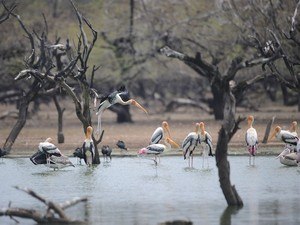
At a distance of 31 km from Tirunelveli, Koonthankulam or Kunthankulam Bird Sanctuary is a protected area located in Koonthankulam village in Nanguneri Taluk of Tirunelveli district. This is the largest reserve for breeding water birds in South India and also one of the popular places to visit in Tirunelveli for bird lovers. Koonthankulam Bird Sanctuary consists of Koonthankulam and Kadankulam irrigation tanks and is spread over an area of 1.29 sq. km. It is declared as a sanctuary in 1994. This sanctuary is actively protected and managed by the Koonthankulam village community. This sanctuary is an important Bird site in Tamilnadu and it attracts more than one lakh birds annually. The tourists visit the place in pursuit of seeing painted stork which is the major attraction of this place. The Babul plantation in Koonthankulam is the main breeding ground for several birds. The sanctuary is visited by more than 43 types of water birds both resident and migratory every year especially in the months of January and February. They vacate their nests in the months of July and August after nesting, hatching and nurturing the young chicks. Painted Stork, the major attraction of this village, flies here from north India and east European countries. Another prominent species of migratory birds that visits this village are Barheaded Goose, Pintail, Spotted Sand Piper, Green Sand Piper, Green Shank, Coot, White stork, large flamingo, Common Sand Piper, Common Teal and Pallavan. ...
10. Kalakkad Mundanthurai Tiger Reserve
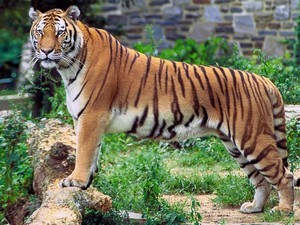
At a distance of 12 km from Papanasam, 58 km from Kalakkad, and 60 km from Tirunelveli, Kalakkad Mundanthurai Tiger Reserve is located in the Southern Western Ghats in Tirunelveli and Kanyakumari districts of Tamil Nadu. This is the second-largest protected area in Tamil Nadu and among the best places to visit as part of your India wildlife tour. The Kalakkad Mundanthurai Tiger Reserve was created in the year 1988 by combining Kalakkad Wildlife Sanctuary (251 km�) and Mundanthurai Wildlife Sanctuary (567 km�), both established in 1962. This sanctuary covers an area of around 817 sq. km, out of which 459 sq. km falls under the core zone, and the remaining 358 sq. km comes under the buffer zone. Nestled between Kerala and Tamil Nadu, the Agastya Malai Hill Range forms the core area of the sanctuary and is part of one of the world's 18 biodiversity hotspots. It is also under consideration by UNESCO as a world heritage site. wildlife sanctuaries near Madurai . The Reserve is home to a wide variety of animals and plants. The fauna includes around 150 endemic plants, 33 fish, 37 amphibians, 81 reptiles, 273 birds, and 77 mammal species. One can spot Elephant, Gaur, Bonnet, Macaque, Common languor, Tigers and Leopards, Chital, Dhole Panther, Sloth Bear, Python, Barking deer, Four-Horned- Antelope, Otter, Crocodiles (mugger), giant flying squirrel, Sambar, Hyena, Wild Dog, Wild Boar, Mouse ...
11. Amirthi Zoological Park
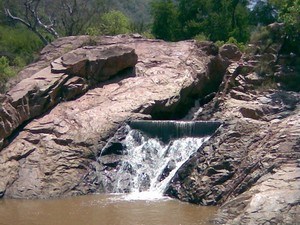
At a distance of 27 km from Vellore Town Railway Station, Amirthi Zoological Park is situated under the Javadu hills of Tellai across Amirthi River. Established in 1967, the zoo park occupies an area of 25 hectares. It is named after the Amirthi River which flows next to the park. This park is popular for its waterfalls, swing and animal habitats. Half of this jungle is cleared to serve as a tourist spot while the other half is developed as a wildlife sanctuary. One km trek in the park leads to a full view of Amirthi falls, a small cascading seasonal falls. Visitors can play and swim in the pool formed by the falls here in monsoons. Animals in the park include spotted deer, mongoose, hedgehog, foxes, reason monkeys, red headed parrots, love birds, tortoises, peacock, crocodiles, wild cats, eagles, ducks, pigeons, wild parrots, rabbits and pythons. Many herbal and medicinal plants can be seen growing in the Park. A meditation hall and rest houses for stay are available at the Park premises. The Park is especially delightful for kids with children play area. This zoological park has been recognized recently and so the state Government has taken initiative to develop it. Amirthi Zoo can be reached from Vaniyambadi via Kanikkaniyan & Melmoil. The best time to visit the park is from October to March. Timings: 8 AM to 5 PM
Please wait... the destinations are being loaded
Top 6 Tamilnadu Packages
Most popular tours, most popular tourist places in tamilnadu.
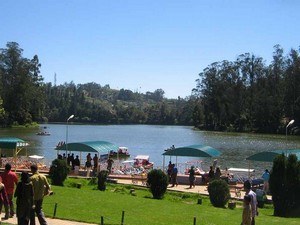
Similar Getaways

Popular Chennai Getaways
- Top Places to Visit near Chennai
- Best Hill Stations around Chennai
- Best Waterfalls near Chennai
- Adventure / Trekking near Chennai
- Popular Beaches around Chennai
- Top Heritage Sites near Chennai
- Wildlife Sanctuaries near Chennai
- Pilgrimage Sites around Chennai
Popular Tamilnadu Getaways
- Best Places to Visit in Tamilnadu
- Top Hill Stations in Tamilnadu
- Best Waterfalls in Tamilnadu
- Best Beaches in Tamilnadu
- Advanture / Trekking Sites in Tamilnadu
- Best Pilgrimage Sites in Tamilnadu
- Historical / Heritage Sites in Tamilnadu
- Wildlife Parks in Tamilnadu

100% SECURE PAYMENTS
Domestic & international cards accepted.

Our WhatsApp Numbers
International tours, +91-8217845740, south india tours, +91-7995649483, goa, maharashtra, gujarat tours, +91-7032828835, north india tours, +91-9535139583, rest of india, +91-7799591230, request quote, travellers #.
Explore Tour Packages
Planning a Trip?
Discover affordable tour packages, need customized tour request quote, login / sign-up, your sign in was successful itinerary will be downloaded shortly., sign up with trawell.in.
Already Created Account? Login Here
Sign in with Trawell.in Account
Forgot Password?
New User? Sign Up Here
Activate Your Trawell.in Account
Your account is activated successfully. Login Here
Reset Your Trawell.in Password
Your password has been reset successfully. Login Here
Booking Policy
THE 10 BEST Philippines Nature & Wildlife Areas
Nature & wildlife areas in philippines.
- Caverns & Caves
- Nature & Wildlife Areas
- 5.0 of 5 bubbles
- 4.0 of 5 bubbles & up
- 3.0 of 5 bubbles & up
- 2.0 of 5 bubbles & up
- Budget-friendly
- Good for Big Groups
- Good for Kids
- Good for Couples
- Good for Adrenaline Seekers
- Hidden Gems
- Honeymoon spot
- Adventurous
- Good for a Rainy Day
- Things to do ranked using Tripadvisor data including reviews, ratings, photos, and popularity.

1. Philippine Tarsier and Wildlife Sanctuary
2. Kalanggaman Island
3. Apo Island Marine Reserve
4. Tarsier Conservation Area

5. Philippine Eagle Center
6. Firefly Watching
7. Sunken Japanese Wrecks

8. Masungi Georeserve
9. Davao Crocodile Park
10. Siquijor Butterfly Sanctuary

11. Zoobic Safari

12. Palawan Butterfly Ecological Garden and Tribal Village
13. Danao Adventure Park
14. Palawan Wildlife Rescue and Conservation Center

15. Tubod Marine Sanctuary
16. Philippine Tarsier Recreation Inc.
17. Apo Reef Natural Park
18. Monfort Bat Sanctuary
19. Danjugan Island Marine Reserve and Sanctuaries

20. Hidden Valley Springs

21. Giant Clam Sanctuary

22. Mount Purro Nature Reserve
23. Bakhawan Eco-park and Research Centre

24. Jumalon Butterfly Sanctuary
25. Nalusuan Island Marine Sanctuary
26. Cebu Safari & Adventure Park
27. Tarsier Botanika

28. Calauit Wildlife Sanctuary
29. Giant Clam Sanctuary
30. Napantao Marine Sanctuary
What travelers are saying


Why Choose a Top Choice Vetted Real Estate Agent

Taylor Swift’s “Florida!!!” is One Hell of a Song

Florida Housing Market 2024 & Beyond

The Complete Moving to Florida Guide

Florida’s Best Wildlife Sanctuaries

With climates ranging from humid-subtropical to tropical, and with bits of savannah and rain forest biomes peppered in, the Sunshine State is a haven for endangered and mistreated animals. From native species to more exotic walks of life, experience these creatures in their natural splendor free from harm. Become more acquainted and educated with those whom we share our home by visiting the best wildlife sanctuaries in Florida.
Seacrest Wolf Preserve
Return to nature with humanity’s primal companion. At Seacrest Wolf Preserve, enjoy a hands-on experience with Gray, Arctic, and British Columbian wolves in large, open habitats and learn the plight of these majestic creatures. Gain profound insight into wolves and how we are all intrinsically connected to nature as a whole. Tours are expected to be about 4 hours long with breaks in between to interact with the other residents of the preserve including foxes, skunks, and raccoons.
Rooterville Animal Sanctuary
Originally a refuge for abandoned pot-bellied pet pigs, Rooterville Animal Sanctuary has grown into a 30-acre haven for over 400 rescued farm animals from cows to goats. Feel free to embrace free-roaming pigs that approach you and prepared for the flop! – pat them on the side of their bellies, and they will fall to the ground for more pats. Rooterville is open to the public for self-guided tours but also provides guided tours of the farm.
The Catty Shack Ranch
The Catty Shack Ranch is home to endangered big cats rescued from dire situations. The ranch is the premier destination in Jacksonville for locals and tourists alike to experience lions, tigers, pumas, leopards, and lynx outside of their natural habitat and in their accommodating enclosures meticulously crafted for their enrichment. Along with these exotic felines, the ranch is home to “honorary cats” – foxes and coatimundis (mammals related to raccoons).
Big Cat Rescue Sanctuary
Located north of Tampa, Big Cat Rescue saves and houses exotic cats, big and small, while rehabilitating injured or orphaned local wild cats. The sanctuary has been a strong proponent for the end of private ownership and trade of exotic cats and has fought for their position through legislation and extensive educational programs. Guided tours are 90 minutes long and for ages 10 and up. Come to witness the glory of these exotic animals and leave knowing a bit more about the impact certain actions have on their well-being.
Busch Wildlife Sanctuary
“Rescue, rehab, release, educate” The Busch Wildlife Sanctuary motto! Learn to love and respect all living creatures by visiting the sanctuary located in Jupiter, Florida. Here you will discover the varied wildlife of Florida through close-up educational encounters with animals taking refuge at the sanctuary – or walk along nature trails through oak hammocks, pine flatwoods, and cypress wetlands. The Busch Wildlife Sanctuary is home to native animals such as bald eagles, deer, otters, bears, alligators, foxes, and Florida panthers!
Central Florida Animal Reserve
Drive an hour from Downtown Orlando, and you’ll happen across the Kings and Queens of another jungle! A domain of lions, tigers, leopards, and pumas – the Central Florida Animal Reserve at St. Cloud, Florida is a non-profit refuge for rescued big cats that offers guided walking tours by knowledgeable staff. Make sure to book a tiger yoga session in advance as space is limited! Stretch and yawn like a tiger waking up from a 14-hour afternoon nap in this all-levels yoga class.
Croc Encounters
For crocodilians, millions of years of adaptations could not prepare them for the rapid development of humanity. Even these creatures of the ages need a haven in our modern world, and many have found sanctuary at Croc Encounters Reptile Park and Wildlife Center. Accepting of reptiles that regularly face rejection from most animal shelters, the center provides refuge and rehabilitation for alligators and crocodiles, alongside various snakes, lizards, amphibians, turtles, and tortoises. Come to Croc Encounters, and have your fears and misunderstandings for these ancient reptiles replaced with respect and understanding.
Endangered Animal Rescue Sanctuary
“Preserving with Dignity.” The entire existence of the Endangered Animal Rescue Sanctuary is for the care of rescued unwanted or abused exotic and domestic animals that would not otherwise survive release. Big cats, small cats, bears, and capuchin monkeys call this home and eagerly welcome visitors to learn of their trials and tribulations. For the only resident liger, the mighty Odin, the sanctuary is a worthy Valhalla in which to reside.
C.A.R.E. Foundation
The C.A.R.E. Foundation of Apopka is more than a refuge for over 200 exotic animals – it is a repository of information on local and foreign wildlife. The foundation houses big cats, bears, monkeys, birds, crocodilians, and assorted reptiles and connects with other animal sanctuaries to find homes for non-releasable animals. Learn the importance of conservation efforts and become inspired to make a change! Its wildlife education facility offers private tours to learn the individual stories behind their animal residents, and how non-profit refuges care for exotic animals.
McCarthy’s Wildlife Sanctuary
Need a break from swimming? Head west inland from the beach to McCarthy’s Wildlife Sanctuary and discover why it is the number one attraction in West Palm Beach. Mark McCarthy has worked professionally with animals since 1872, when he founded his non-profit sanctuary to give refuge to exotic and native wildlife. The sanctuary provides rehabilitation for native orphaned or injured bird species including eagles, owls, hawks, and ospreys. The majority of the big cats at the sanctuary are retired entertainment or zoo animals and confiscated illegal pets. A tour through the facility will guide through the reptile room – an exhibit filled with all manner of reptiles and amphibians such as Gila monsters and jumping vipers!
You may also like

Mastering SEO: Florida Real Estate Agents Guide to Boosting Content

About the author
Shawn menard.
- Arts & Literature
- Animals & Pets
- Business, Finance & Tech Services
- Community & Culture
- Entertainment & Events
- Education & Schools
- Facts & Data
- Fashion & Beauty
- Food & Drink
- Government, Agencies & Laws
- Health & Medical
- Home & Garden
- Nature & Science
- News & Media
- Real Estate
- Shopping & Services
- Sports & Recreation
- Travel & Attractions
- Logout Login
- Adventure Holidays
- Weekend Getaways
- Driving Holidays
- Travel News
Wildlife experiences in Odisha one can have throughout the year
Precious Rongmei , TIMESOFINDIA.COM , TRAVEL TRENDS , ORISSA Created : Jun 4, 2024, 16:00 IST

Odisha boasts an incredible diversity of ecosystems, from dense forests and sprawling grasslands to extensive wetlands and coastal habitats. The coastal regions are particularly notable for their marine biodiversity, where one can witness spectacular phenomena such as the mass nesting of sea turtles. Additionally, Odisha's sanctuaries and reserves are home to animals like tigers, saltwater crocodiles, Indian bison and more.
Chilika Lake
Asia's largest brackish water lagoon, Chilika Lake is a haven for bird watchers, especially during the winter when migratory birds visit. It also hosts a variety of marine life, including the endangered Irrawaddy dolphins.
Bhitarkanika National Park
Known for its mangrove forests, Bhitarkanika is home to the saltwater crocodile, Indian python, king cobra, and many species of birds. The park's diverse ecosystem includes tidal rivers and lush forests.
Nandankanan Zoological Park
Located near Bhubaneswar, this zoo and botanical garden is famous for its white tiger safari. It houses a variety of animals, including the Asiatic lion, Indian pangolin, and numerous reptiles and birds.
Satkosia Tiger Reserve
Spanning the gorge over the Mahanadi River, this reserve is known for its diverse flora and fauna. Visitors can see tigers, leopards, elephants, and gharials, and enjoy boat rides on the river.
Debrigarh Wildlife Sanctuary
Located near the Hirakud Dam, this sanctuary is known for its population of four-horned antelopes, leopards, and migratory birds. The sanctuary offers a mix of dry deciduous forests and grasslands.
Kuldiha Wildlife Sanctuary
Nestled in the Balasore district, this sanctuary is part of the Eastern Ghats and is known for elephants, leopards, bison, and a variety of bird species. It is also part of the Mayurbhanj Elephant Reserve.
Gahirmatha Marine Sanctuary
Renowned as the world’s largest rookery for Olive Ridley sea turtles, Gahirmatha is a critical nesting site where thousands of turtles come to lay their eggs. The sanctuary also features diverse marine life and is part of the Bhitarkanika National Park.
Visual Stories

7 popular treks in Uttarakhand for adventure enthusiasts

Top 7 places to visit tea plantations in India

Budget honeymoon destinations outside India

7 stunning monsoon wedding destinations in India

Must-visit places in Goa during monsoons

8 lesser-known natural escapes in Asia

Best places to visit in South India during monsoon season

Incredible cold deserts from around the world; check out India’s two

Top 10 architectural wonders in India

8 UNESCO World Heritage Sites to explore in Germany
Join Us On Facebook Close
Poll of the day, which of these is one of earth's oldest geographical feature, comments (0).

Refrain from posting comments that are obscene, defamatory or inflammatory, and do not indulge in personal attacks, name calling or inciting hatred against any community. Help us delete comments that do not follow these guidelines by marking them offensive . Let's work together to keep the conversation civil.
Comments ( ) Sort: Newest UpVoted Oldest Discussed Down Voted closecomments

SIGN IN WITH
Or post without registration, trending stories.

- Yosemite’s Horsetail Fall is a sight to behold when ‘FIREFALL’ takes all the attention

Top 5 man-made lakes that rival nature's best

Must-do activities in Alleppey for a memorable trip

Most beautiful and must-visit natural wonders in India

Cheap international destinations near India that offer easy visas

The perfect 3-day itinerary to explore Kolkata

World’s top 10 largest national parks

World Oceans Day 2024: From strange sounds to hidden mountains; fun facts about oceans

Tourist trap! Viral video reveals China's famous waterfall fed by pipes
From around the web, popular galleries.

15 oldest temples in India and where are they located

Cities that are more popular than their country of origin

Places to visit near Pune within 100 km for weekend fun

Follow us on
Latest news.
- Teen-friendly adventures await in New Orleans
Congratulations!
You have been successfully added to the mailing list of Times of India Travel. To complete the subscription process, kindly open your inbox and click on the confirmation link which has been emailed to you.
Share with friends
Thank You for sharing! Your friend will receive the article link on email mentioned.
- (For more than one recipient, type addresses separated by commas)
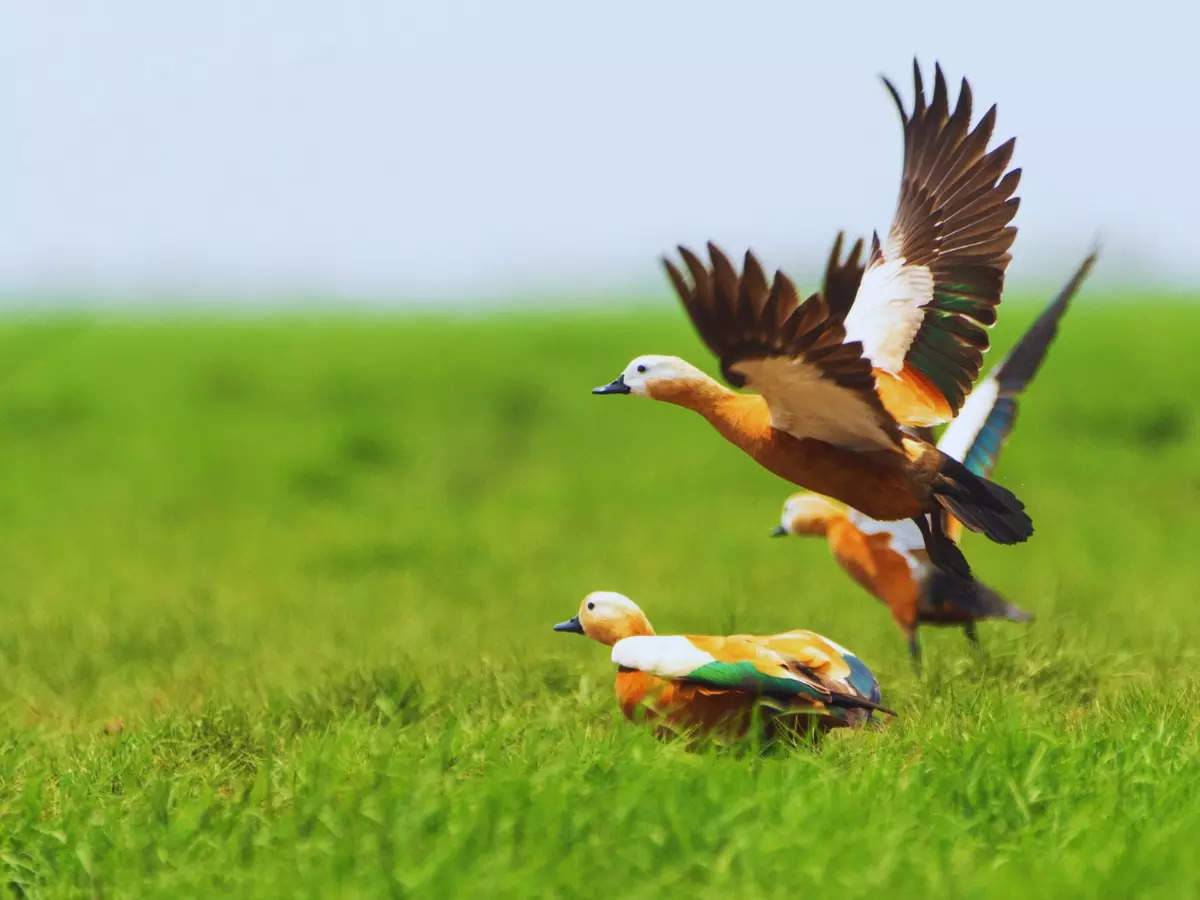
Odisha boasts an incredible diversity of ecosystems, from dense forests and sprawling grasslands to extensive wetlands and coastal habitats. The coastal regions are particularly notable for their mari...

Need free advice? Talk with a Personal Cruise Consultant.
Popular Searches
Share this article, stay updated, an inside look at the sanctuary for alaska wildlife.
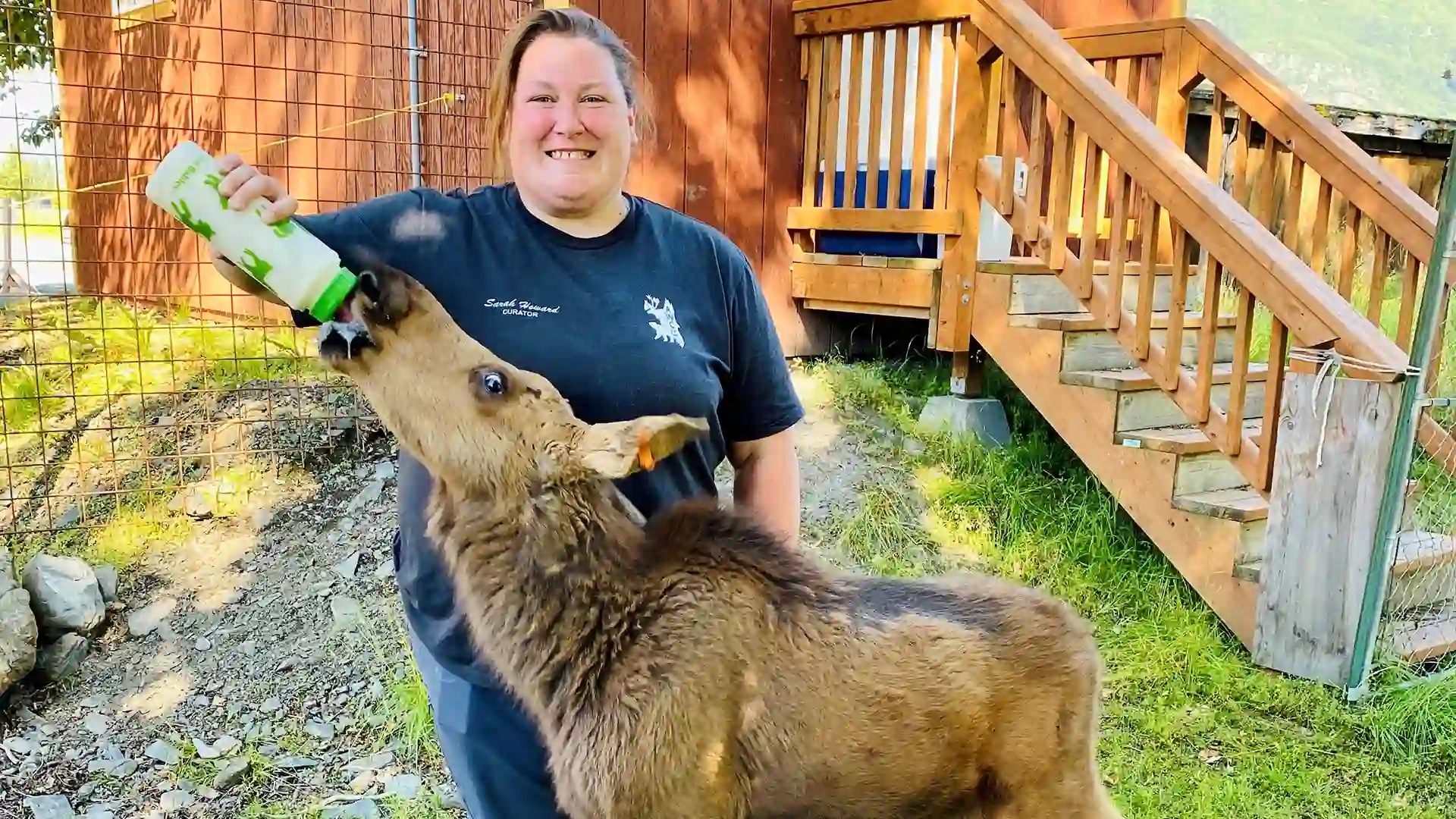
Meet our friends at the Alaska Wildlife Conservation Center
When you embark on an unforgettable journey to Alaska , you set sail to a world of towering, majestic glaciers, lush green forests and awe-inspiring mountain peaks. Known as the Great Land, it’s also home to abundant wildlife that depend on mother nature for food and shelter. Unlike their human counterparts, Alaska’s creatures don’t have a straight line to emergency care unless they’re in the right place at the right time to be discovered. That’s where the Alaska Wildlife Conservation Center (AWCC) comes in. They’re dedicated to caring for the wild’s most vulnerable residents.
Here’s an inside look at the safe haven some creatures call home.
AWCC: Where Nature and Nurture Align
At the heart of Portage Valley, surrounded by the breathtaking Chugach Mountain Range and Turnagain Arm Inlet, you’ll find the Alaska Wildlife Conservation Center, its furry residents and the humans who love them. AWCC is a sanctuary dedicated to preserving Alaska’s wildlife through conservation, education, research, and quality animal care. The organization takes in injured and orphaned animals year-round, providing them with over 200 acres of spacious habitats. Helping them feel at home, these wild residents can display their natural wild behavior.
Upwards of 255,000 visitors come through their gates each year to experience the beauty of over a dozen different species of Alaska wildlife. You may see brown bears cooling off in the water, a black bear hiding in a tree, a moose showing off as it struts across the field, a porcupine enjoying a climb, and more.
At the heart of AWCC are its people who nurture their permanent and temporary residents in sickness and in health. Sarah Howard, also known as “Howie,” is one of them. Originally hired as an intern in 2010, Sarah has served in multiple roles: animal keeper, curator, and now executive director. Her career journey has been an adventure in itself, but nothing comes close to the bonds she’s created with the animals (and humans) that have stolen her heart.
“We’re a team first and foremost,” she said. “Whether we’re working directly with the animals, or providing education opportunities, or working the ticket booth, we all have the same aspirations for the wildlife center and the animals in our care. AWCC is committed to sustainability, eco-friendly operating practices, and recognition of indigenous and historic uses of the land. It is a privilege to share such a special part of Alaska with the guests who come to visit us. Conservation, education, research, and quality animal care are crucial to the sustainability of Alaska’s wildlife, and it is an honor to be a part of it.”
A Unique Experience for Holland America Line Guests
When you book a shore excursion with a stop at AWCC, you can enjoy a moose encounter with residents, Pip and Jo. Through this wild meet and greet, moose eat right out of your hands while the team shares information about their diet, behavior and wild counterparts.
You can visit AWCC on these Alaska shore excursions: Turnagain Arm, Wildlife Conservation Center & Alyeska Tram Portage Glacier Cruise & Alaska Wildlife Conservation Center
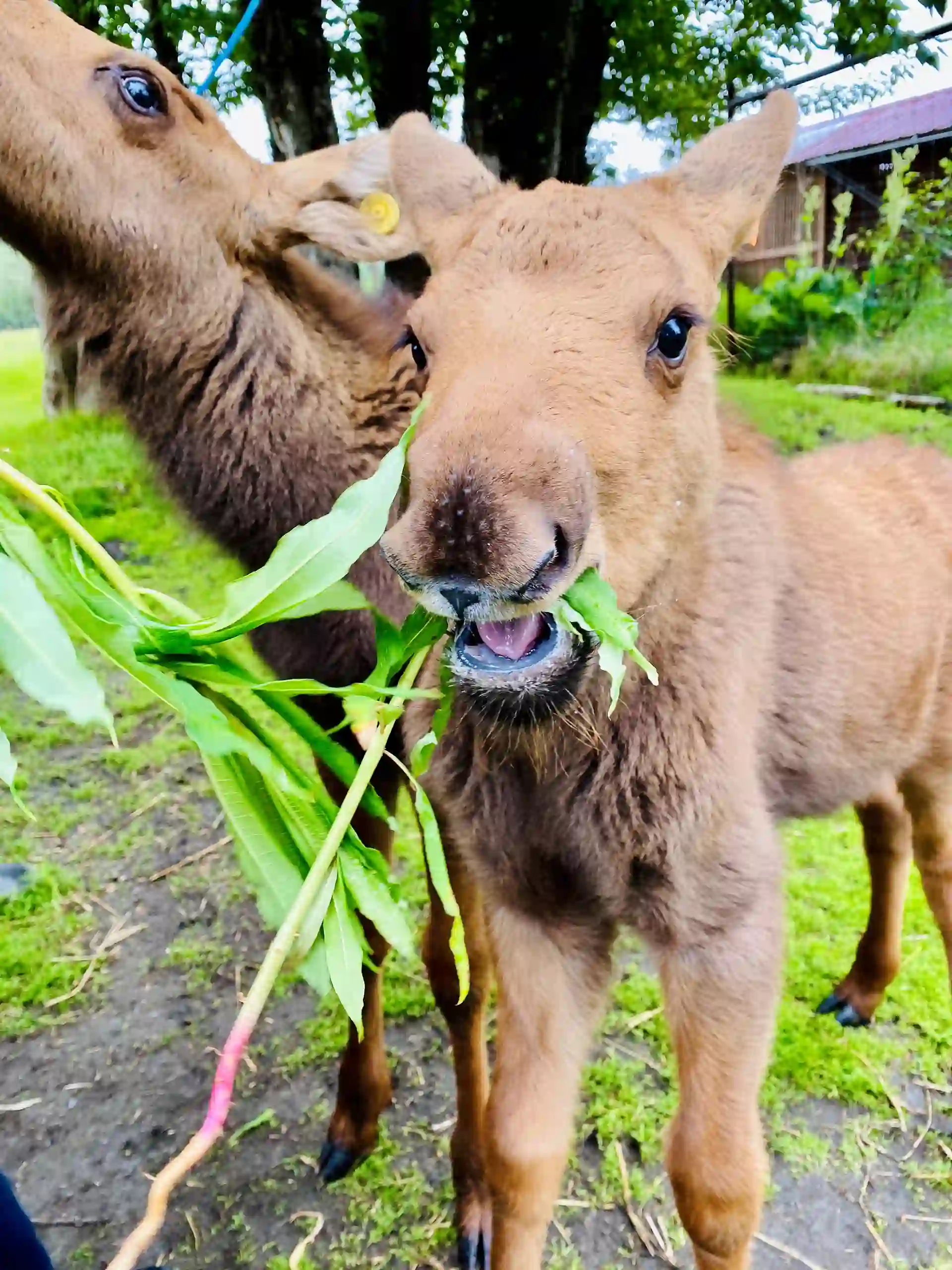
Learn more about the vast array of Alaska wildlife that calls the Great Land home, and set your sights on the epic vacation awaiting you.
Join the Discussion
Leave a comment cancel reply.
Save my name, email, and website in this browser for the next time I comment.
Sign up for special offers and announcements
Related Articles

Travel Tips Before You Embark on an Alaska Cruisetour
Read article.

Tips for Hiking Trails Near Alaska Cruise Ports
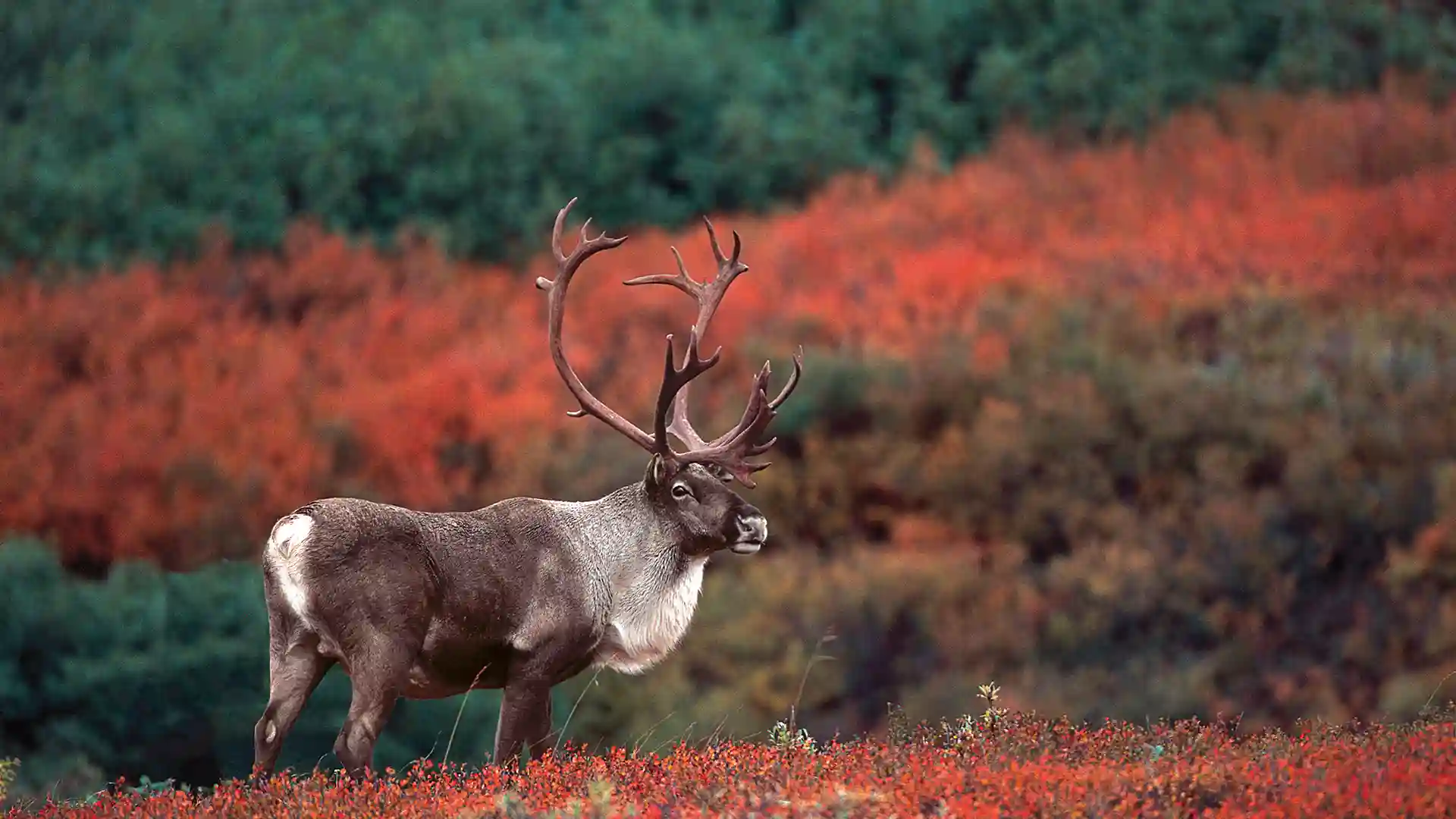
Alaska Wildlife: Where to Find the “Big Five”
Sign up for special offers, travel is our tradition.
Since 1873 | Sailing 150 years
Navigator Mobile App
Plan activities, purchase shore excursions, make reservations and more right from your phone while on board.


In Borneo, my daughter learned first-hand how she can contribute to wildlife conservation
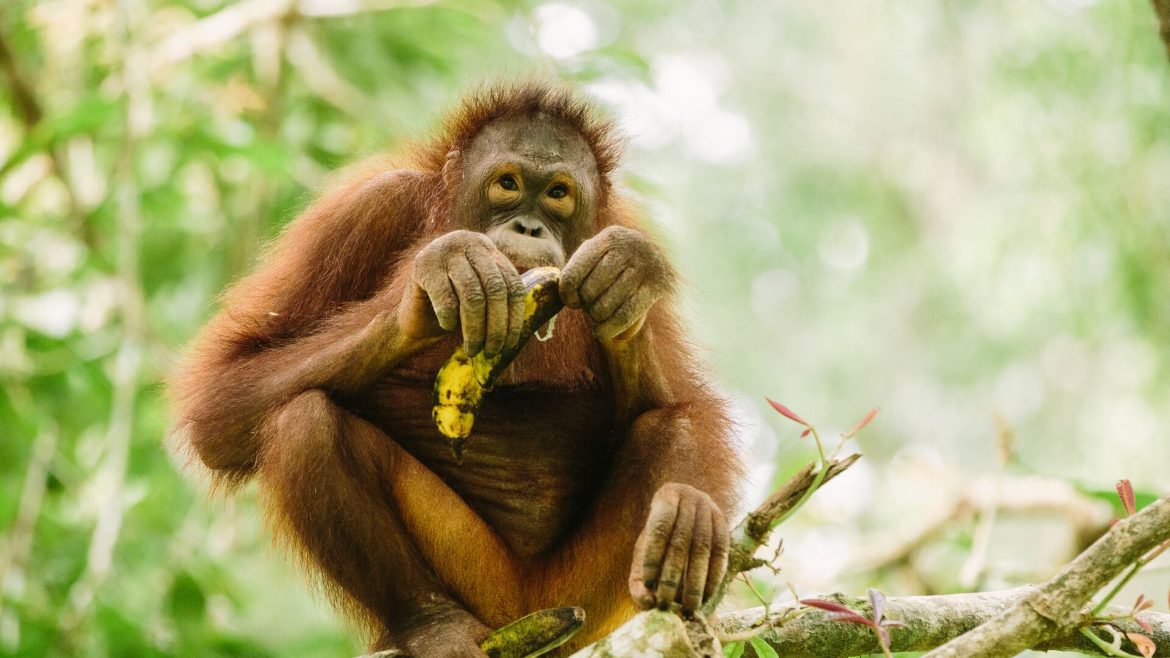
This mom-and-daughter duo were all about the orangutans but found a wildlife wonderland that inspired them both to help protect it.
‘Look at their noses wobbling, Mum!’ My 11-year-old daughter giggled as we watched a troop of proboscis monkeys tucking into their food.
Our visit to Labuk Bay Proboscis Monkey Sanctuary in Borneo was the final stop of our fantastic whistle-stop visit to Sabah in Malaysian Borneo with Intrepid, but just one of the high points during a week spotting some unforgettable Borneo wildlife and their furry little ones.
We expected to be wowed by the orangutans (and we were) but that was only one highlight from a trip which left my animal-loving daughter open-mouthed, grinning and determined to do her part to help Borneo’s endangered wildlife.
Here are our highlights from all the wildlife encounters we had along the way.
Sepilok Orangutan Rehabilitation Centre and Bornean Sun Bear Conservation Centre
Early in the week, we got to watch the orangutans at Sepilok Orangutan Rehabilitation Centre, where you can not only see these great apes but learn more about how they’re being protected.
In one corner of the outdoor enclosure, a one-year-old gorilla was practising forward rolls, legs flying with each roly-poly, grin visible on the other side of the play area. Elsewhere on the ropes, another little one was hanging off a bigger friend, the pair of them having huge fun dangling and climbing.
If you ignored the orange fur, you could have been in any playground in the world. But these were some of the rescued and orphaned orangutans that the centre takes in to help them learn the skills they need to survive in the wild. For babies, that means pairing them with an older orangutan ‘buddy’ as they play in the nursery, watched by visitors behind one-way glass so they’re unaware of any scrutiny.
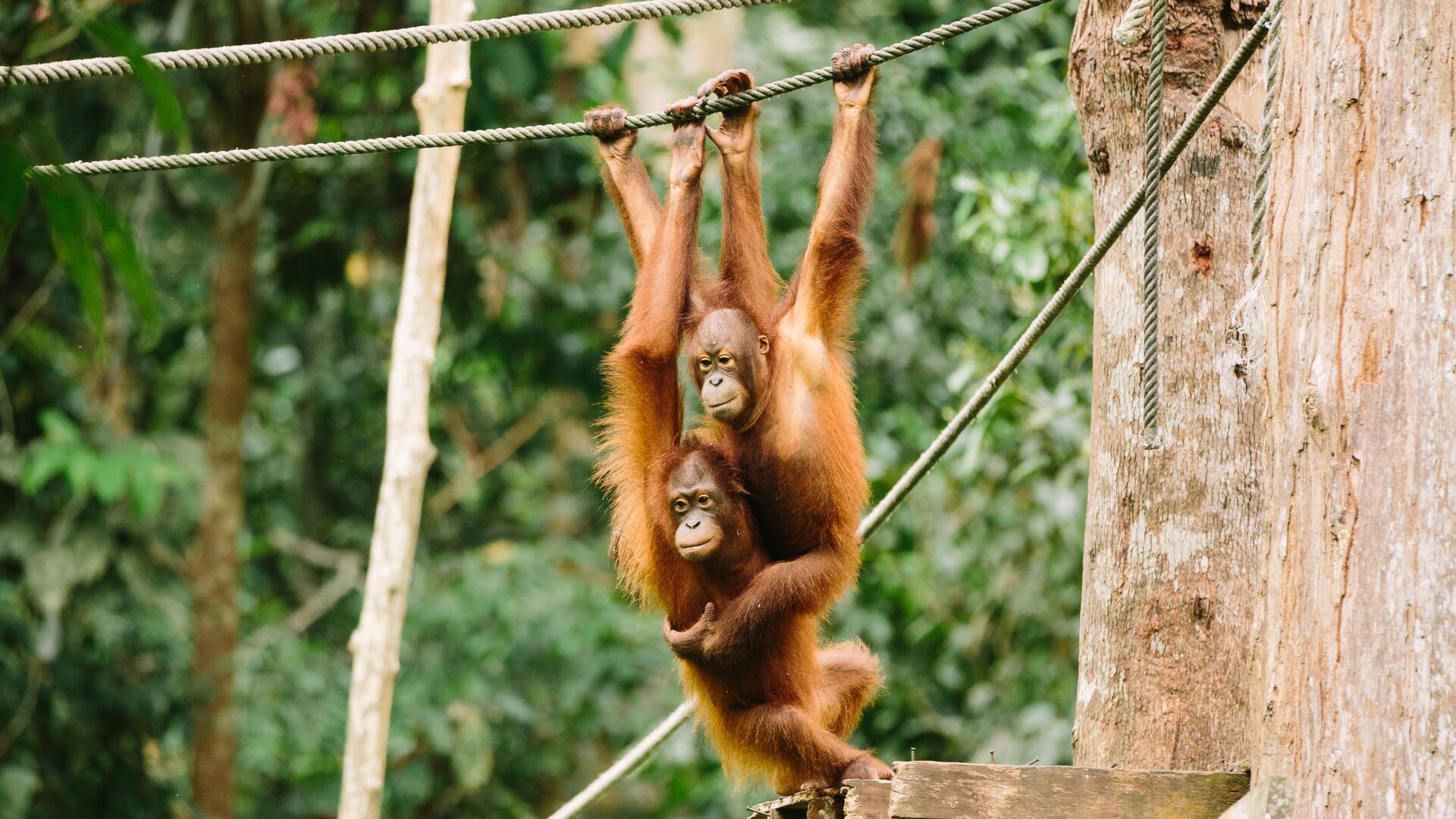
As they get older, they’re gradually moved to different areas, which open onto the rainforest so they’re free to leave – an unchanging menu of food every day encourages them to head out and forage for themselves.
Some never return to the sanctuary, while others head back every few days, so there are no guarantees you’ll see the adults. But you might get a lot closer than you expect! Strolling along the wooden walkways to the feeding platform, we spotted two full-grown orangutans making their way along the handrail.
Across the road at the Sun Bear Conservation Centre, which helps protect the world’s smallest bear, a mother orangutan with her baby sat resting at the junction of three paths. I edged past cautiously with my own daughter, who’d been chattering away about which orangutan she wanted to adopt. She was instantly silenced, eyes wide at the thrill of being so near.
Since then, she’s put an adopted orangutan and sun bear on her birthday wish list, and she suggested the orangutan rehabilitation centre as a charity for her school to support – proof of just how big an impact travel like this can have for little ones (human and furry).
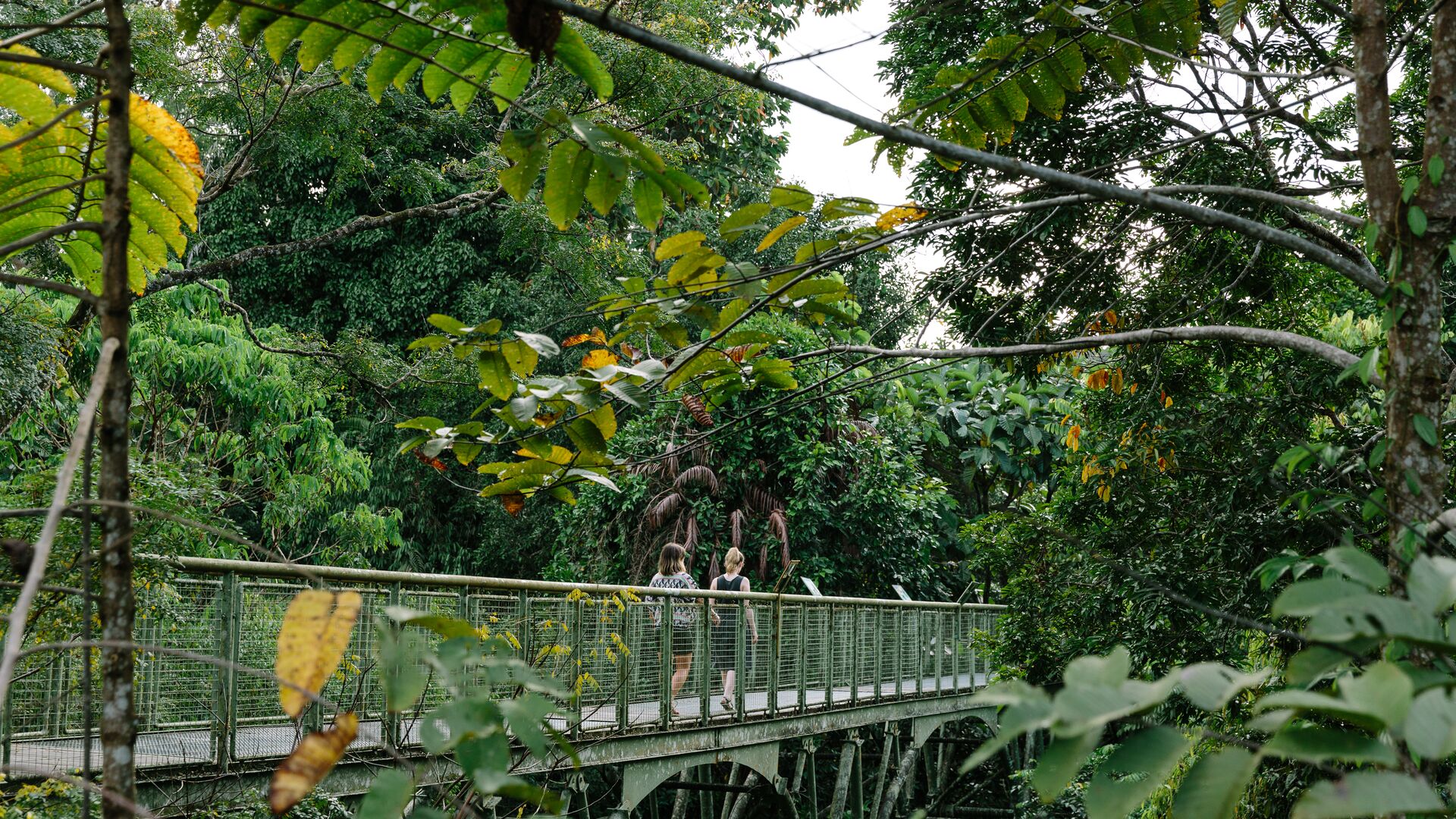
Sandakan Rainforest Discovery Centre
My daughter gasped as the squirrel leapt into the air. Its ‘wings’ opening as it glided easily to the next tree. Watching giant flying squirrels high up in the tree canopy, on a walkway 620 metres above ground level, was a world away from spying their everyday grey cousins in our local park.
In the background, the soundtrack of huge Pomponia merula . Better known as the six o’clock cicada, as it starts its mix of croaking and high-pitched chirrups around sunset, some of the insects clock more decibels than the average motorbike.
As night fell, we wandered the paths to the light of our torches feeling miles from civilisation. Having Intrepid take care of the practical side of this family adventure, especially as I was travelling alone with my daughter, was a huge advantage when you’re heading off the beaten track. Thankfully our guide not only kept us from getting entirely lost, but also had an impressive ability to spot some of the forest’s shyest and rarest nocturnal creatures.
The highlight? Seeing a western tarsier – one of the oldest mammals on the planet, dating back an astonishing 55 million years. They have huge eyes and strange elongated fingers, which wouldn’t look out of place on ET (great for gripping trees) and are easily startled.
The first two we encountered had obviously heard us coming and leapt off into the undergrowth. But our persistence was rewarded with the sight of one clinging to a branch, its eyes gleaming in the dark.
Emerging from the knee-high bushes, we were silently thrilled to have seen one for ourselves – and in my case, also pleased that we hadn’t encountered another native forest-dweller… the leech.
Labuk Bay Proboscis Monkey Sanctuary
If the macaques won the title of cheekiest monkeys spotted during our Borneo family holiday, the proboscis monkeys won my daughter’s heart for their unique looks.
To make it in the proboscis monkey world, the bigger your nose and belly, the better. Having seen them from a distance clambering in the trees along the Kinabatangan River, harems in tow, or some of the bachelor groups settling down at night, we couldn’t wait to see them up close at the sanctuary.
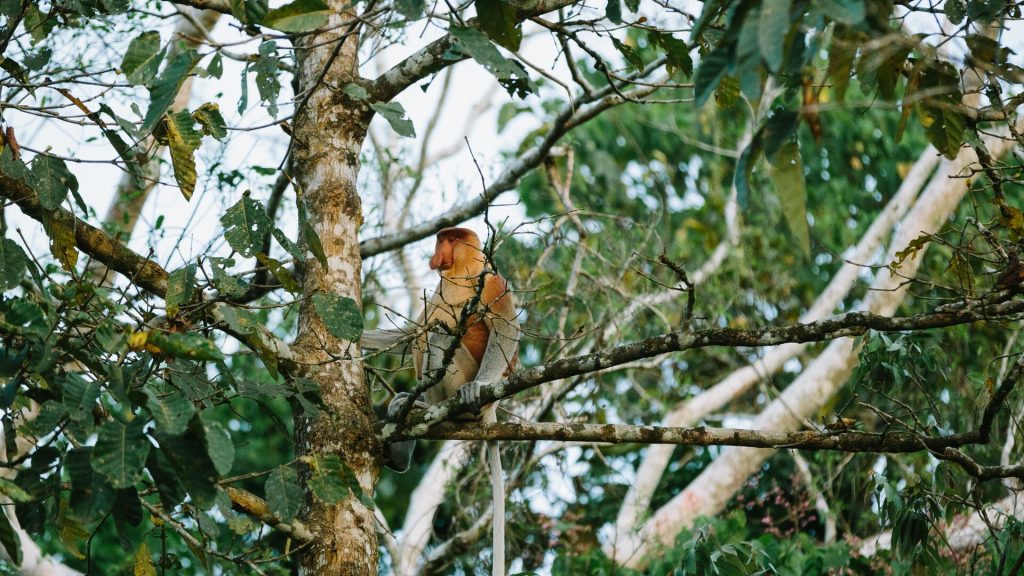
We had to pass by the silvered leaf monkeys first, including some bright orange babies with their silver-grey mothers. One of the babies was being looked after by a well-meaning but slightly ineffectual big sister while its own mother snacked nearby.
But for entertainment, you couldn’t beat the proboscis monkeys: lounging casually in a branch as if it were an armchair, paws on knees and noses very wobbling up and down with each bite they took.
One enterprising mother was even giving her baby a quick wash in the bowl of water left out to drink from – and we learned that proboscis monkeys can use those big noses as snorkels when they swim.
They quickly became my daughter’s firm favourite. We’ve now got a much-cuddled fluffy proboscis monkey toy as a permanent reminder of our unforgettable Borneo family adventure.
Kinabatangan River
Ten minutes after climbing into our boat and speeding off down the Kinabatangan River, we saw them – a family of three pygmy elephants in the water.
Trunks entwined, the baby was busily play-fighting with one of its parents, while the other splashed through the water looking for food on the opposite bank. They’re around eight to ten feet tall when fully grown, which may be small for elephants but to the human eye still pretty sizeable.
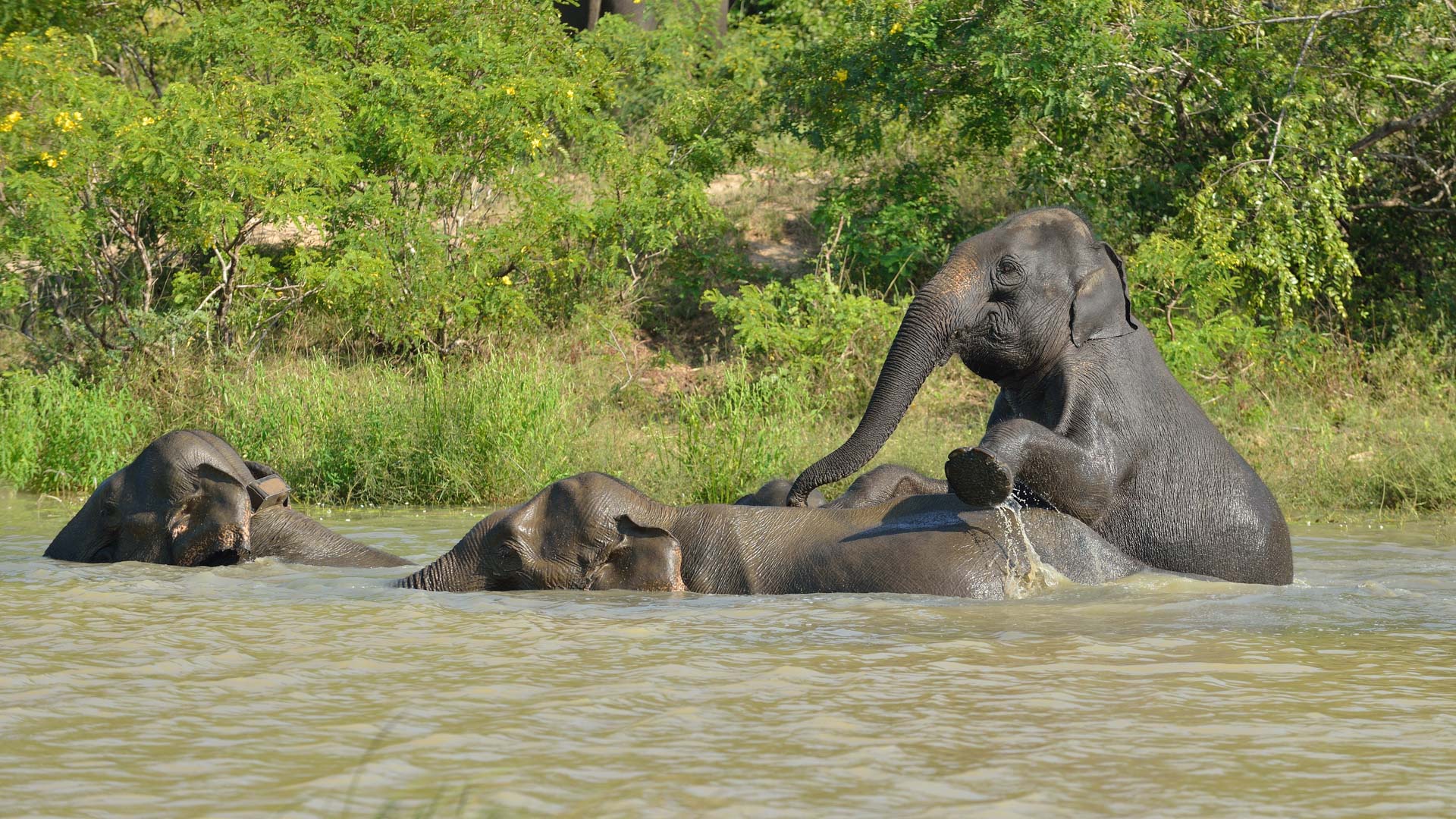
How could we possibly top that kind of wildlife spotting? However, the ecosystems along Kinabatangan River are so rich and varied that each of our multiple boat cruises to spot Borneo’s wildlife in its natural habitat had countless moments to remember.
During two afternoon boat trips, we saw monkeys splashing about by the water’s edge before settling down in the trees to sleep, their backs to the river as night-time predators would come from the forest – proboscis monkeys, silvered leaf monkeys, long-tailed macaques and short-tailed macaques all leaping, climbing and then curling up together as the sun sank in the horizon.
Elsewhere crocodiles basked on the banks, while birds flew overhead – an iridescent flash of blue from a kingfisher, dramatic black and red broadbills with their eye-catching green beans, several species of hornbill, gleaming white herons and more.
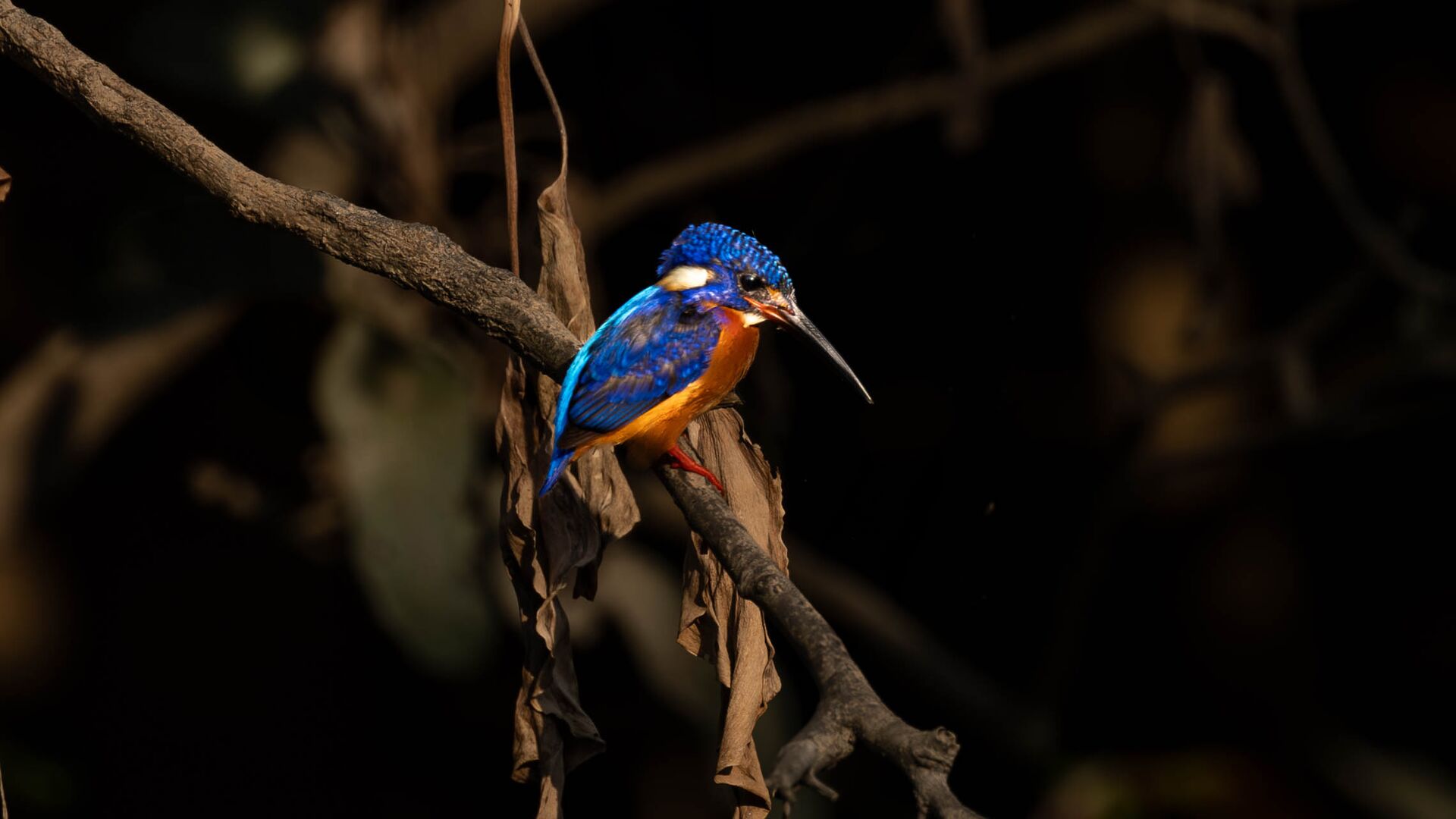
Venturing down a small tributary, we got thoroughly over-excited at the sight of a ‘crocodile’ swimming nearby, which turned out to be just a floating log. We ducked under the branches of a fallen tree to reach an oxbow lake, a peaceful stretch of water carved out by the river. The lake is covered in purple hyacinths.
At night, the river has its own story. We glimpsed an owl waiting to hunt, while a rare slow loris clung to a branch during its nocturnal outing, all under more stars than we’ve ever seen, only the splash of our wake disturbing the silence.
We got to play a small part in helping protect the animals too, joining RESPonsible Elephant Conservation Trust (RESPECT), a local conservation project, to plant elephant grass. Seeing the pygmy elephants in the river might have been a holiday highlight for us, but it’s actually a lack of food that forces them to forage more widely.
Supported by The Intrepid Foundation, RESPECT provides an opportunity for tourism to make a positive impact and give families a chance to get hands on. While my city-dwelling daughter isn’t usually keen on getting her hands dirty, she jumped at the chance to help the elephants, feeling a particular connection after seeing them first-hand.
Cathy and her daughter travelled on a modified version of Intrepid’s Borneo Family Holiday .
Feeling inspired?
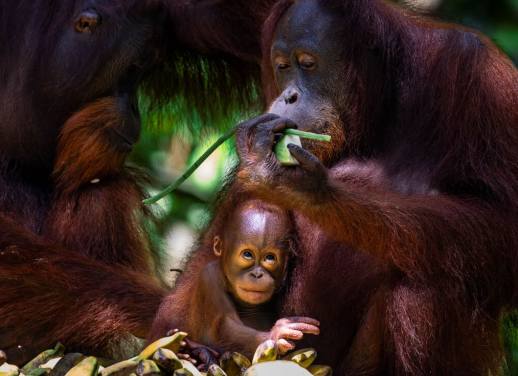
Cathy Winston
Cathy Winston is an award-winning travel writer and founder of the MummyTravels blog, started when she became pregnant with her daughter and everyone insisted she'd have to stop travelling. Proving them wrong, she's now visited over 65 countries worldwide (so far) and has been passing on her love of travel to her daughter, who took her first flight aged three months.
You might also like
I’m an extroverted introvert who travelled with strangers..., 5 things i loved about my car-free journey..., how bringing my friend on an intrepid trip..., chill out: beat the summer heat with these..., connecting across generations on a family trip to..., a novice trekker’s guide to tasmania’s cradle mountain..., hiking to the monastery was the unexpected highlight..., time and place: kapan’s buddhist nunnery, kathmandu, time travel in malaysia: trekking into the distant..., intrepid’s new women’s expedition is exploring saudi arabia..., this is what it’s like to explore antarctica’s....

A new study says that elephant rides, such as this one in Sri Lanka, and other wildlife tourist attractions, are not good for animals’ welfare.
- WILDLIFE WATCH
Visitors Can’t Tell If a Tourist Attraction Is Bad for Animals
A new study ranks wildlife tourist attractions around the world based on how they treat their animals and whether they help save species.
In the first major study of wildlife tourism around the world, researchers at the University of Oxford’s Wildlife Conservation Research Unit—the same group that had been studying Cecil the Lion before he was shot in July—found that the millions of people who visit wildlife attractions each year don’t seem to realize that places they’re visiting have ill effects on animals.
Wildlife attractions account for between 20 and 40 percent of all tourism worldwide, with 3.6 to six million people visiting these sites annually. The study found that every year two to four million tourists financially support attractions that aren’t good for animal welfare or conservation. And it found that 80 percent of reviewers didn’t recognize that certain wildlife attractions weren’t good for the animals.
Led by conservation biologist Tom Moorhouse, the researchers compared 24 types of wildlife tourist attractions to thousands of evaluations on TripAdvisor, a travel review and ratings website.
They grouped wildlife tourist attractions into five categories: interactions with captive animals (such as elephant treks and encounters with big cats); sanctuaries, whose main purpose is to help and protect wild animals; wildlife farms where tourists observe animals bred for other purposes, such as crocodiles for meat and leather and bears whose gallbladders are “milked” for bile for traditional medicines); street performances; and wild attractions such as gorilla trekking and polar bear sightseeing.
The researchers rated each type of attraction on animal welfare and conservation. Animal welfare scores were based on factors such as adequate food and water, freedom from pain and injury, ability to behave normally, and level of stress.

Wildlife sanctuaries are among the few wildlife tourist attractions that receive good marks on animal welfare. At the Buddhist Tiger Temple in Thailand, however, advocates have raised questions about the cats’ well-being, and it is under investigation by local authorities.
Conservation scores were based on, for instance, where the animals came from and whether proceeds help preserve the species through habitat protection, anti-poaching efforts, and so on.
Not surprisingly, animal sanctuaries received positive scores for both animal welfare and conservation. Street performances—dancing macaques and snake charming, for example—received negative scores on both.
Swim-with-the-dolphin interactions, elephant rides, shark cage diving, and crocodile, sea turtle, and bear bile farms get the highest number of visitors each year (more than 500,000 visitors), and they all have negative impacts on animal welfare.
Our rule of thumb: avoid any wildlife attraction that scores under 80 percent on TripAdvisor. David Macdonald , Director of Oxford’s Wildlife Conservation Research Unit
On the other hand, bear sanctuaries also receive a high number of tourists each year, and they rate well both in terms of welfare and conservation.
“Some of the most concerning types of wildlife attractions...received overwhelmingly positive reviews from tourists,” said Neil D’Cruze, one of the study’s authors and the head of research at World Animal Protection, an animal welfare nonprofit based in London, in a press release.
For example, only 18 percent of reviews for tiger attractions, which received the lowest possible animal welfare rating, mentioned concerns about the welfare of the animals.The other 82 percent of reviewers rated the tiger attractions as “excellent” or “very good.”
“How sad it is that tourists, often no doubt lured in as a result of a well-intentioned interest in animals, thereby support attractions that not only keep wild animals in bad conditions but damage their conservation,” said David Macdonald, the director of Oxford’s Wildlife Conservation Research Unit. “That double whammy could be rectified by tougher regulation, better enforcement, and by following our rule of thumb: avoid any wildlife attraction that scores under 80 percent on TripAdvisor.”
TripAdvisor currently has a program called GreenLeaders , in which eco-friendly hotels that meet certain sustainability standards get an icon of a green leaf on their review page. The researchers of this study would like to see TripAdvisor do something similar with wildlife tourist attractions.
“There is a great opportunity for TripAdvisor to improve its service to the visiting public by including in its evaluations a score for animal welfare and conservation,” D’Cruze said.
This story was produced by National Geographic’s Special Investigations Unit, which focuses on wildlife crime and is made possible by grants from the BAND Foundation and the Woodtiger Fund. Read more stories from the SIU on Wildlife Watch . Send tips, feedback, and story ideas to [email protected] .
Introducing Nat Geo Kids Book Bundle!
Related topics, you may also like.

Animals trapped in war zones find a second chance here

How these parrots went from the tropical jungle to the concrete jungle
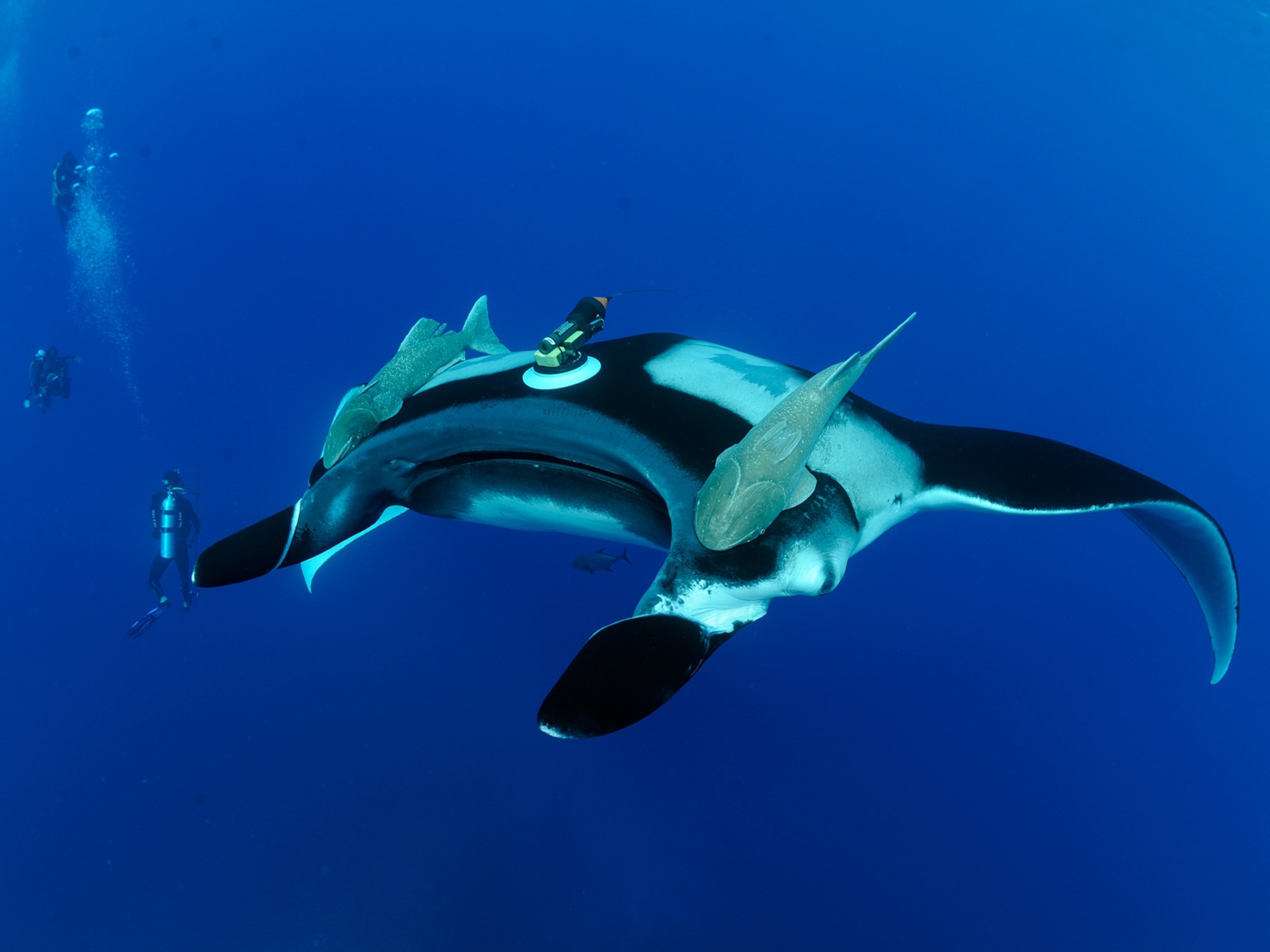
See a rare view of a manta ray courtship ritual deep in the sea

10 simple ways to change your life in 2024

What lurks beneath the surface of these forest pools? More than you can imagine.
- Environment
- Paid Content
- Photography
History & Culture
- History & Culture
- History Magazine
- Mind, Body, Wonder
- Terms of Use
- Privacy Policy
- Your US State Privacy Rights
- Children's Online Privacy Policy
- Interest-Based Ads
- About Nielsen Measurement
- Do Not Sell or Share My Personal Information
- Nat Geo Home
- Attend a Live Event
- Book a Trip
- Inspire Your Kids
- Shop Nat Geo
- Visit the D.C. Museum
- Learn About Our Impact
- Support Our Mission
- Advertise With Us
- Customer Service
- Renew Subscription
- Manage Your Subscription
- Work at Nat Geo
- Sign Up for Our Newsletters
- Contribute to Protect the Planet
Copyright © 1996-2015 National Geographic Society Copyright © 2015-2024 National Geographic Partners, LLC. All rights reserved
- Skip to main content
- Skip to "About government"
Language selection
- Français
Wildlife and you
Banff national park.
Banff National Park is a special place! It’s home to hundreds of species, including grizzly bears, wolves, elk and more. The chance to view wildlife in their natural environment is one of the most exciting things about visiting the mountain national parks. #WildlifeRules this special place, and you can help them survive by keeping them wild.
Help protect this special place by learning the #WildlifeRules before you visit:
Respect closures
Respect areas that are closed or restricted in Banff National Park, it's the law.
Safely view wildlife
Give all wildlife space when you visit Banff. Learn how to view wildlife from a safe distance.
Obey speed limits
When driving in Banff National park, always obey the posted speed limits and be aware of the road conditions.
Keep dogs on leash
To protect this special place, we always keep our pets on leash in Banff National Park.
Dispose of garbage
To protect the wildlife in Banff National Park, we take responsibility for our own food and garbage.
Never feed wildlife
Learn how to securely store food while in Banff National Park. Never feed wildlife, big or small.
An aerial shot of Lake Louise in Banff National Park.
Banff National Park: this place is special.
It’s alive, wild, and interconnected.
It’s thriving… yet fragile.
People hiking through delicate wilderness.
This place has the power to transform. Long after you leave, it will stay with you.
Woman admiring beautiful view of Moraine Lake.
What legacy will you leave behind?
Woman disposing of garbage properly.
To protect this special place, we give wildlife the space they need to survive and thrive.
We take responsibility for our own food and garbage – even if it feels inconvenient.
We follow speed limits, to protect wildlife and all others on the road.
Car slowing down while passing cyclist.
We keep our dogs on leash, knowing that wildlife’s survival may depend on it.
We respect area closures and restrictions, to make space for wildlife and keep both us and wildlife safe.
Your actions matter.
When you leave Banff National Park, leave it wild.
An animation of six behaviour actions shown in this video: Respect Closures, Give Space, Slow Down, Dogs on Leash, Dispose of Garbage, and Never Feed Wildlife.
Hashtag Wildlife Rules. Protect this special place, Banff National Park appears on screen.
Website URL: www.parkscanada.gc.ca/wildliferules
It is illegal to feed, entice or disturb any wildlife in a national park. Violators will be charged, be required to appear in court, and could pay fines up to $25 000.
Please report bear, cougar, wolf and coyote sightings and encounters to Banff Dispatch : 403-762-1470
To stay safe in wildlife habitat:
Wildlife may be present anywhere in Banff National Park (including in the townsites).
- Always carry bear spray year-round.
- Learn what to do in a wildlife encounter.
- Tune in to your surroundings and don’t wear headphones.
- Travel in groups and make noise while on trails.
Your actions matter! When you leave Banff National Park… leave it wild.

IMAGES
VIDEO
COMMENTS
Chimp Haven - Keithville, Louisiana. Best Places to Stay. Located just southwest of Shreveport, Louisiana, Chimp Haven is dedicated to the care of chimpanzees, many of which have been used for research. The facility is located on 200 acres of forested land and has staff to help care for around 300 chimpanzees.
Yellowstone Wildlife Sanctuary, MT. The Yellowstone area is known for its beautifully diverse wildlife populations, and the Yellowstone Wildlife Sanctuary in Montana is one of the best places to experience it. The sanctuary provides a space for wild animals native to the area that are unable to be released back into the wild.
Best Time to Visit. While wildlife viewing in the sanctuary is good all year-round, the best time of year to visit Brisbane, in general, is during March thru May, which is autumn in the Southern Hemisphere. ... In a place where wildlife is so abundant, yet so difficult to find, having a good guide can mean the difference between having the trip ...
Currumbin Wildlife Sanctuary educates the public about animal welfare and has a sizable animal hospital. Creatures are rehabilitated and ready to be released back into their natural habitat where possible. Animals to visit include koalas, wallabies, Tasmanian devils, kangaroos, wombats, crocodiles, and more.
Looking for Beluga Whales in the Northwest Passage. "For travelers who want a truly unique wildlife experience, a cruise can be the best option. On a 16-day trip aboard Ponant's Le Commandant ...
We can visit a national marine sanctuary or other park, to contemplate, explore, or regain our wildness. Wander stretches of wild beach in Olympic Coast National Marine Sanctuary, or snorkel the seagrass meadows of Florida Keys National Marine Sanctuary. ... Wild Sanctuaries: Wildlife, Wild Places, and Wild Being. We're All Wet! The Ancient ...
FUN FACT: Named a UNESCO World Heritage site in 1985, Kaziranga is one of the last areas in eastern India largely untouched by humans.. KNOW BEFORE YOU GO: Most visitors fly from Kolkata to Jorhat ...
Welcome to Rocky Mountain Arsenal National Wildlife Refuge, it's free to visit! Located just 10 miles northeast of downtown Denver, you can step into nature and see the native wildlife that call the Refuge home. Bison, deer, raptors, songbirds, waterfowl, prairie dogs, and coyotes are just a few of the animals you will see on your visit. Take a nature escape and discover the variety of ...
Overnight camping - Apart from the forest rest house at Meenmutty, you also have other places to stay in Neyyar Wildlife Sanctuary. There is the youth hostel and rest house at Neyyar, the dormitory at Kombai and the Agasthya House. ... Places to visit near Neyyar Wildlife Sanctuary. 1. Neyyar Dam - Neyyar Dam is a part of the wildlife ...
National Wildlife Refuge System. Image Details. The U.S. Fish and Wildlife Service manages an unparalleled network of public lands and waters called the National Wildlife Refuge System. With more than 570 refuges spanning the country, this system protects iconic species and provides some of the best wildlife viewing opportunities on Earth.
Spread over an area of 490 sq. km, Bhadra Wildlife Sanctuary is also known as Muthodi Wildlife Sanctuary. It is one of the most popular places to visit in Chikmagalur. The region was declared as a natural reserve, known as the Jagara Valley Game Reserve, in 1951 by the Government of Mysore. In 1974, the reserve was named the Bhadra Wildlife ...
Visitors can view the rare Asian animals, including lions, in the safari parks. This sanctuary for wildlife is the site of over 100 species of fauna and flora. The sanctuary is located in the southeast part of Western ghats within the State of Kerala. The sanctuary is more than 128 km of land. The sanctuary was granted the designation of a ...
Here are four of the best. 1. Clear Sky Resorts' Sky Domes, Grand Canyon National Park, Arizona. Positioned a stone's throw from the park borders, these aptly named Sky Domes offer windows on ...
5. Pangot And Kilbury Bird Sanctuary. Wildlife. At a distance of 15 km from Tallital Bus Stand and 3 km from Pangot, Pangot and Kilbury Bird Sanctuary is a bird watcher's paradise on Kilbury road in Nainital. This is one of the famous wildlife sanctuaries in Uttarakhand, and among the top Nainital tourist places.
By Natasha Daly. May 23, 2019. • 8 min read. Right away, Elephant Valley Thailand felt different. The property, nestled in the forest on the outskirts of Chiang Rai, a small city in northern ...
India is not just a land of diversities but also a land of wildlife adventures. Here are some of the best places in India where you can have really thrilling wildlife experiences: Jim Corbett National Park - Uttarakhand. Ranthambore National Park - Rajasthan. Gir National Park - Gujarat.
Image Source. Spread across an area of 70 sq. km, the Idukki Wildlife Sanctuary is one of the famous tourist places in Idukki.Situated at an altitude of 450 to 748 meters, the sanctuary occupies the forest land between the Cheruthoni and Periyar rivers and is a natural habitat for several species of animals.
4. Begur Wildlife Sanctuary. The Begur wildlife sanctuary situated about 20 km from Mananthavady in Wayanad district is another beautiful wildlife sanctuary surrounded by lush green and dense forests. This sanctuary is a home to several species of animals like elephant, leopard, spotted deer, bison, tiger, bear and wild boar. 5.
1) Elephant Nature Park - Thailand. Clumsy Baby Elephant - ElephantNews. Watch on. Lek is known as "the elephant whisperer," she began the Elephant Nature Park 20 years ago as a safe-haven for the majestic animals. Elephants in the area are mistreated in the tourism and logging industries in Thailand.
6. Ngorongoro Crater Lodge, Ngorongoro, Tanzania. Right in the world's largest caldera, a beautiful haven teeming with wildlife can be found all year round. Travelers can spot antelopes, elands ...
An area of about 60 km2 was established as Mudumalai Wildlife Sanctuary in 1940. This is the first wildlife sanctuary in South India and one of the best Ooty tourist places. The sanctuary was enlarged in 1977 and incorporated into Nilgiri Biosphere Reserve in 1986.
Legacy Trail, thrice at side trails and once at Discovery Trail) and every visit is a memorable learning and life... See tours. 9. Davao Crocodile Park. 697. Nature & Wildlife Areas. By joya63. The place is well-kept and the animals are healthy and well-fed. 10.
Busch Wildlife Sanctuary. "Rescue, rehab, release, educate" The Busch Wildlife Sanctuary motto! Learn to love and respect all living creatures by visiting the sanctuary located in Jupiter, Florida. Here you will discover the varied wildlife of Florida through close-up educational encounters with animals taking refuge at the sanctuary - or ...
2. Sleeping Bear Birding Trail - Sleeping Bear Dunes National Lakeshore. Heading over to the west side, the Sleeping Bear Birding Trail is another great place to visit if you love to watch and examine different types of birds. Stretching all 123 miles of the M-22 Highway, from Manistee to Traverse City, this trail is home to a diverse habitat ...
Kuldiha Wildlife Sanctuary. ... Travel. 8 must-visit places in Maharashtra during monsoons. Travel. Most unique destinations in Asia. Travel. 10 oldest palaces in India to explore this season.
AWCC is a sanctuary dedicated to preserving Alaska's wildlife through conservation, education, research, and quality animal care. The organization takes in injured and orphaned animals year-round, providing them with over 200 acres of spacious habitats. Helping them feel at home, these wild residents can display their natural wild behavior.
Our visit to Labuk Bay Proboscis Monkey Sanctuary in Borneo was the final stop of our fantastic whistle-stop visit to Sabah in Malaysian Borneo with Intrepid, but just one of the high points during a week spotting some unforgettable Borneo wildlife and their furry little ones.
These communities rely on dollars spent on activities such as recreation and tourism. NOAA works to conserve marine areas — and preserve the economic benefits of these special places to local communities — through its coastal management and place-based conservation programs. These include Coastal Zone Management, the Coastal and Estuarine ...
They grouped wildlife tourist attractions into five categories: interactions with captive animals (such as elephant treks and encounters with big cats); sanctuaries, whose main purpose is to help ...
Never feed wildlife, big or small. Transcript. It is illegal to feed, entice or disturb any wildlife in a national park. Violators will be charged, be required to appear in court, and could pay fines up to $25 000. Please report bear, cougar, wolf and coyote sightings and encounters to Banff Dispatch: 403-762-1470.